For over a year now, Russian billionaire Roman Abramovich has been hoping to create a New York City mega-mansion for himself and his family. But he wants to live on the Upper East Side. So, that means working with what’s there. And that means an assemblage, not something from scratch or a large extant structure. Well, on Tuesday, the Landmarks Preservation Commission dealt a blow to his plans for 11-15 East 75th Street, billed as 15 East 75th Street in presentation materials.
This assemblage of which we speak includes 11 East 75th Street, 13 East 75th Street, and 15 East 75th Street. 13 East 75th Street made a map I did of the most expensive home sales of 2015 (it sold for $30 million, combined with $48 million for no. 11 and no. 15). Mega-man Abramovich, owner of the mega-yacht Eclipse and the Chelsea Football Club, wants to knock down the party walls and combine the three homes into one massive residence. But first, he has to get past the LPC, and he’s going to have to work on his plan in order for the body to say yes.
First, here’s a little background on the structures in question. At one time, all of the addresses were occupied by Queen Anne Style rowhouses. The ones at 13 and 15 were designed by William E. Mowbray and built between 1887 and 1889 and still are designated as Queen Anne style, though 13 was painted white. There was a whole row of Queen Anne style structures. No. 11 was designed by the same man and built at the same time in the same style, but, in 1923 it was redesigned into the neo-Federal style by Henry Polhemus.
In 2012, the LPC approved work on no. 11 applied for by the previous owner, but that was never completed. It now sits with the windows, most of the base, the cornice, and the second floor grills as non-historic fabric.
Abramovich’s proposal was presented largely by architect of record Stephen Wang of Midtown East-based Stephen Wang + Associates, PLLC. He is working with preservation consultant Ronda Wist of Wist Preservation Associates and the architecture firm of Herzog & de Meuron, which designed 56 Leonard.
Wang said the proposal for the front is to combine the facades and “restore” no. 11 to the Queen Anne style (based on fragmentary photographic evidence), which he said would create a “more cohesive” streetscape. Indeed, the proposal calls for a structure that, despite what the applicant says, would not truly read as three separate structures, but as one home, with one entrance, via no. 11.
An enclosed rooftop courtyard would be part of the plan, as would a complete overhaul of the rear facades, into a bronze and glass design (61 percent glass). Wang said the bronze would have deep relief and would age well. A partial green wall was also proposed as part of the rear configuration. Additionally, the proposal included both cellar and rear yard excavations.
Plans indicate storage, laundry, and a kitchen in the cellar; a pool and sauna in the basement; an “arts room,” library, and dining room on the first floor; a TV room, family room/kitchen, and patio on the second floor, a master bedroom suite plus a “living/working study” on the third floor; three bedrooms and two studies on the fourth floor; and a garden pavilion and roof garden on the roof. The proposal also includes a hydraulic elevator.
None of the commissioners welcomed the proposal. In their initial reaction and questions, Commissioner Michael Goldblum asked why they proposed removing no. 11’s existing façade for a “conjectured reconstruction?” Wang’s answer: to protect the Queen Annes. Goldblum questioned the proposal as a case of “uniformity over authenticity.” Wang said it would be beneficial for the streetscape and for pedestrians.
Commissioner Michael Devonshire said he’d prefer an original Polhemus over a faux Queen Anne style. He asked Wang what materials would be used. Wang said it would be cast stone, but that his people would work with the LPC staff. At several points, Wang emphasized that he has a “first class team” and added that “the devil’s in the details.” Okay.
Subsequent discussion amongst the commissioners was somewhat more receptive, with many conceding they could have allowed the proposed rear and rooftop modifications. LPC Chair Meenakshi Srinivasan even said that, based solely on the rendering, the front is “quite good” and she “commends” the team for their work, and the rear was “appropriate,” even “attractive.” Commissioner Kim Vauss called the proposal “laudable.”
Of course, that doesn’t tell the whole story and Srinivasan said the front was “not there.” Goldblum said it was a case of aesthetics vs. history, or even aesthetics vs. accuracy, and that the case had failed. He did concede that buildings designated with no style (an actual architectural style – some buildings in historic districts are designated with no style) can be demolished, but not in this case. Srinivasan agreed, saying it does depend on what the replacement would be. However, the LPC’s general counsel, Mark Silberman, said they should consider demolition separate from the replacement.
Back to the proposal at hand, Devonshire said, “I need to look at those as individual houses,” something the proposal would not, in his eyes, deliver. “Bogus,” he called it.
Commissioner Diana Chapin echoed the sentiments about authenticity, saying that if no. 11 were replaced (and, technically, the proposal isn’t for demolition, but for façade reconstruction), it should be replaced with something new, not an “imitation.”
If the commissioners were unreceptive to the proposal, public testimony was even more unwelcoming to it.
Christabel Gough, of the Society for the Architecture of the City, testified that removing historic alterations (such as those on no. 11) can’t be considered restoration. She called the proposal an “unjustified tear-down.”
“Combining three individual mansions into one is a whole new level of egregious consumption, and HDC can only hope that the owner will have a sensitivity to these homes and to this block commensurate with the amount of space that is being taken over here,” testified Kelly Carroll of the Historic Districts Council. “To that end, it is absolutely inappropriate to destroy the façade of no. 11. It is not an alteration in any way, but rather, a demolition. There is more than a dollars and cents price tag when one purchases history, there is also the cost of intelligent stewardship and this proposal is anything but.”
“It is well established that 1920s neo-Federal and neo-Georgian alterations are a character-defining attributes of the Upper East Side’s townhouses, rather than mistakes that must be corrected. The applicant showed several examples of this building type throughout the neighborhood as justification to get rid of it, but we feel all of these examples are clear arguments that this style has a well established home within the district. With the party walls being ripped out, HDC wonders how this building will not read as a large shell from the street?,” Carroll continued. “In the past, LPC has assured that these multi-building conversions maintain an appearance of individual homes from the street, and we hope every effort is made here as well. Finally, the rear facades’ obliteration renders this project to facadism, at best.”
Andrew Salimian, speaking for Friends of the Upper East Side Historic Districts, noted the neo-Federalism designation of no. 11 and said its proposed alteration would “erase a significant piece of history.” A representative of Columbia University’s Andrew Dolkart said approval “would set a terrible precedent.” A representative of 18 East 76th Street said he believed the roof installation would be visible from the street.
The proposal did garner the support of Manhattan Community Board 8. But it did not get the support of the LPC, which officially took no action. Chair Srinivasan told the design team that they should work to incorporate the existing building into their plan, or work a lot harder to convince the commissioners of something else.
Stay tuned.
-=-
UPDATE: Architect Stephen Wang got in touch with YIMBY today with a statement about yesterday’s hearing.
“We value the input and recommendations of the Landmarks Preservation Commission and we will continue to work closely with the Agency. We are confident we will gain the approvals necessary. This process is on-going and we will continue to brief all parties involved and work closely with relevant stakeholders.”
-=-
You can view the full presentation slides here:
Subscribe to YIMBY’s daily e-mail
Follow YIMBYgram for real-time photo updates
Like YIMBY on Facebook
Follow YIMBY’s Twitter for the latest in YIMBYnews

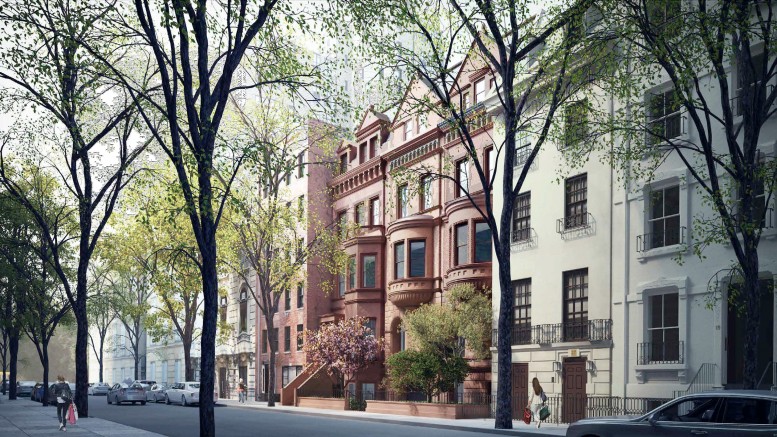
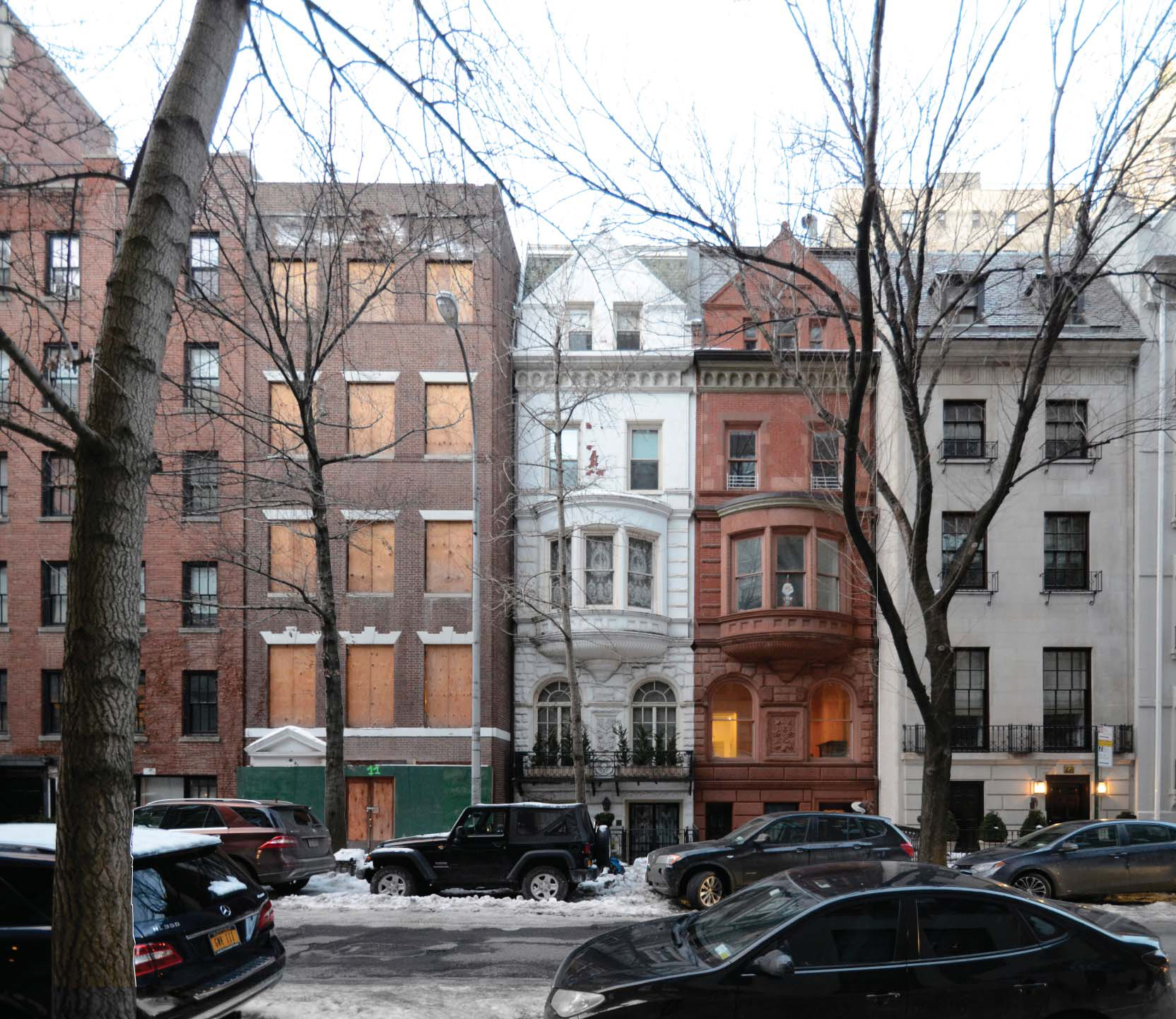
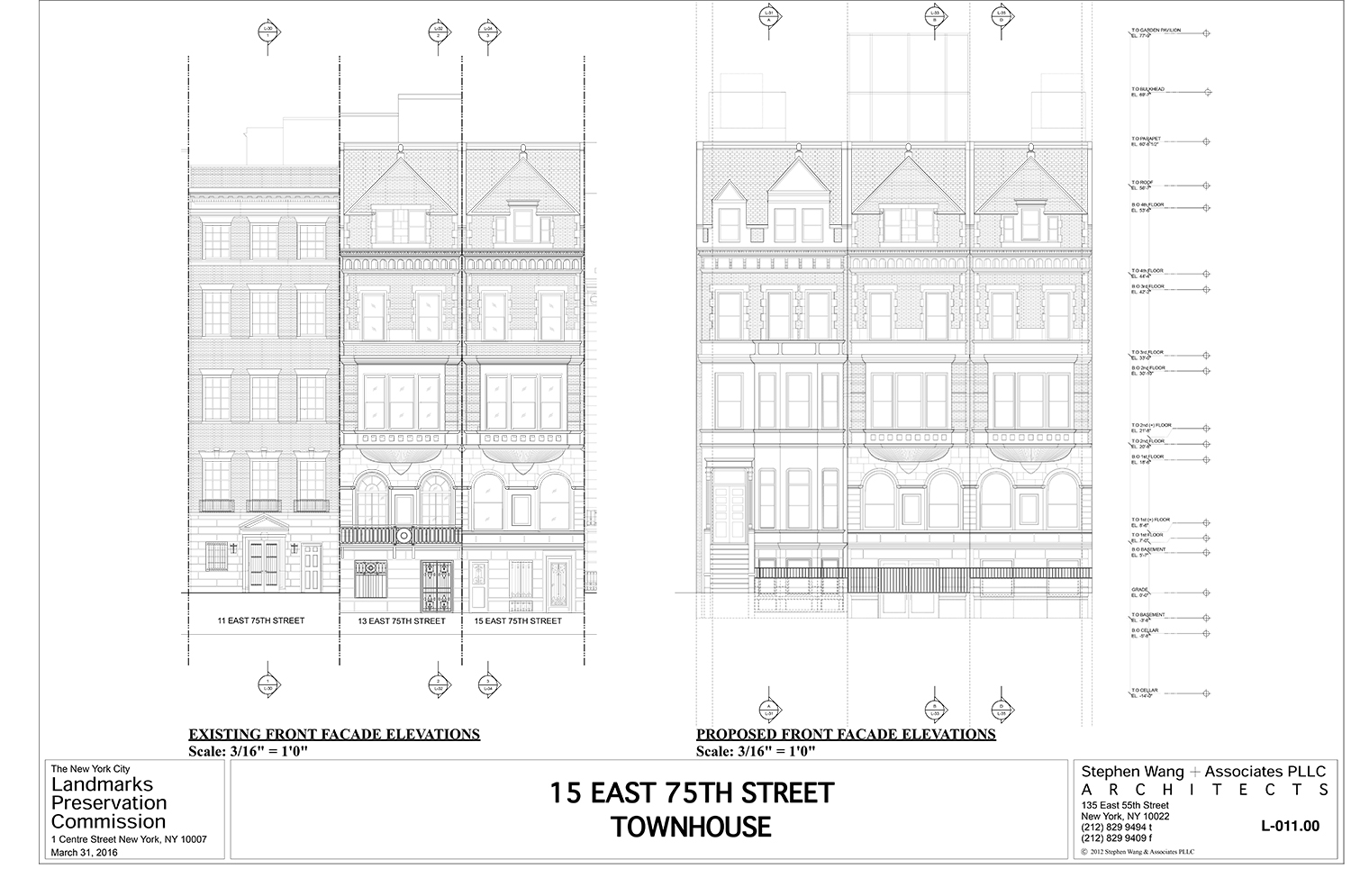
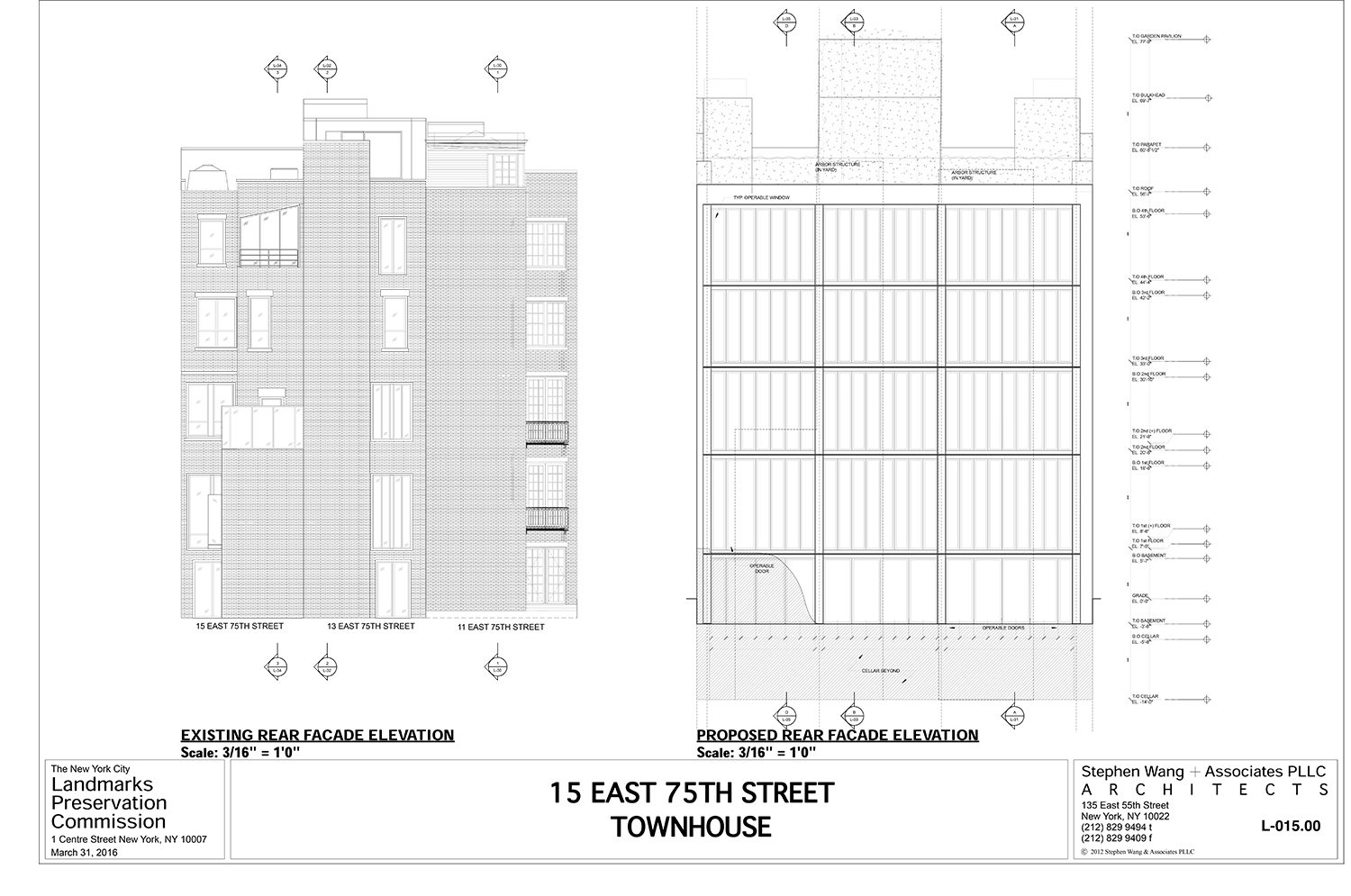
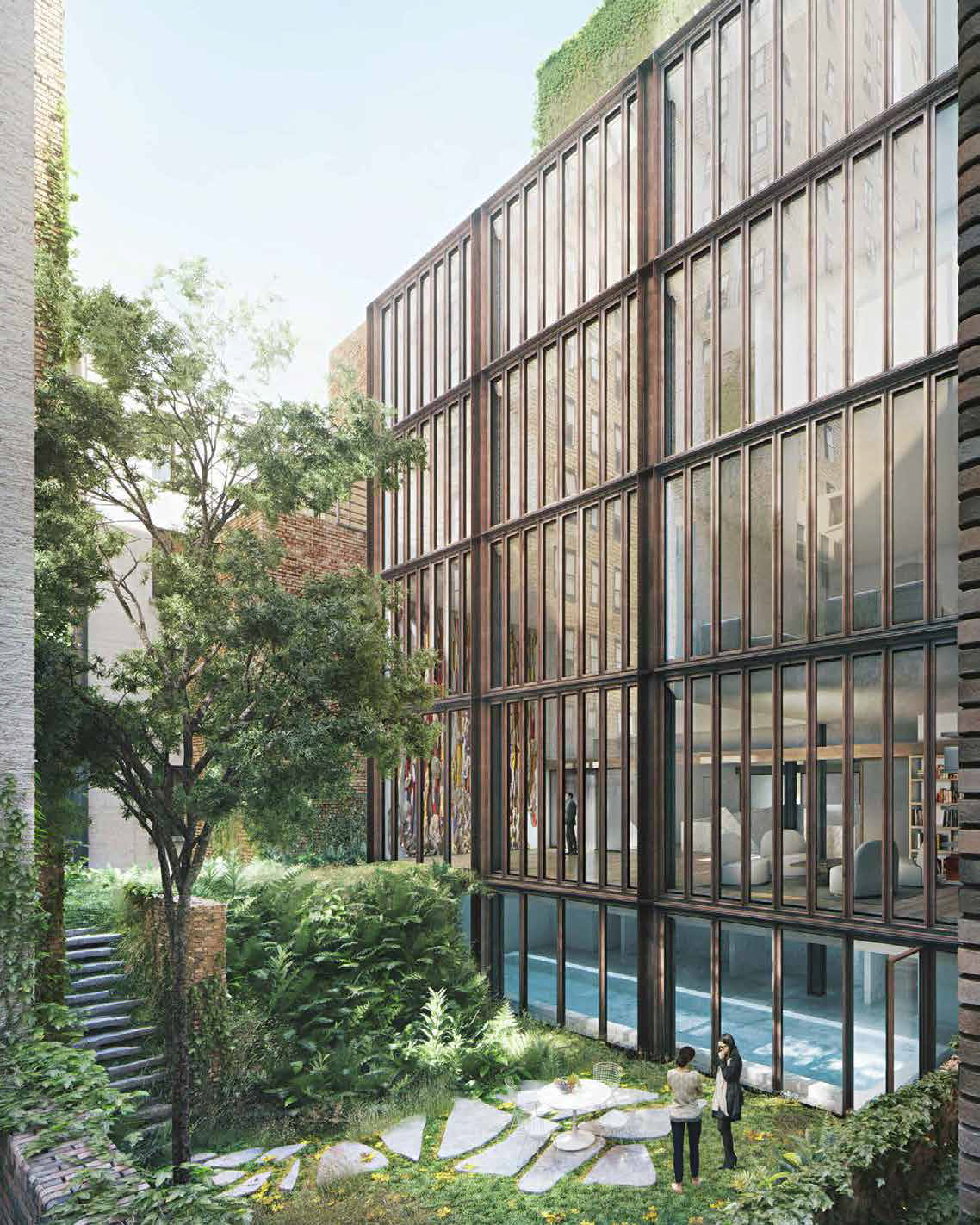
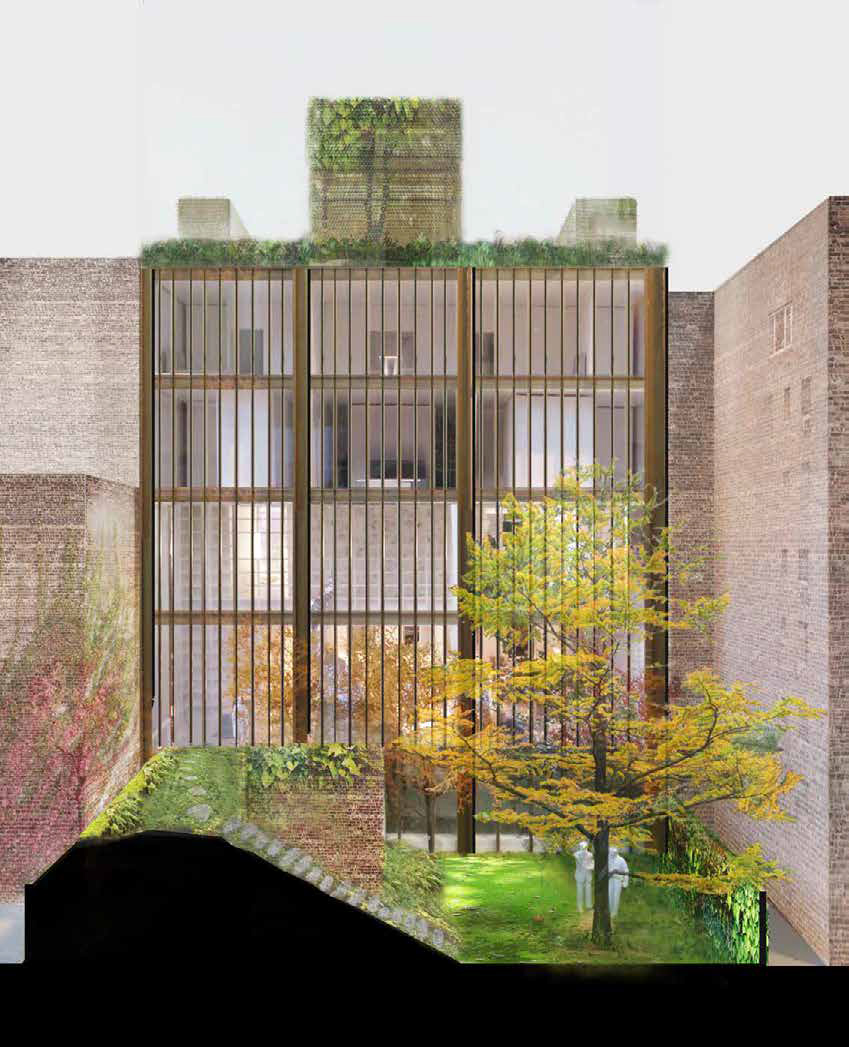



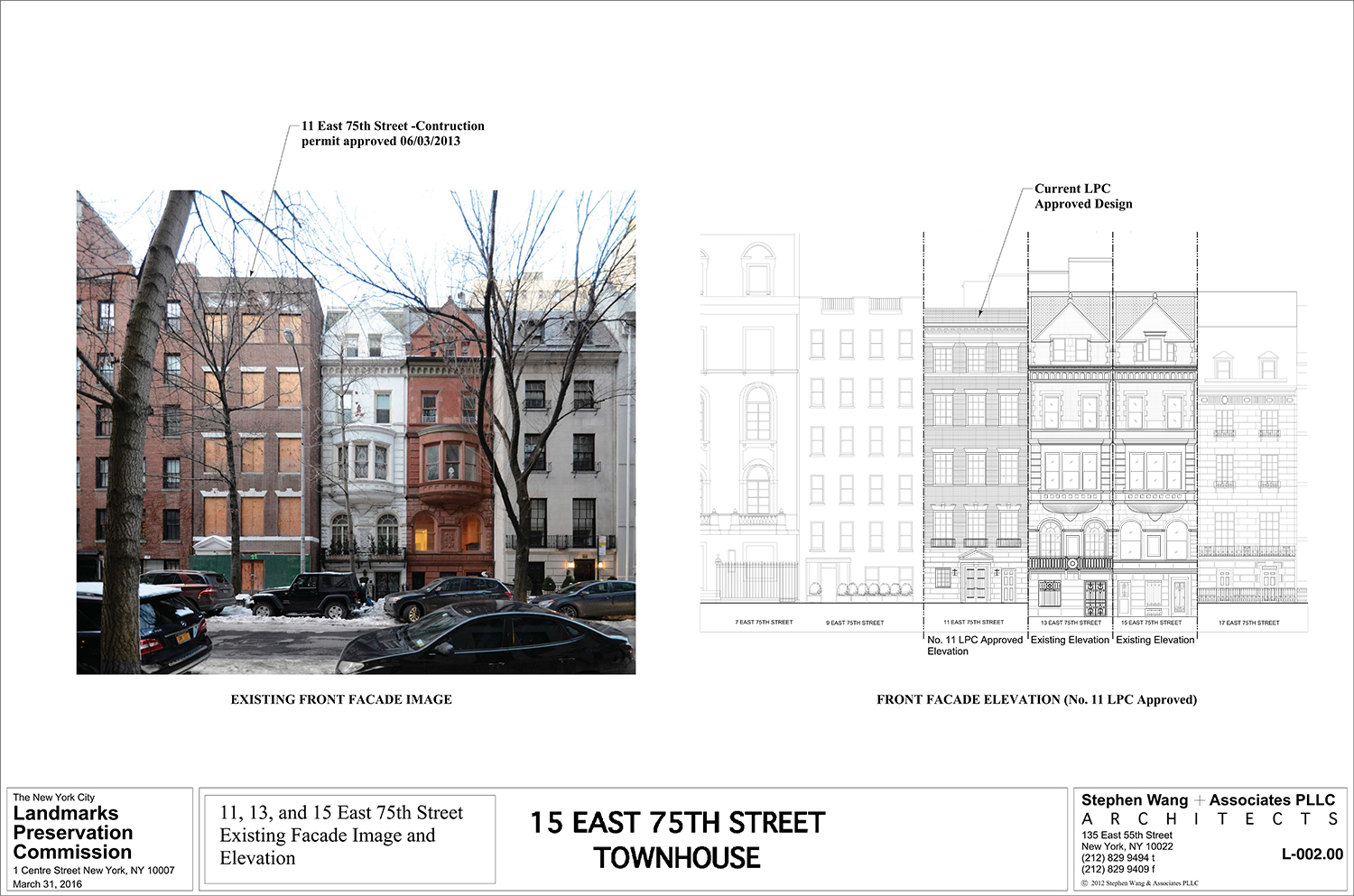
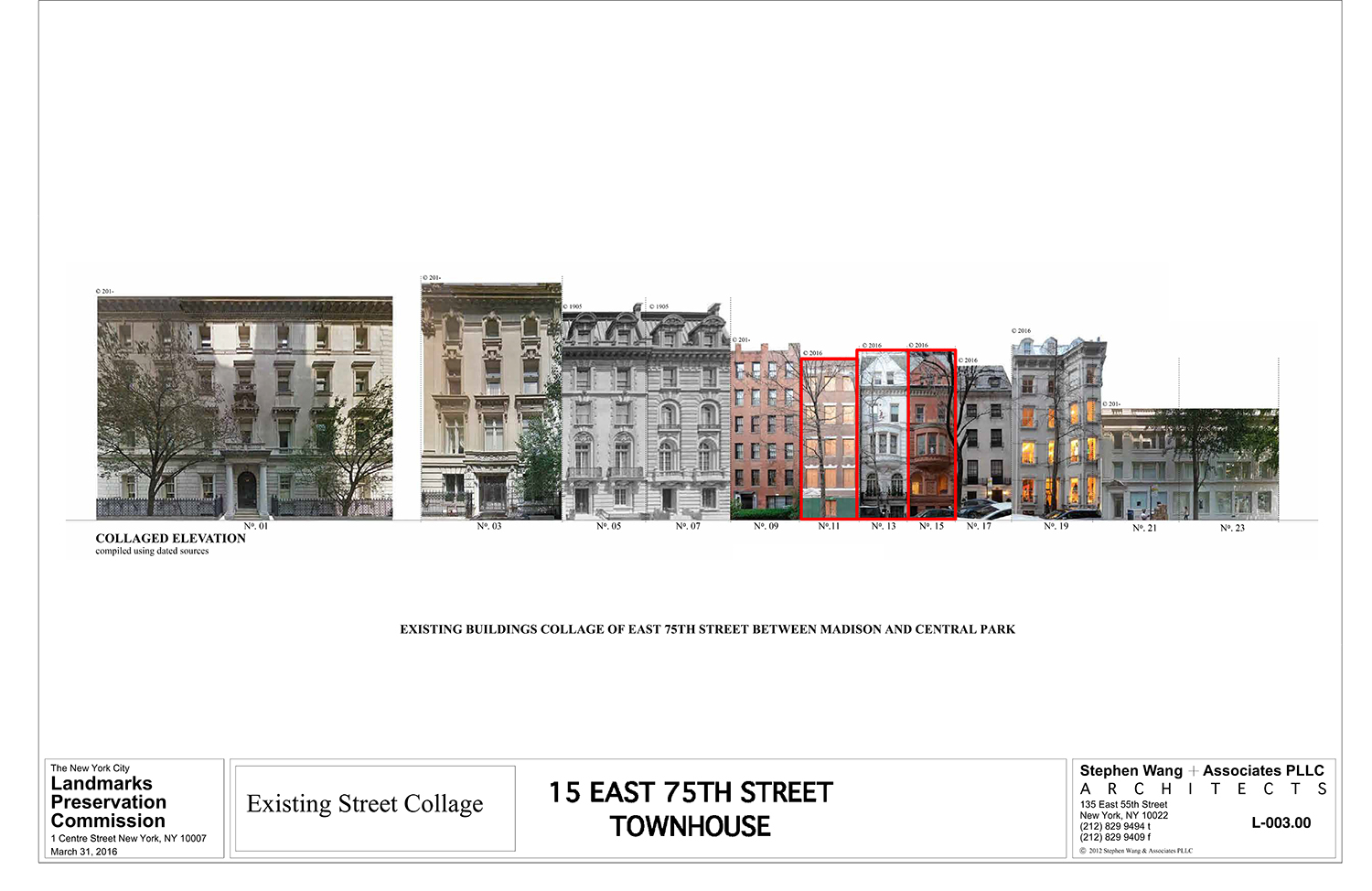
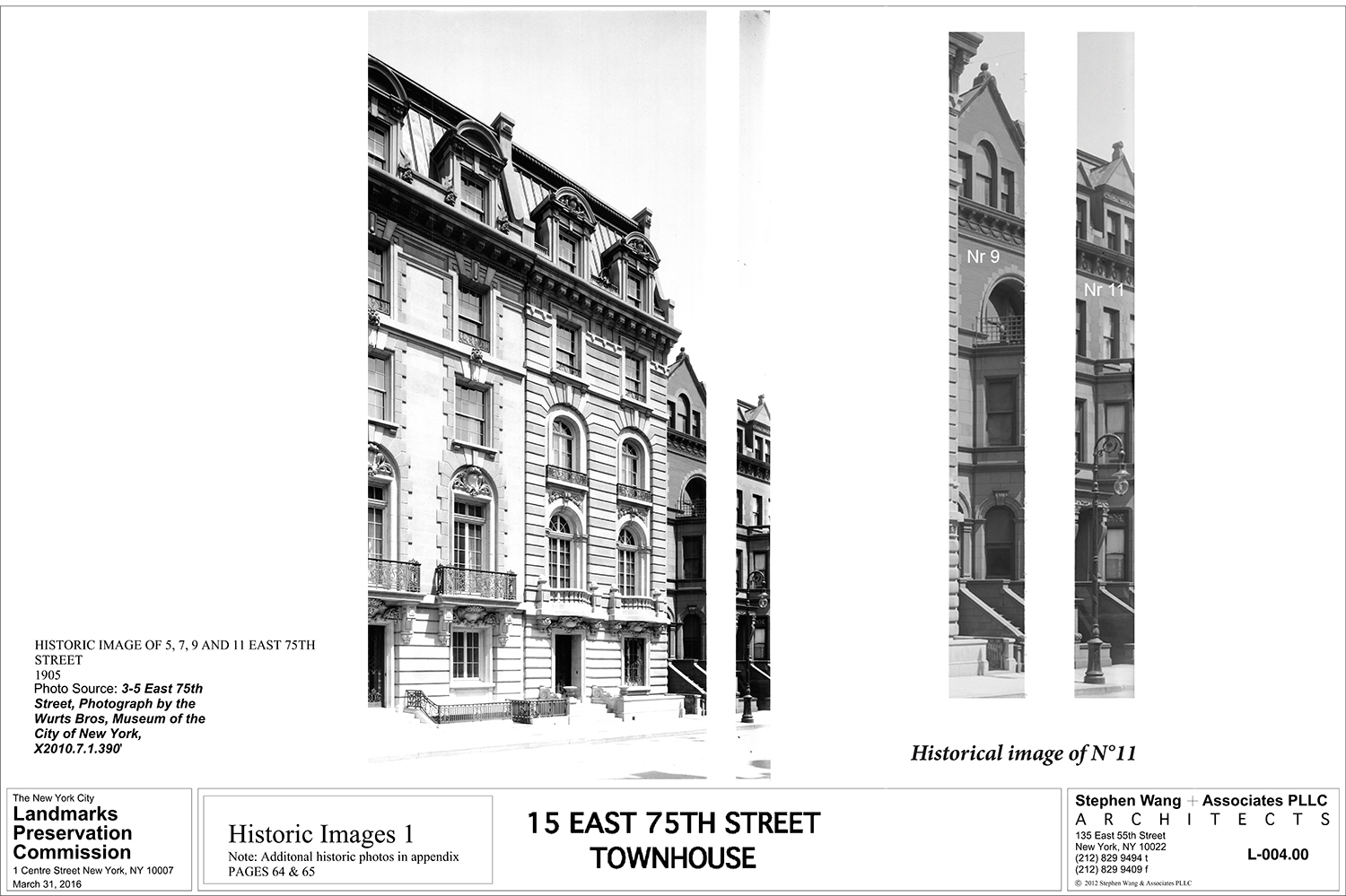
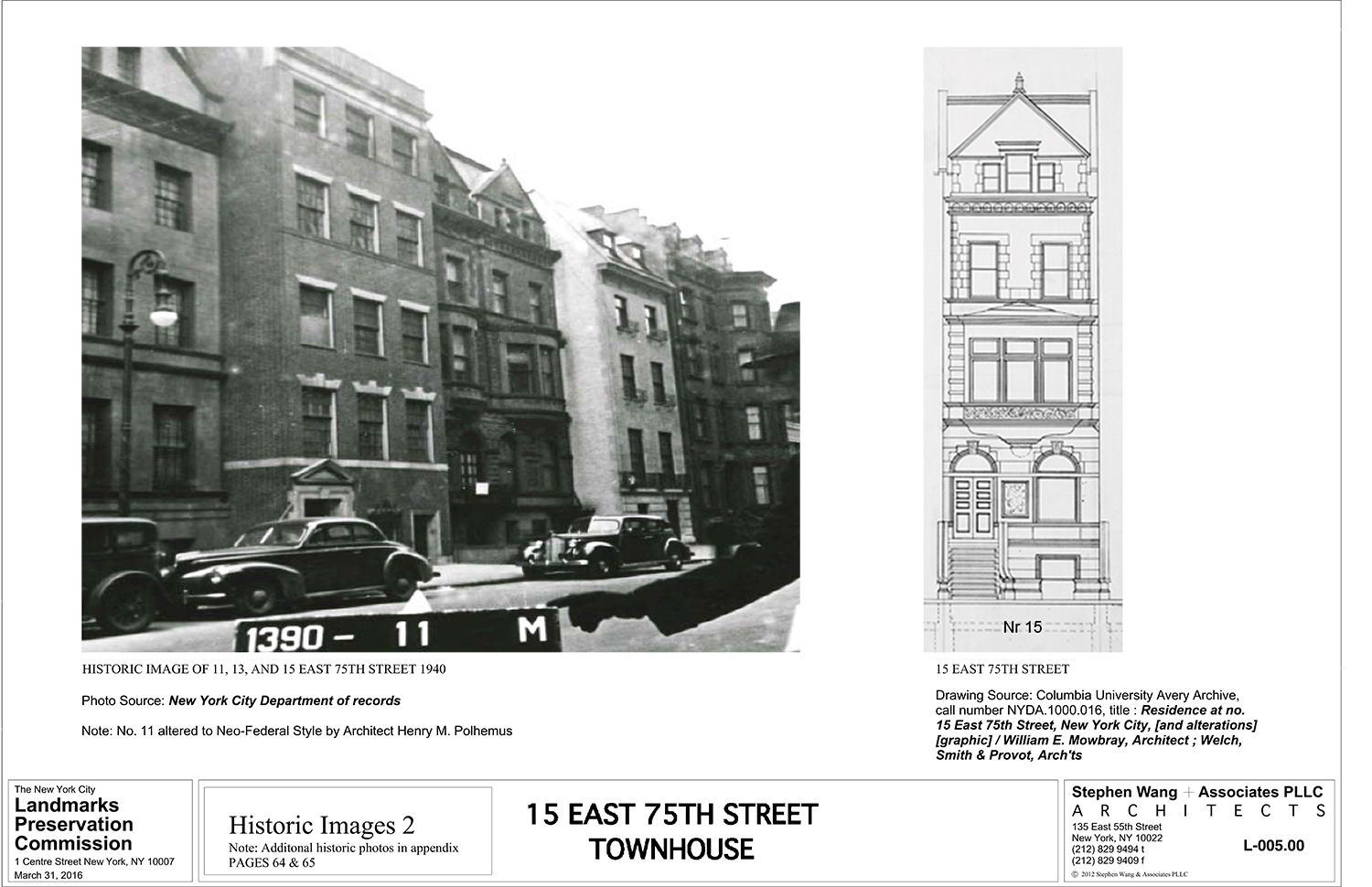
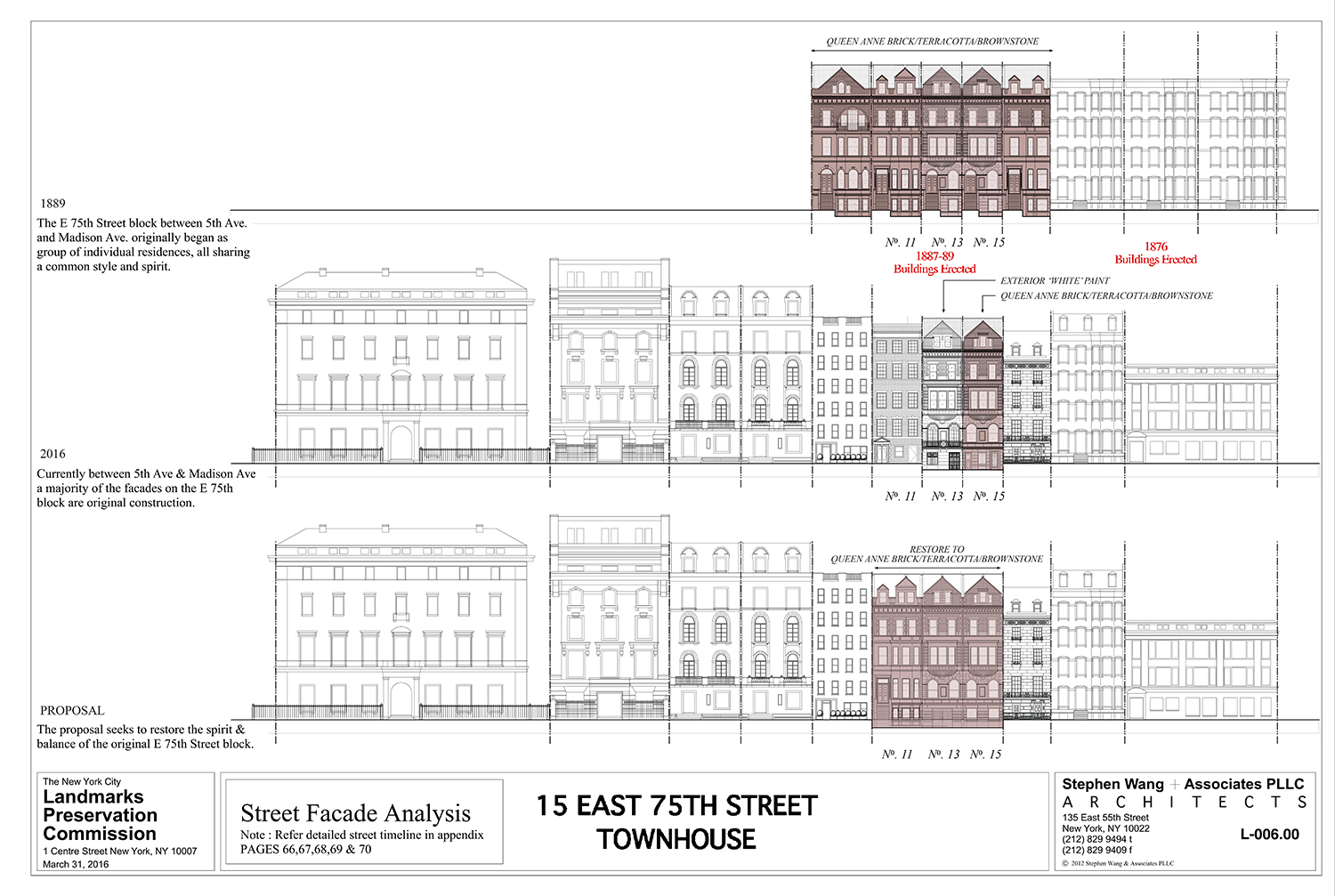
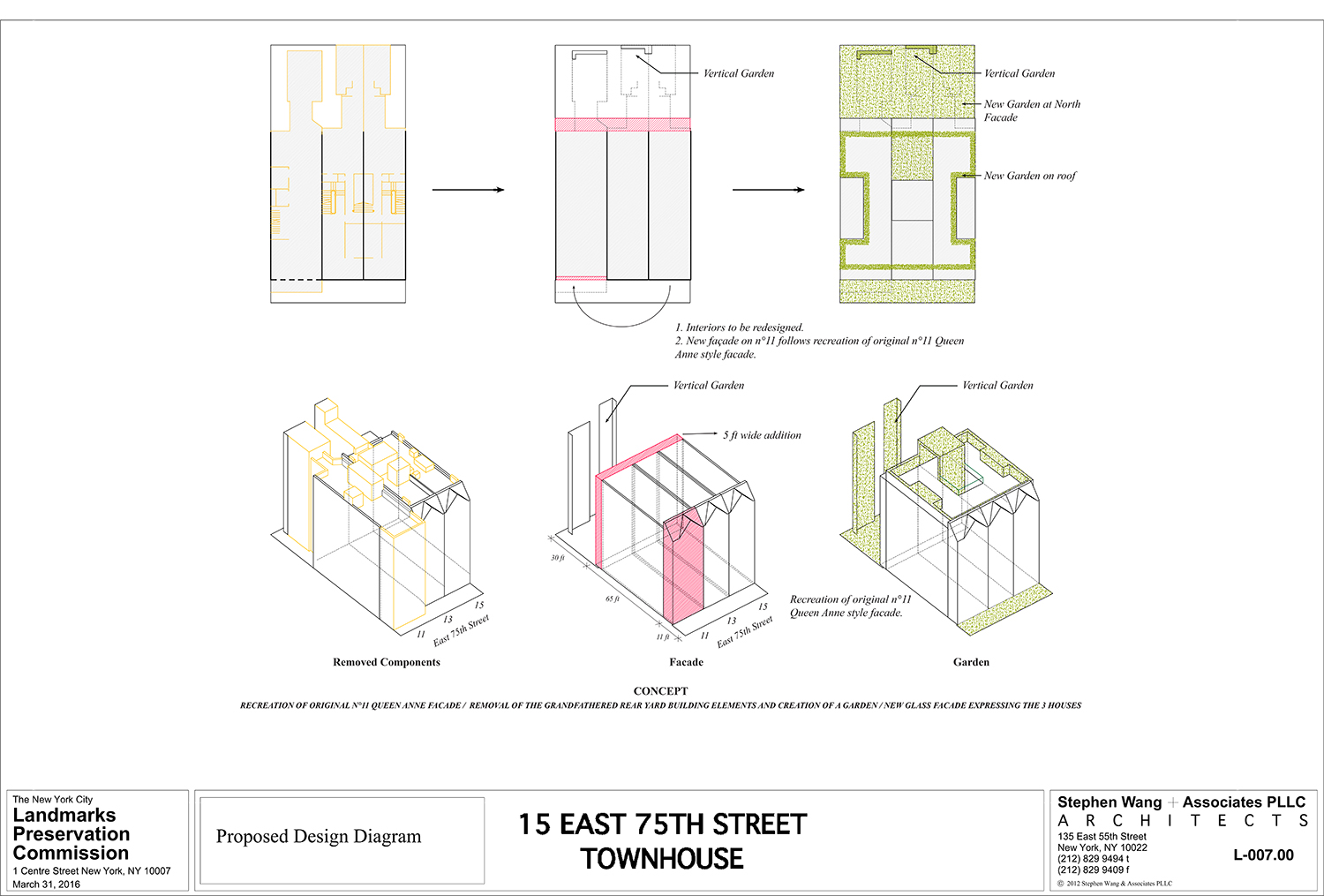
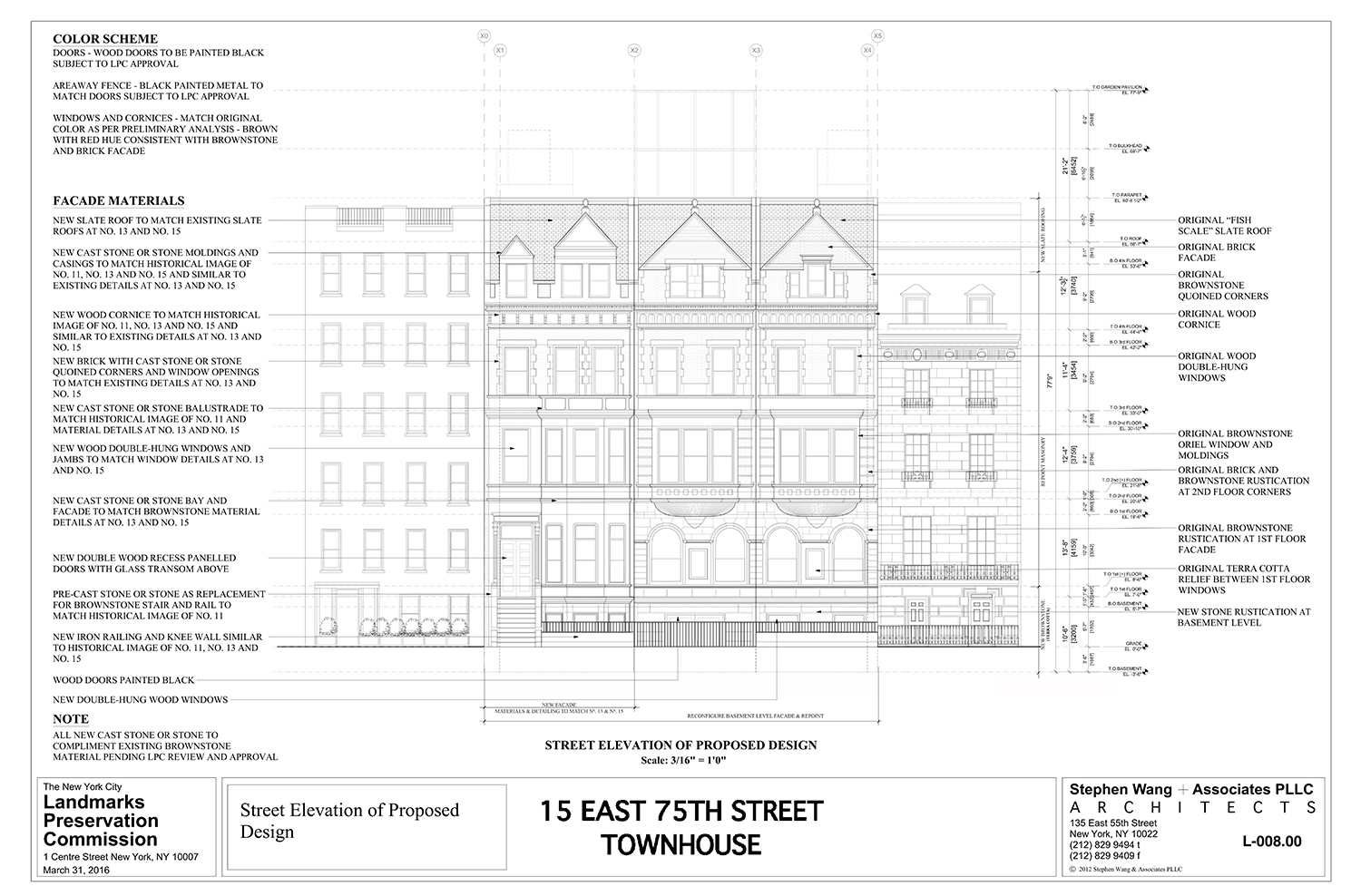

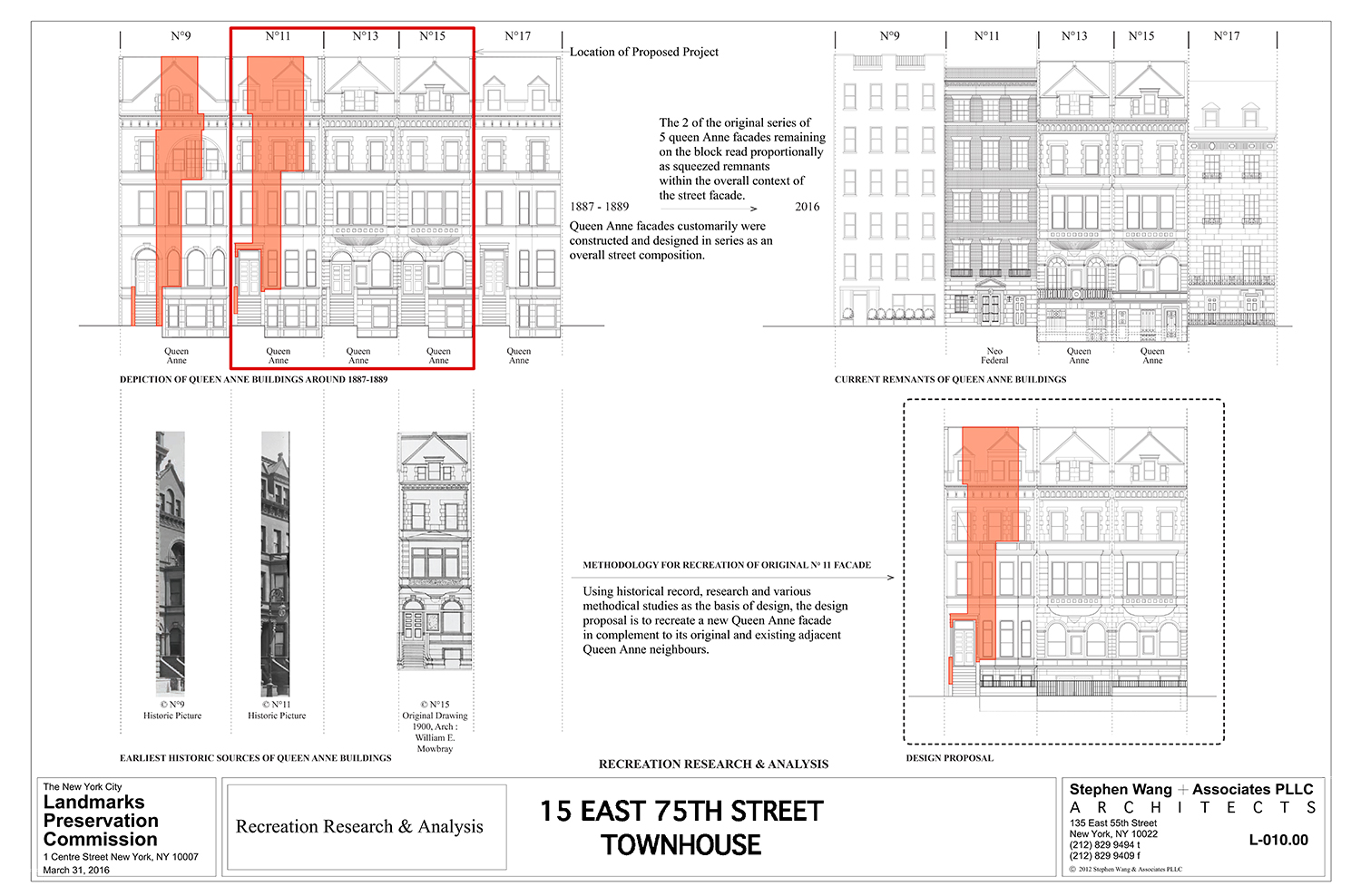
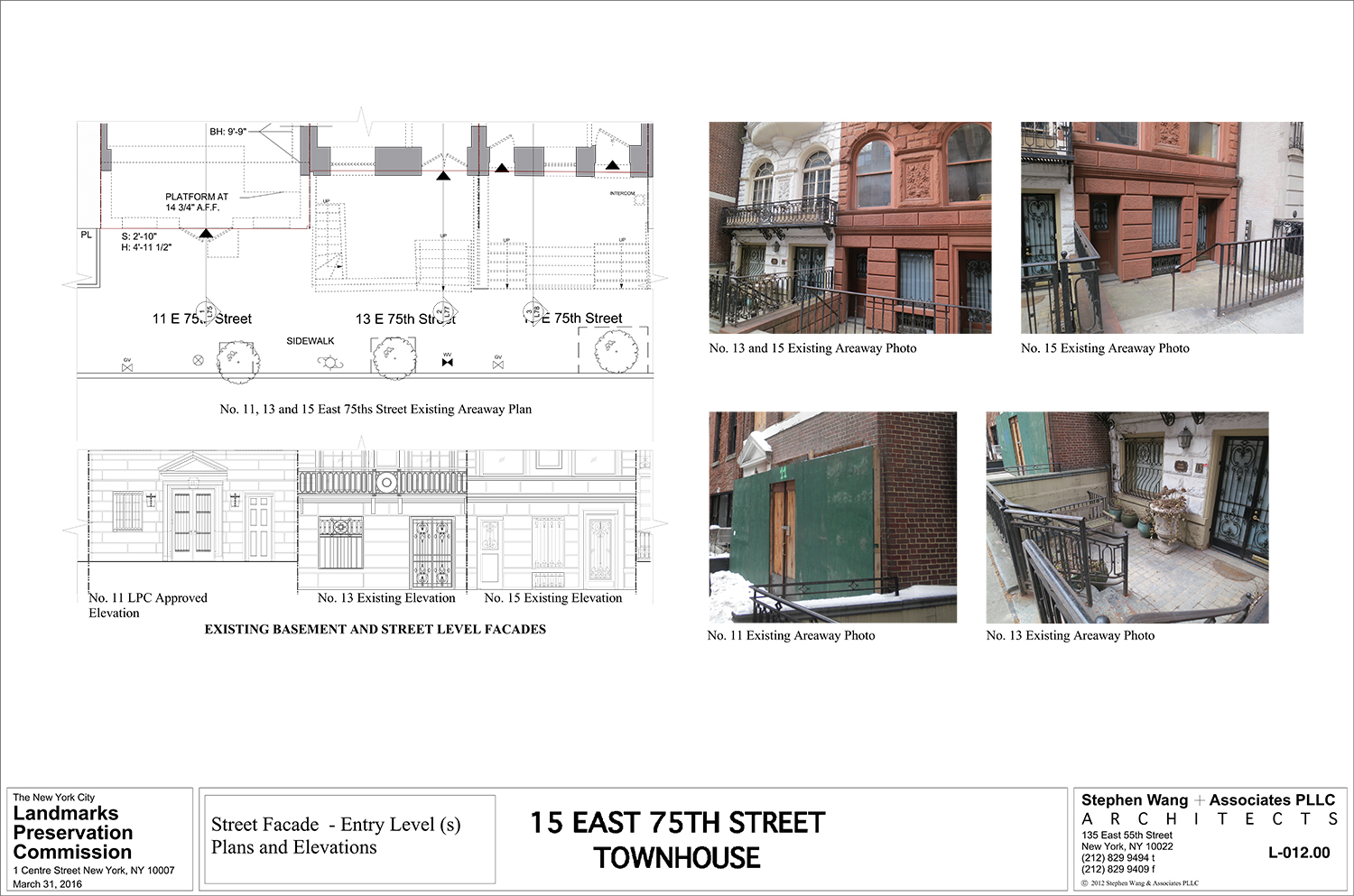
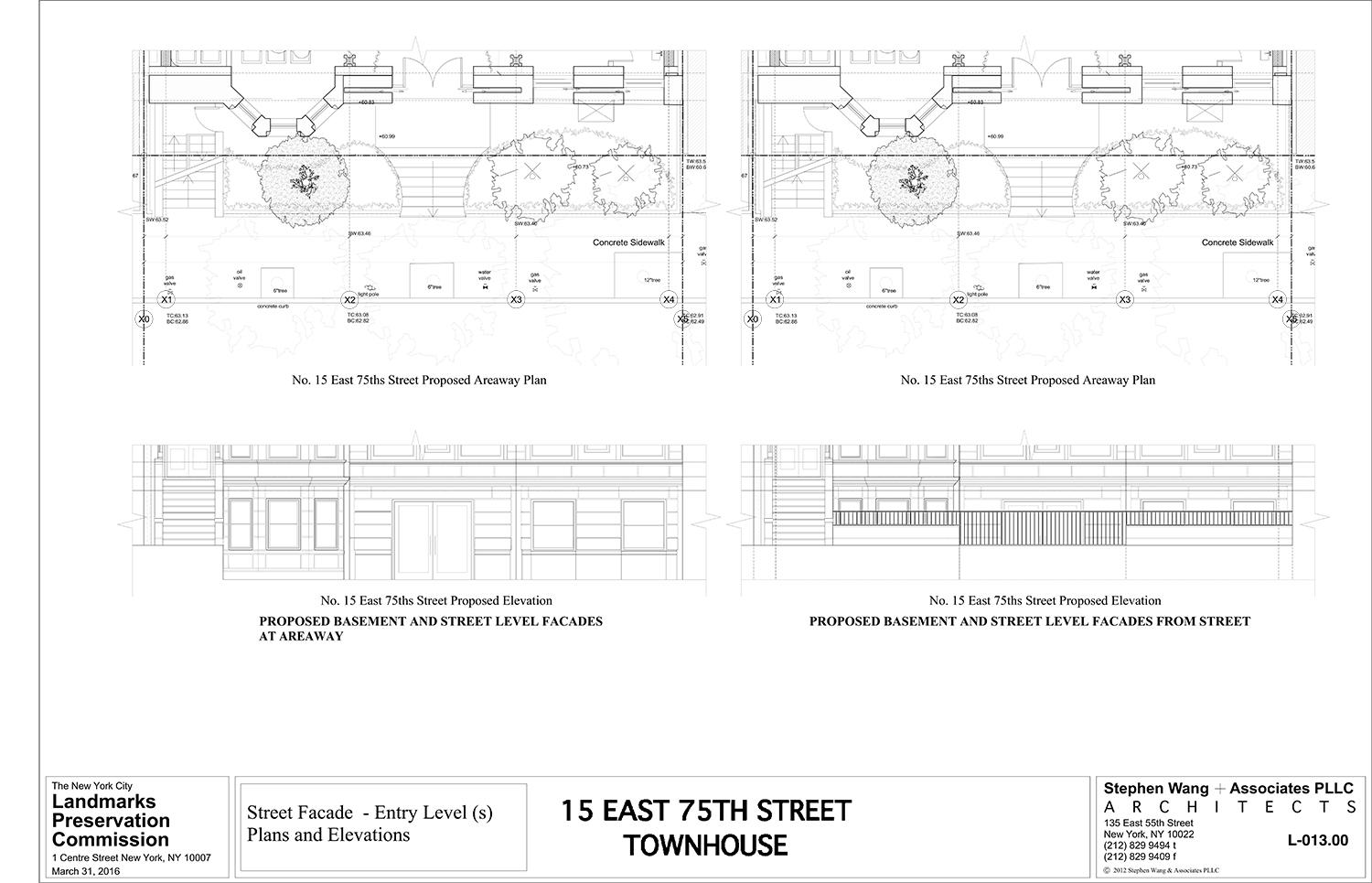
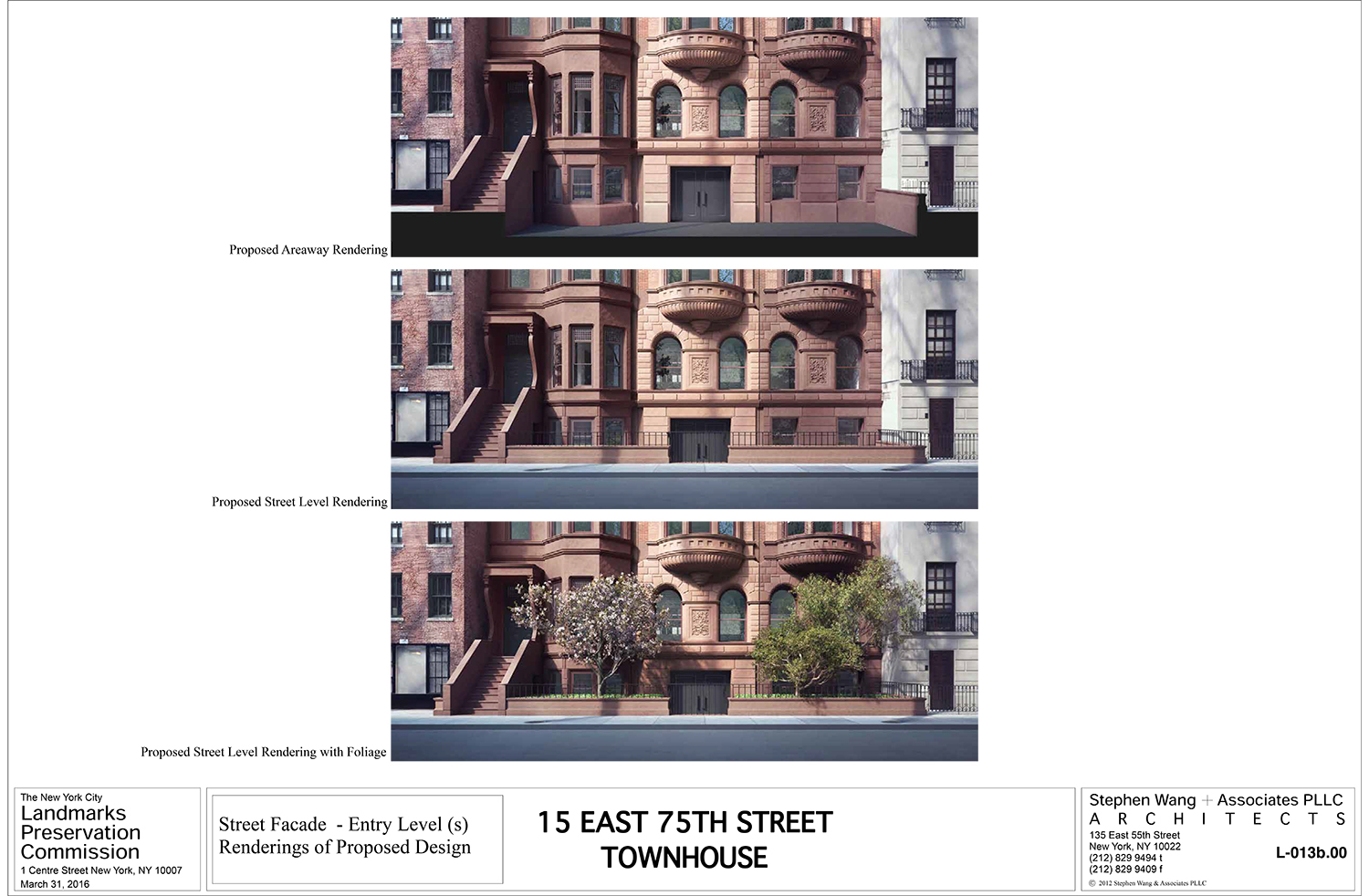
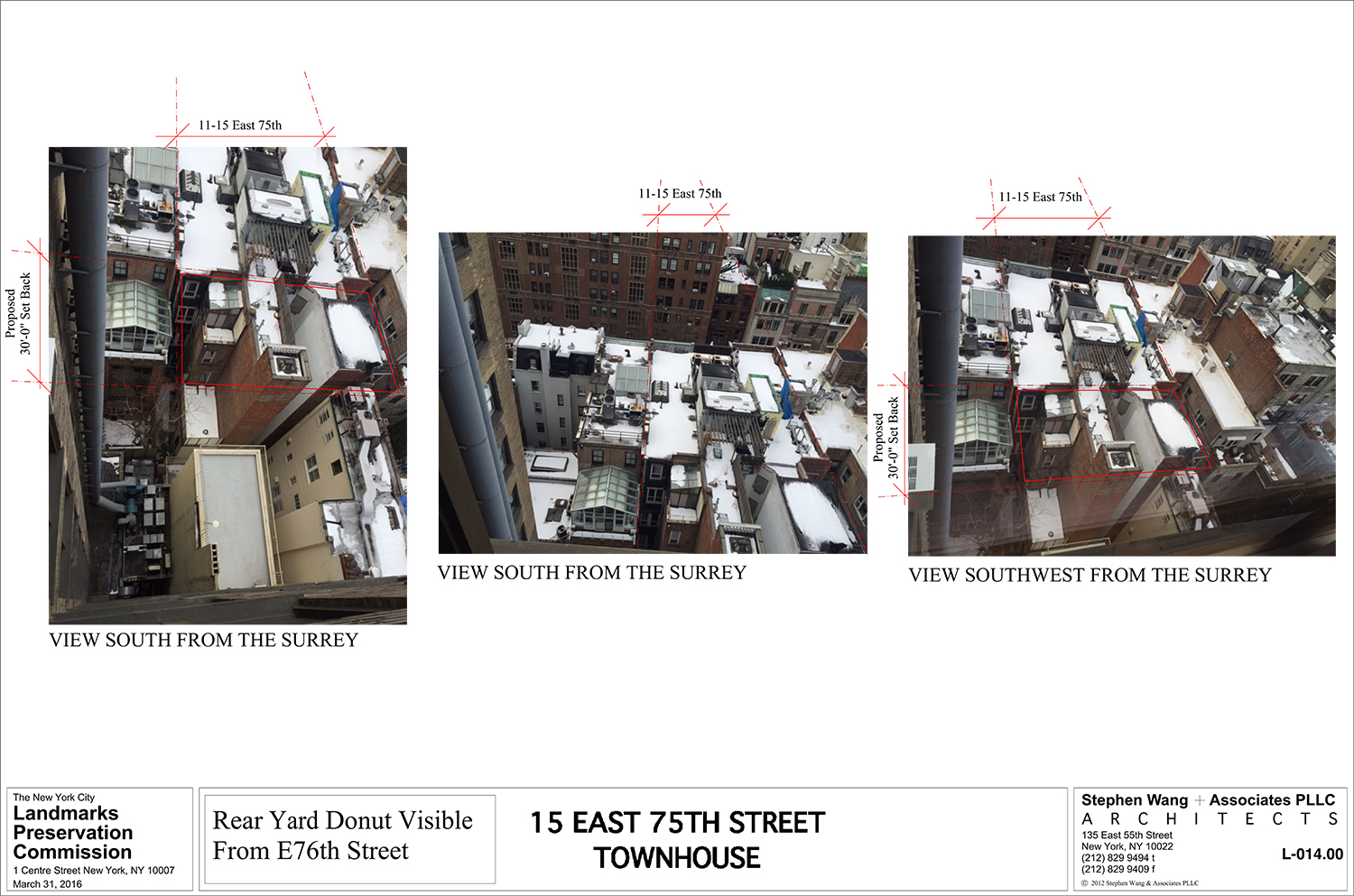
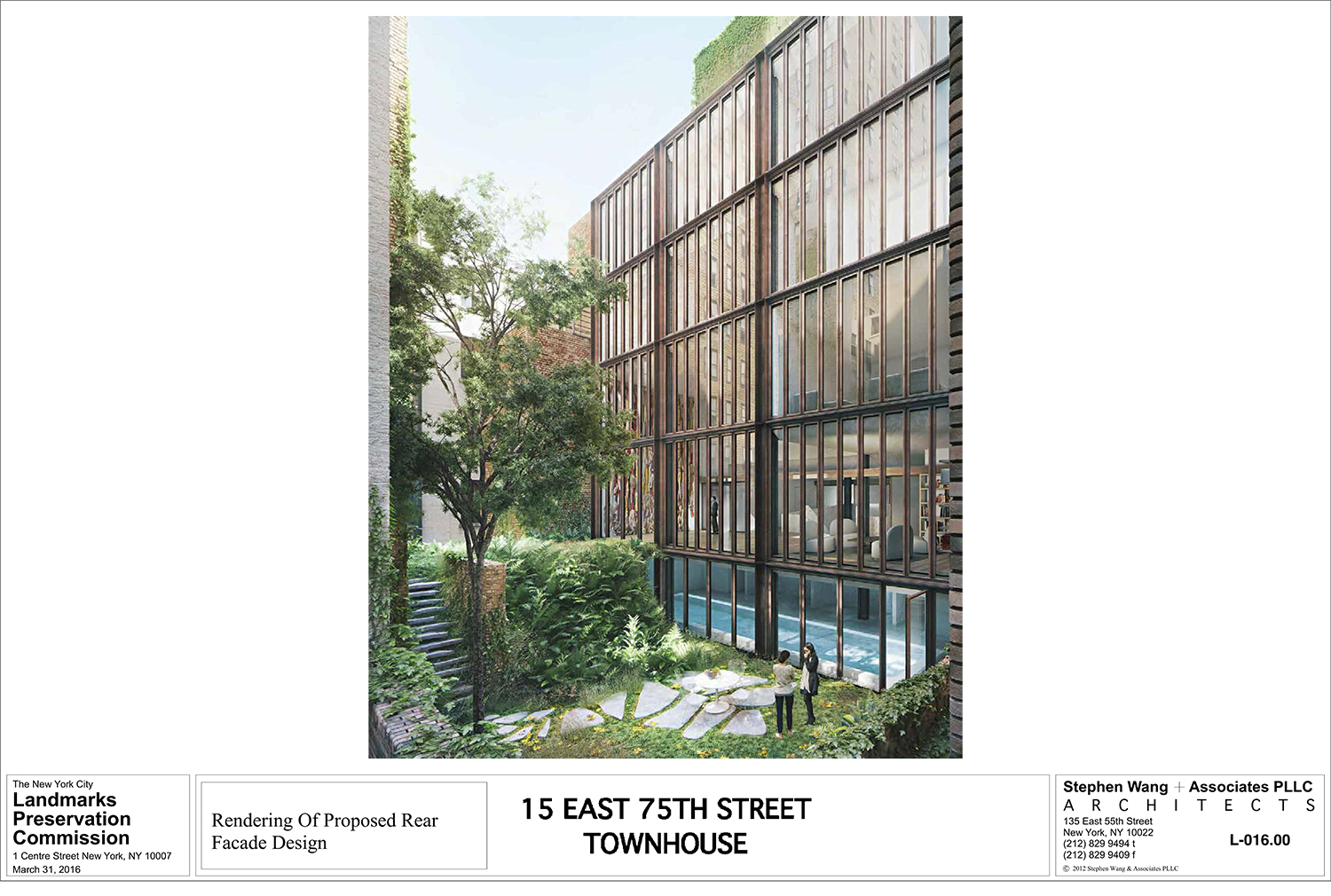
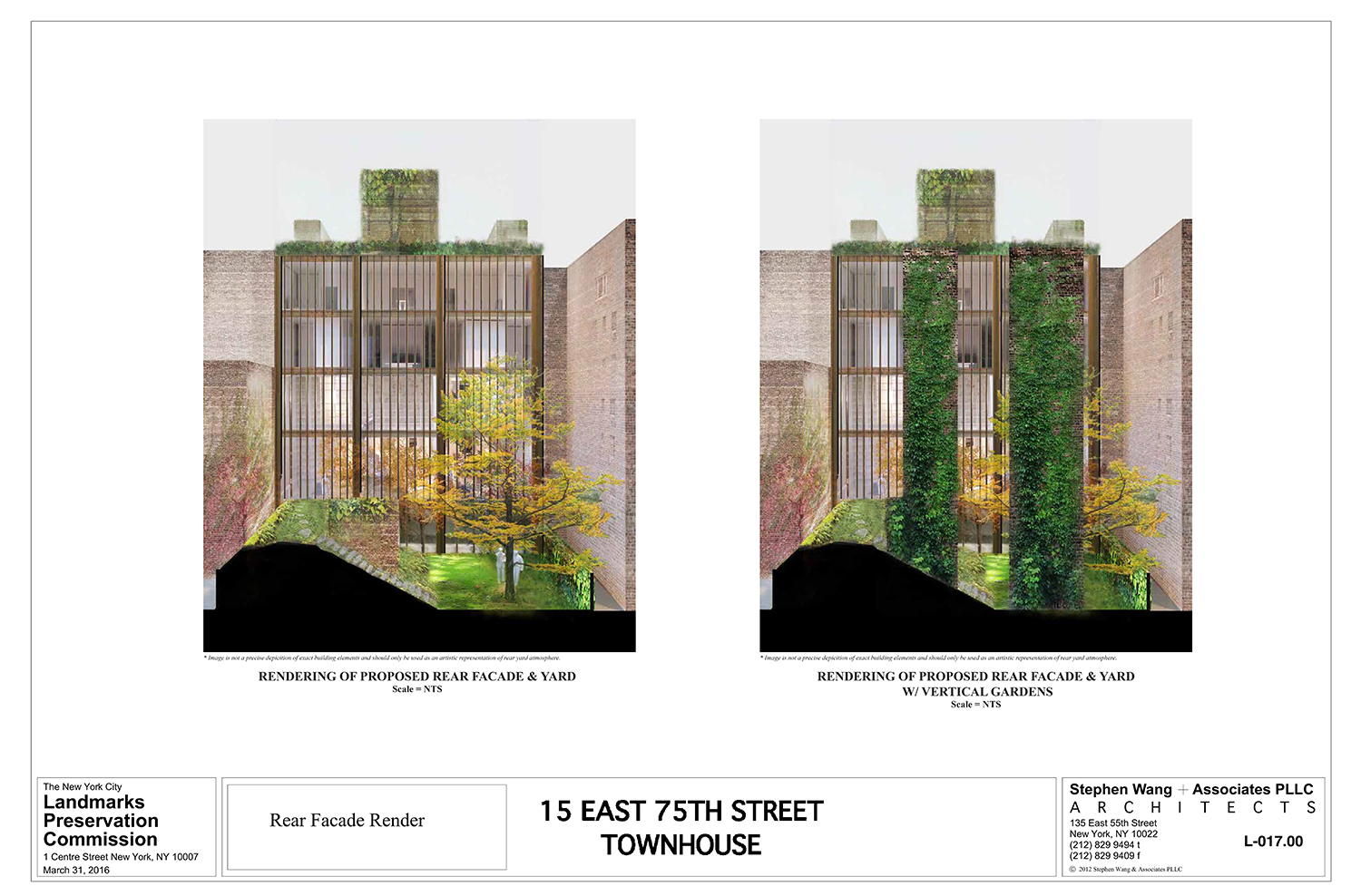
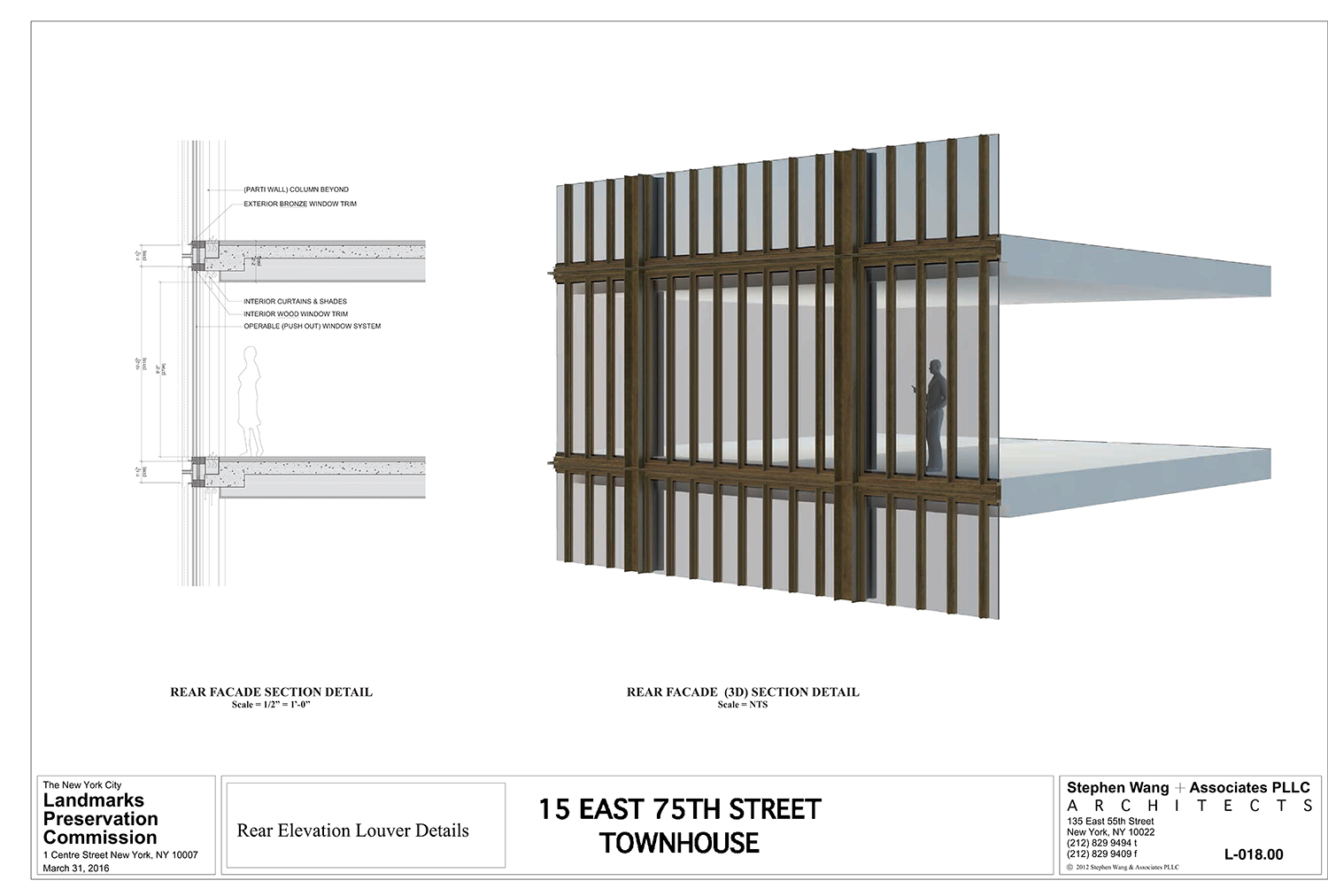

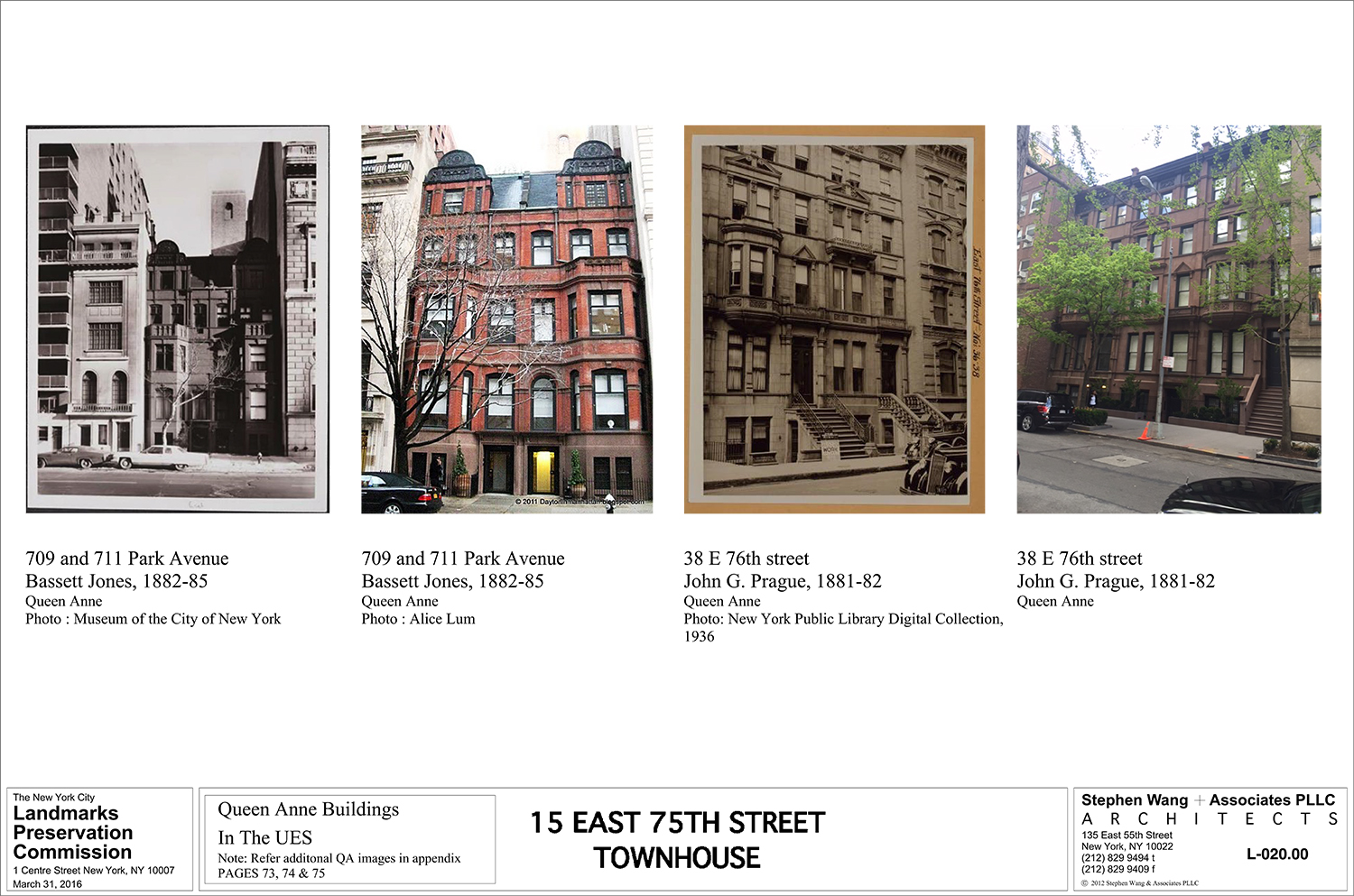
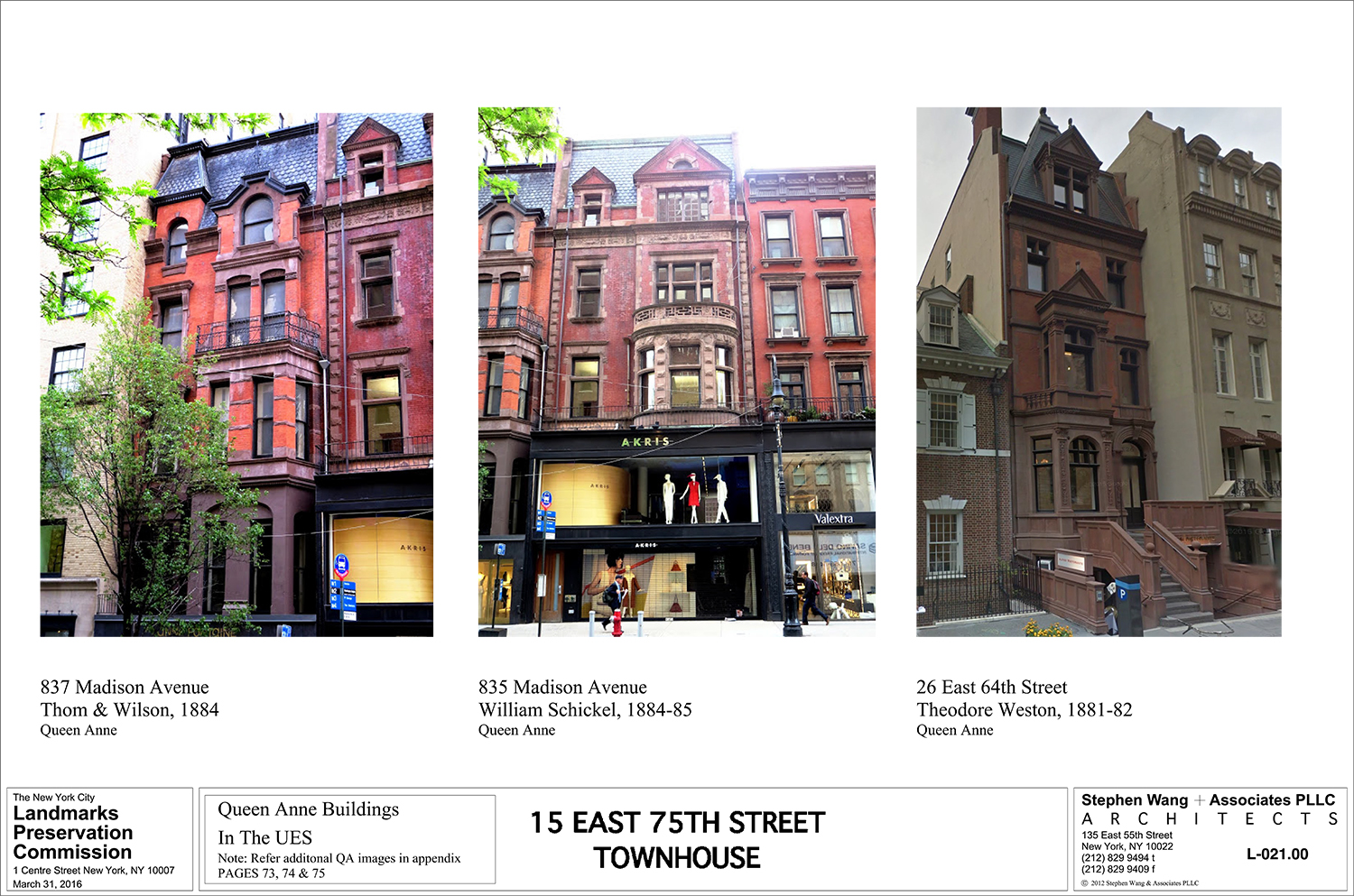
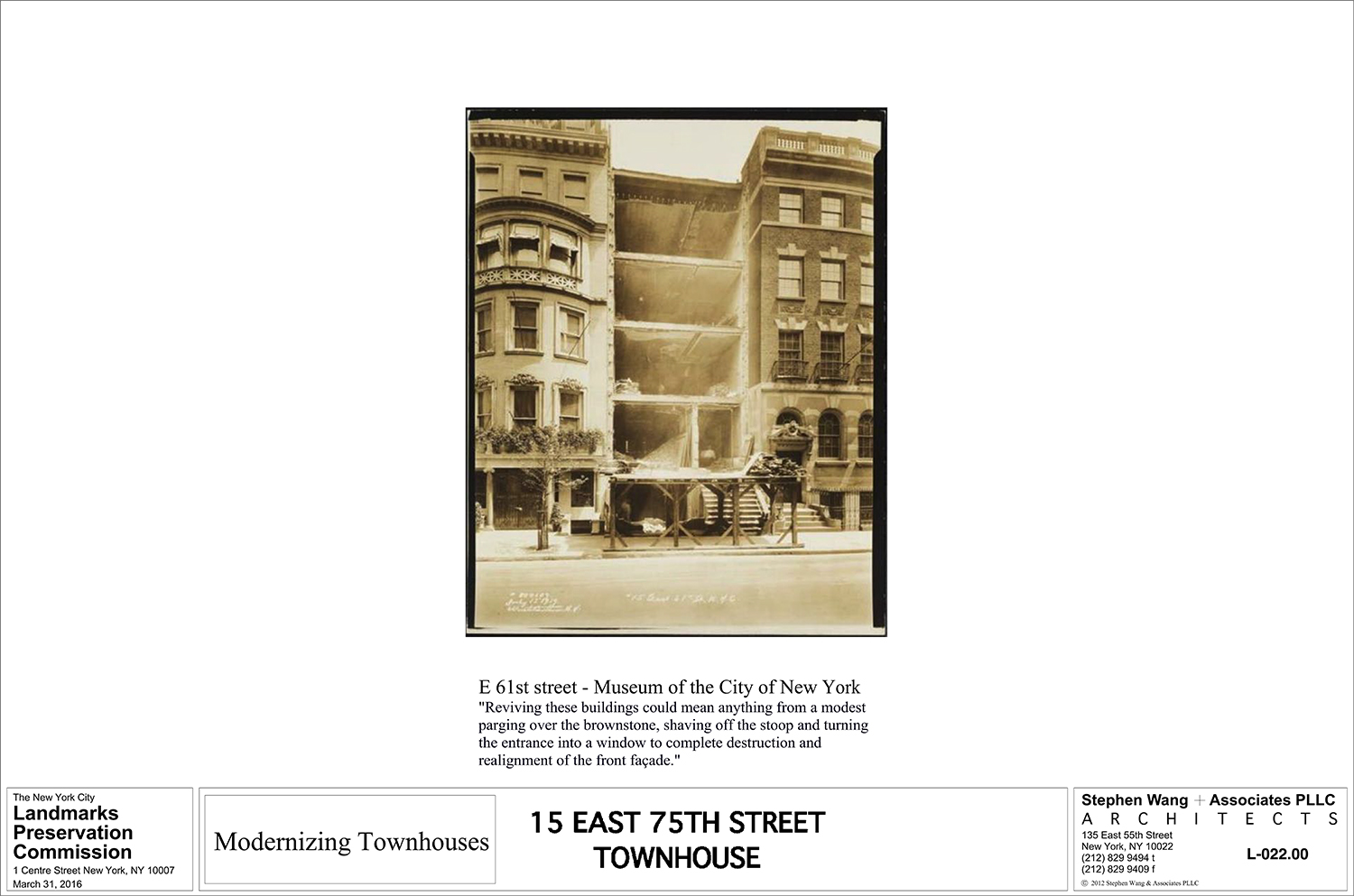
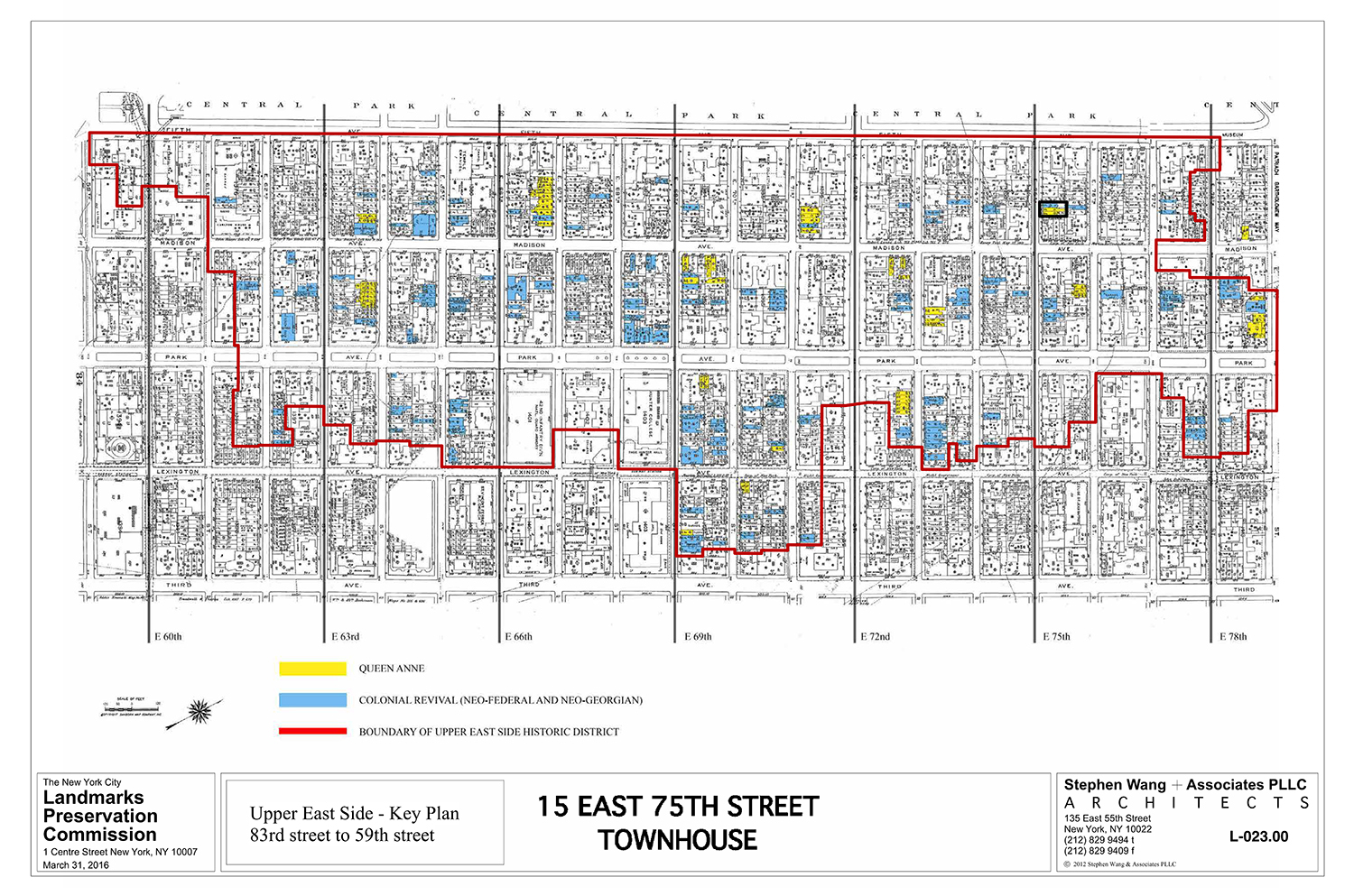
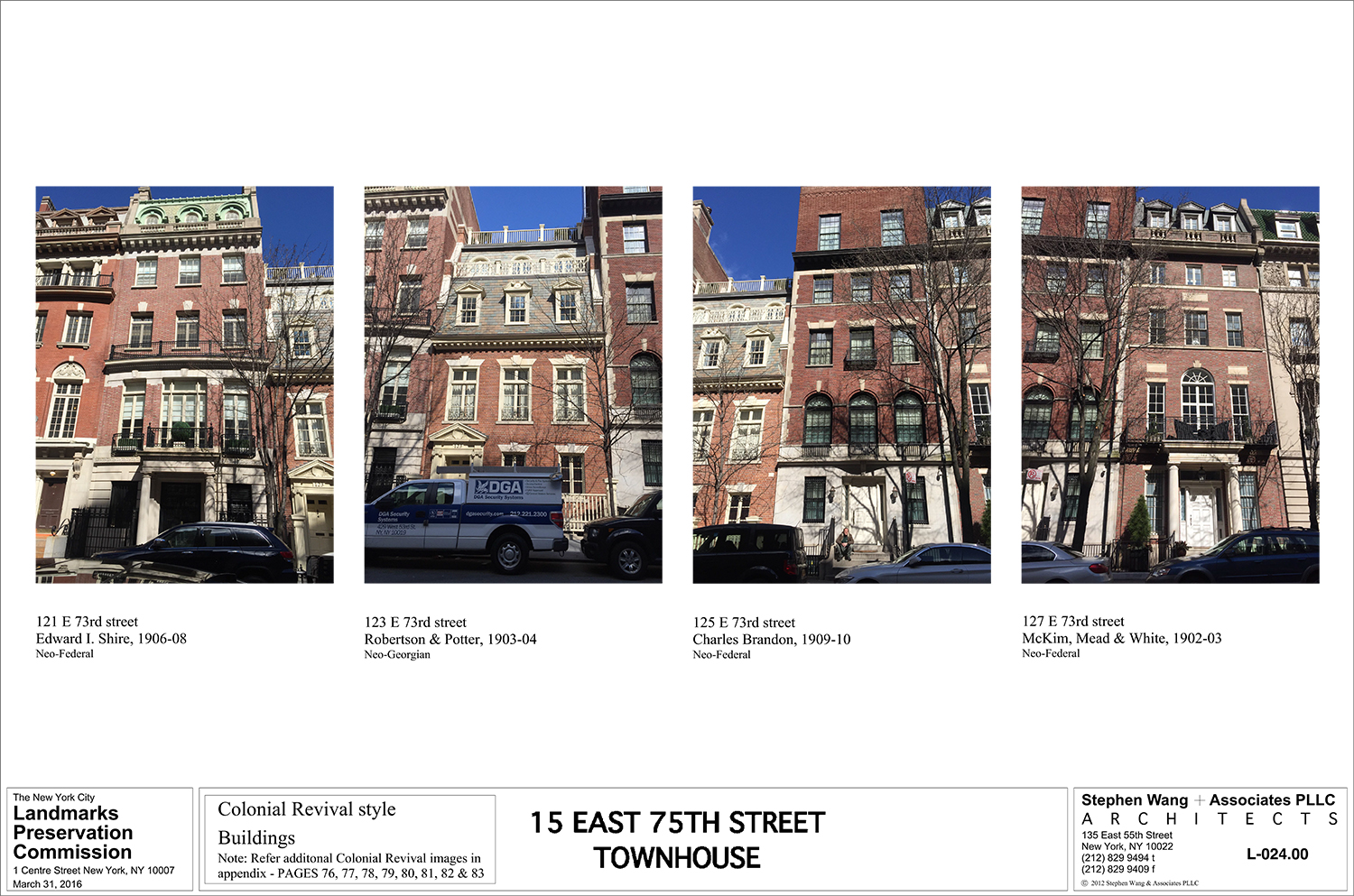

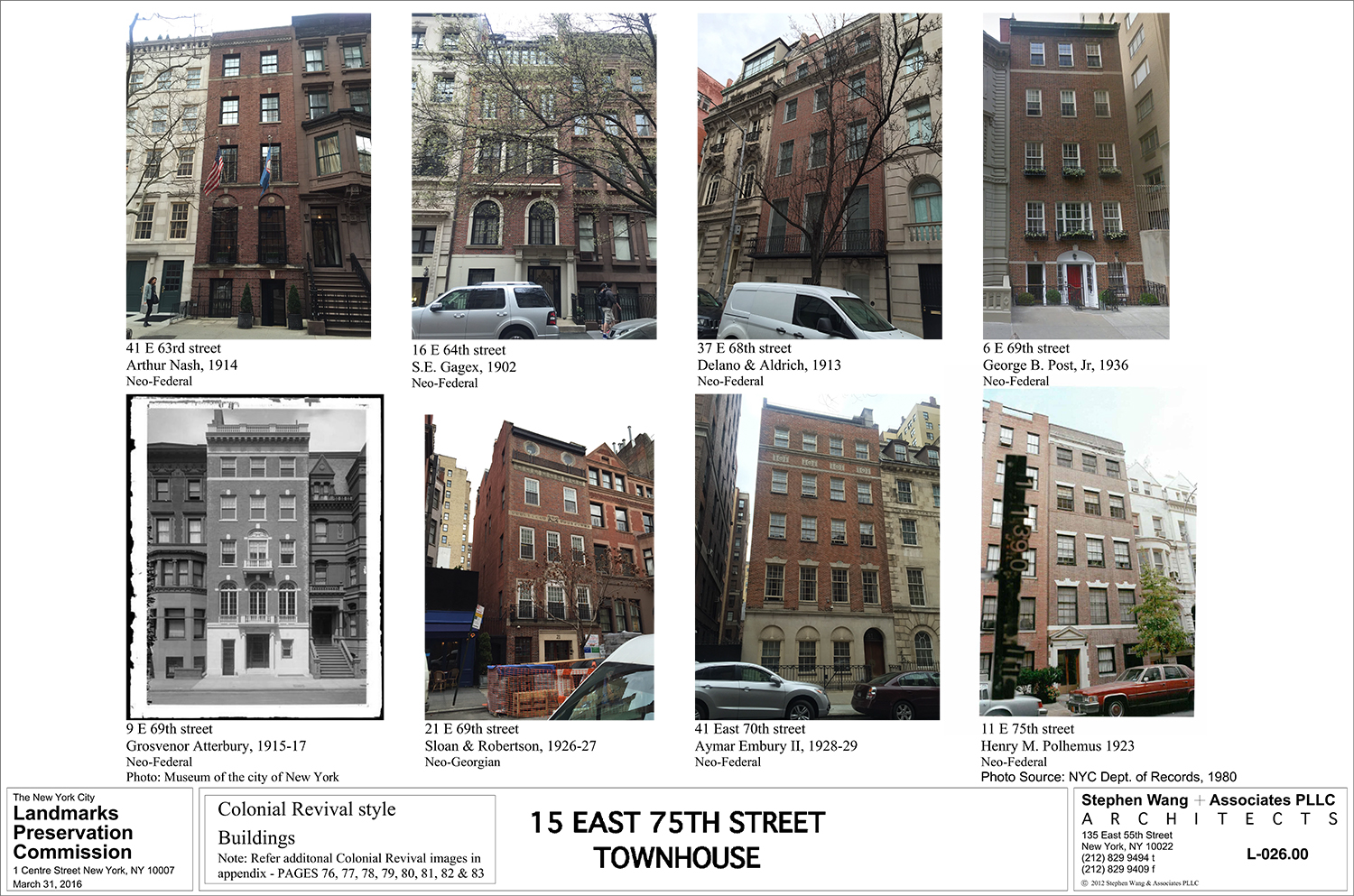
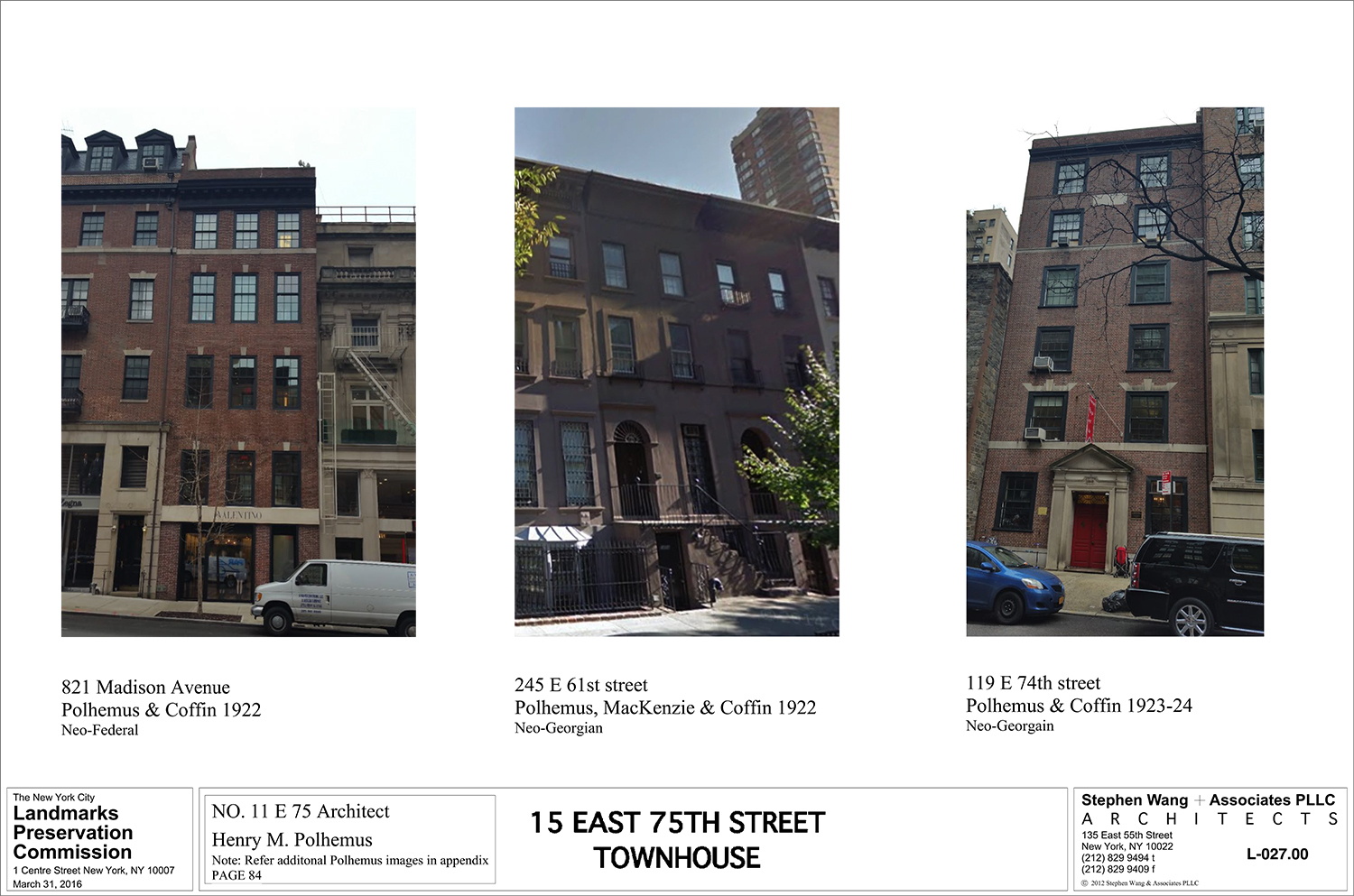
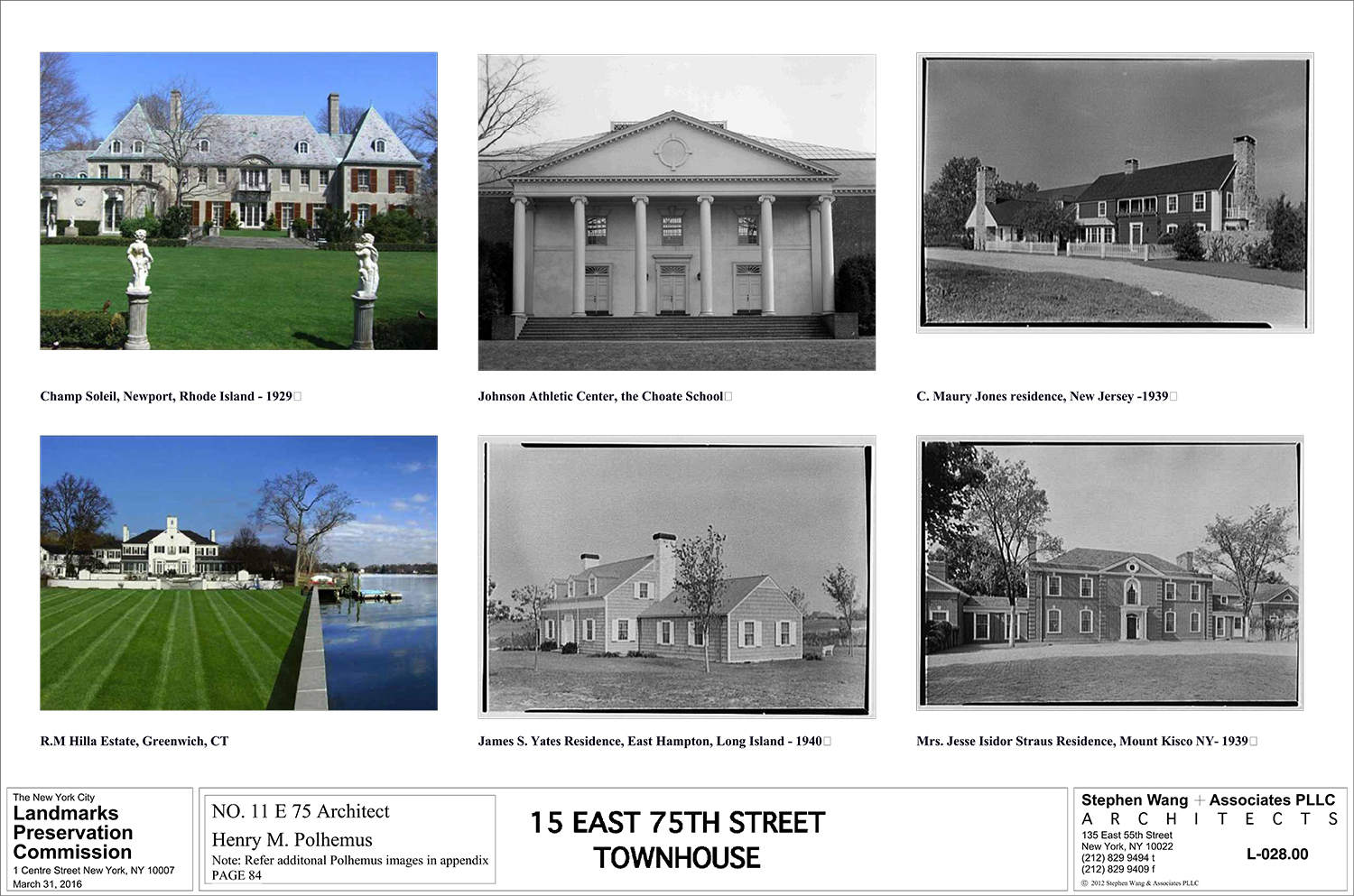
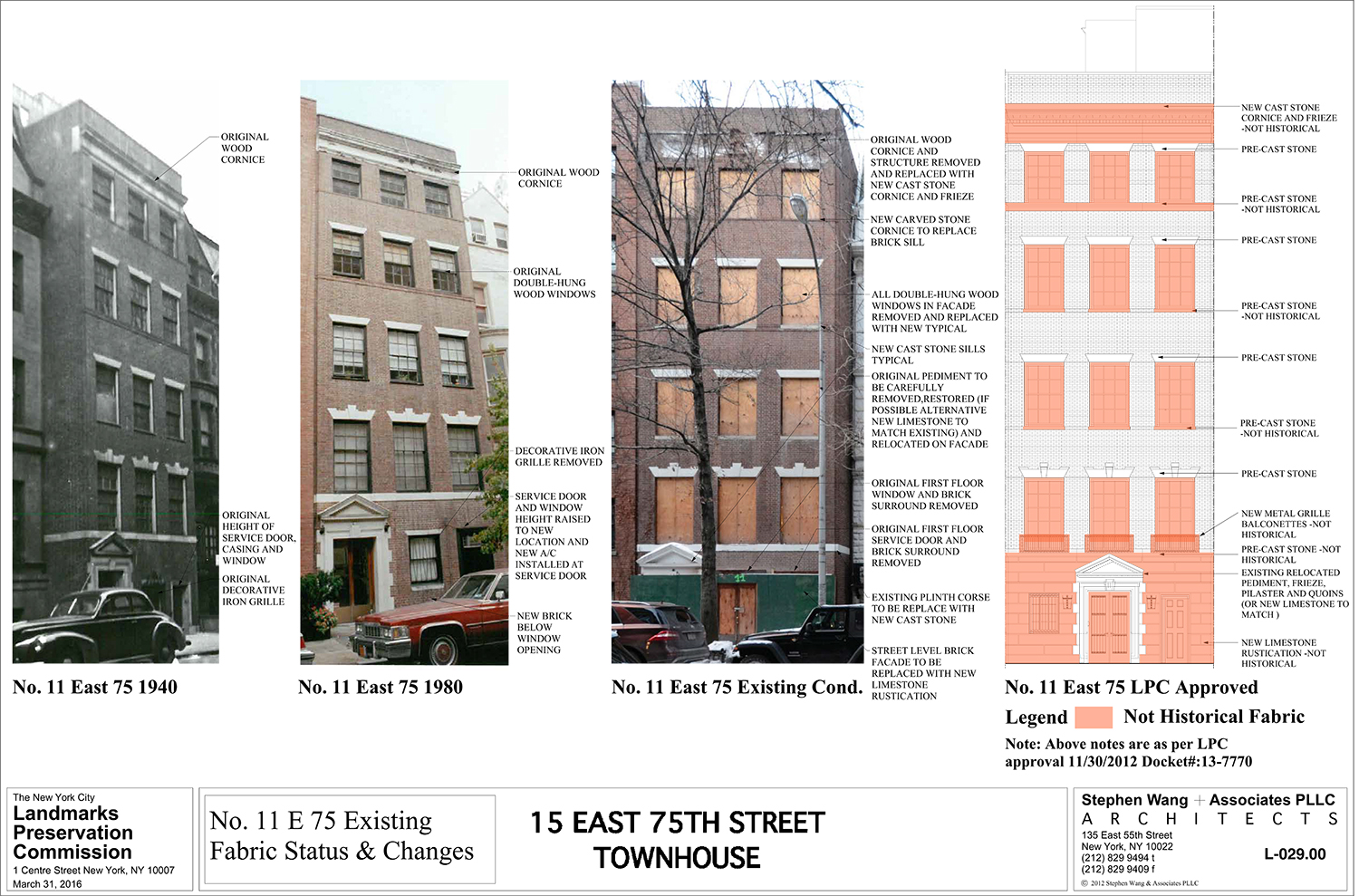
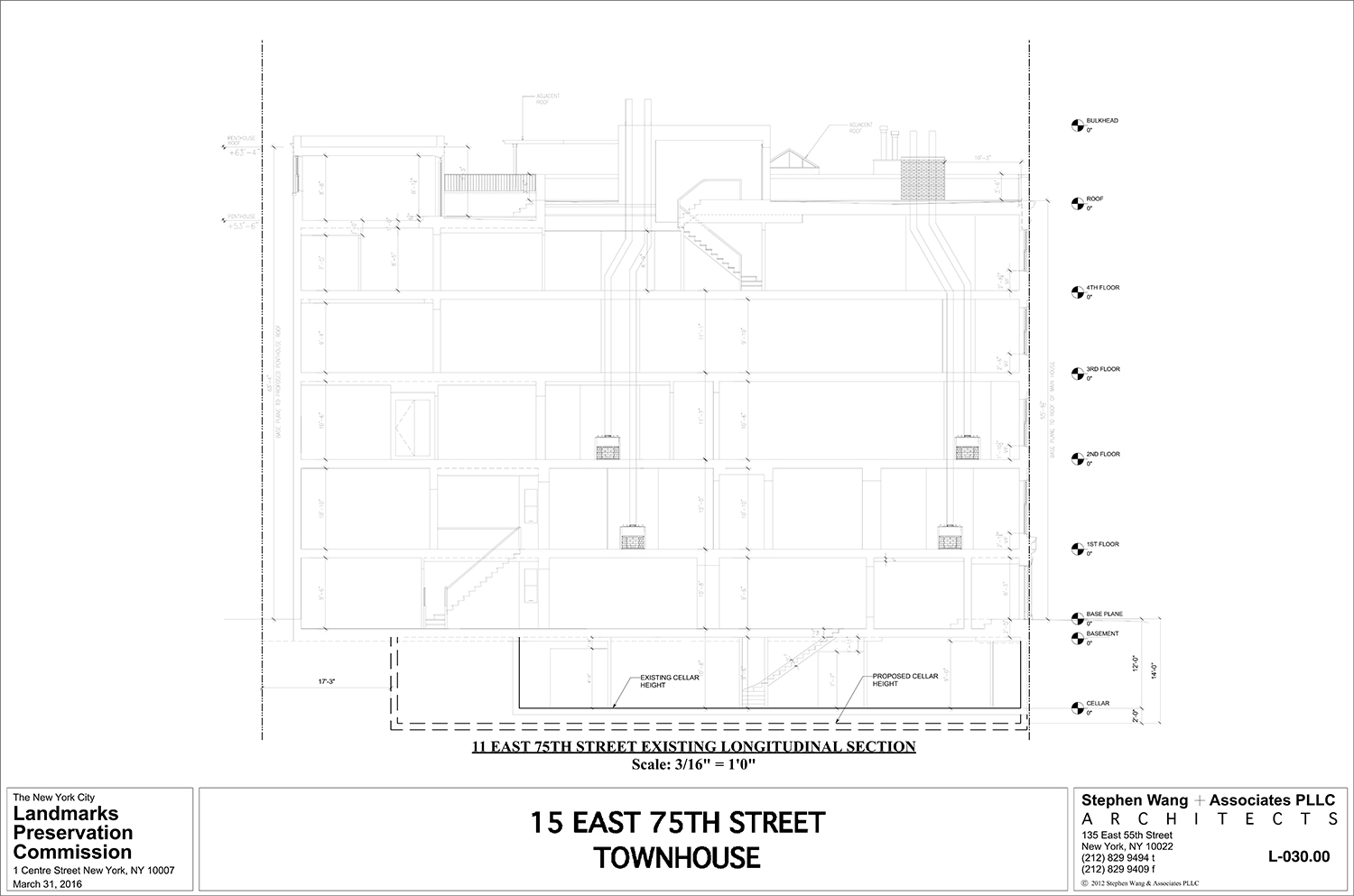
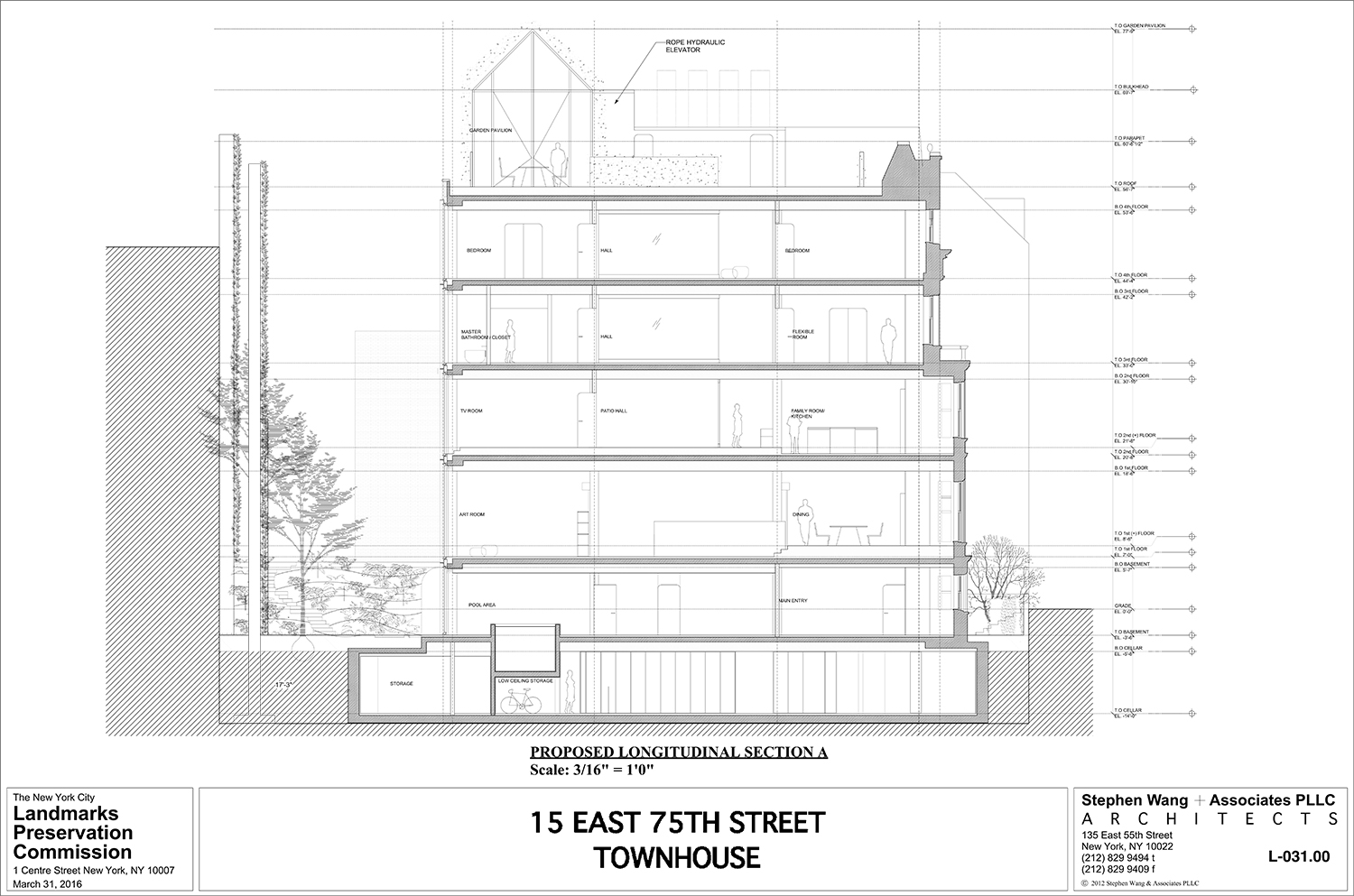
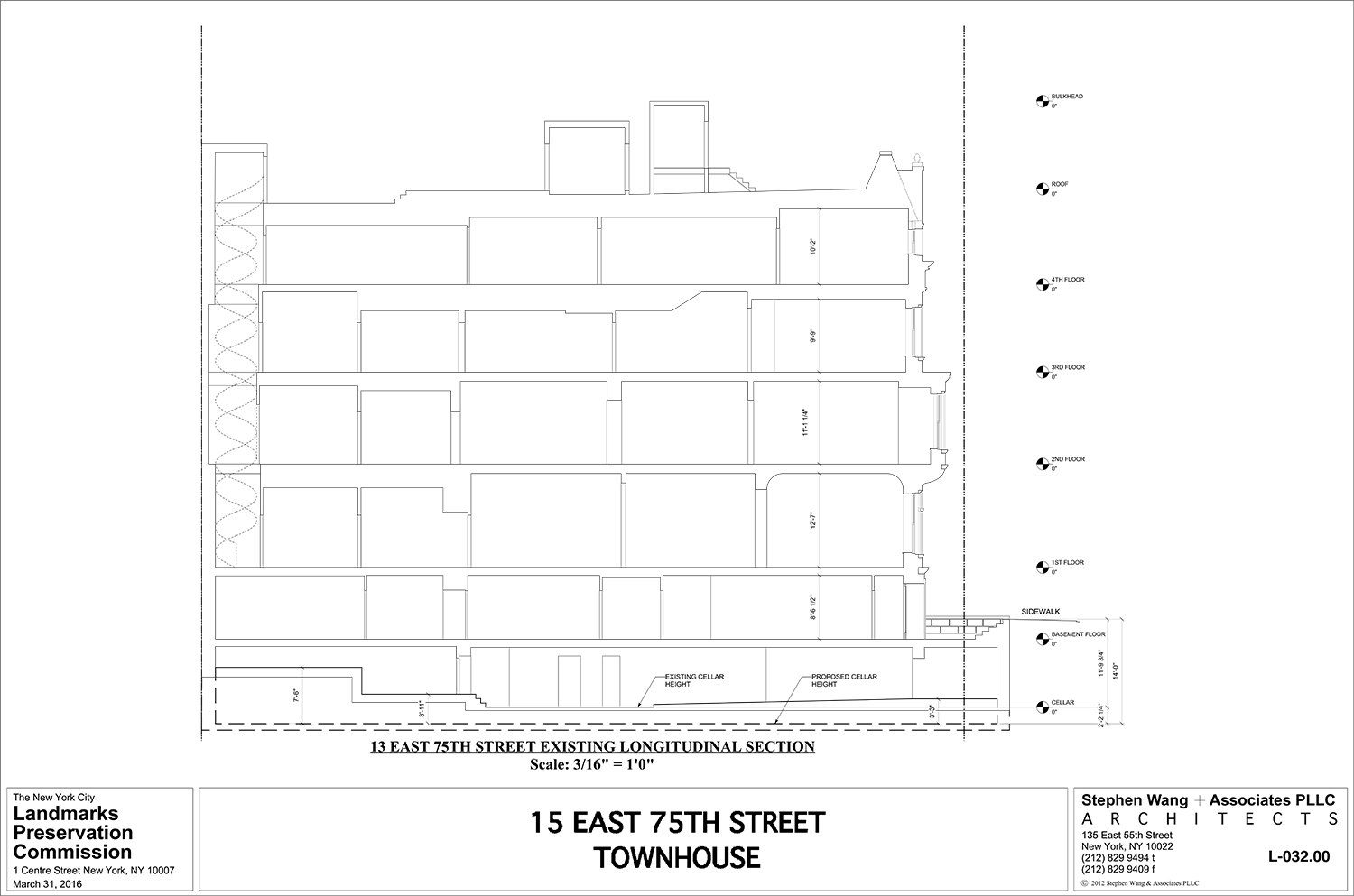
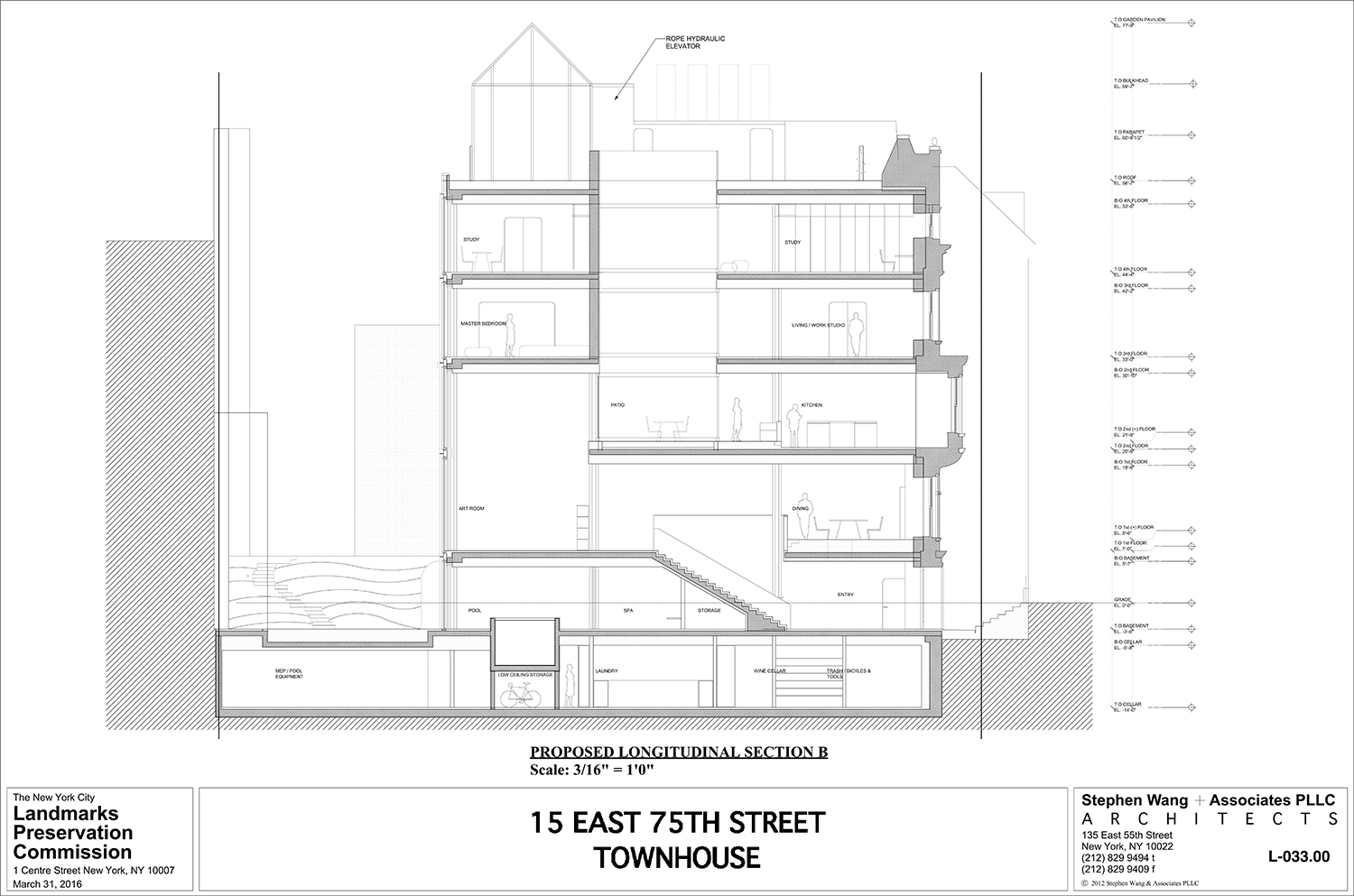
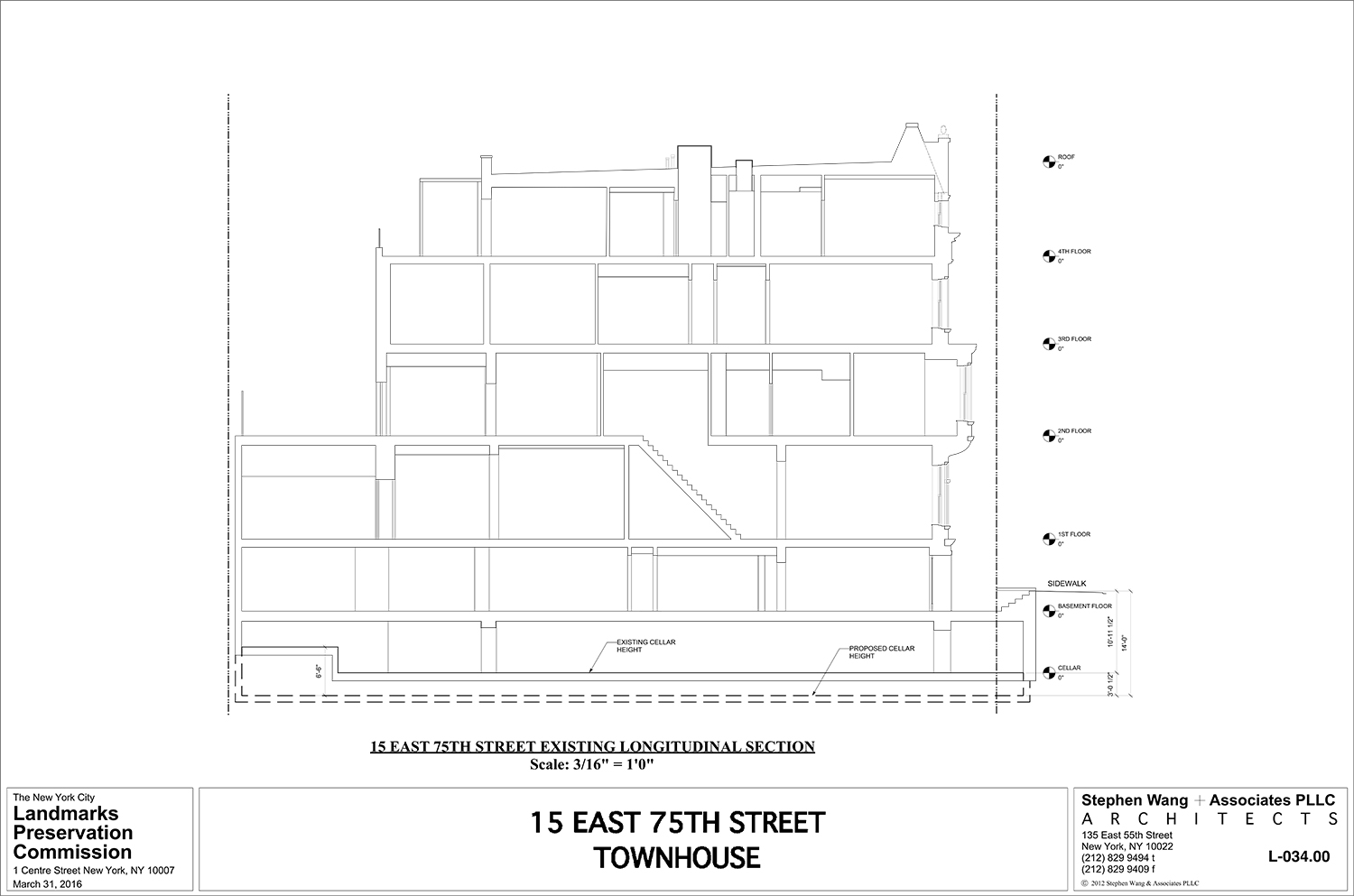
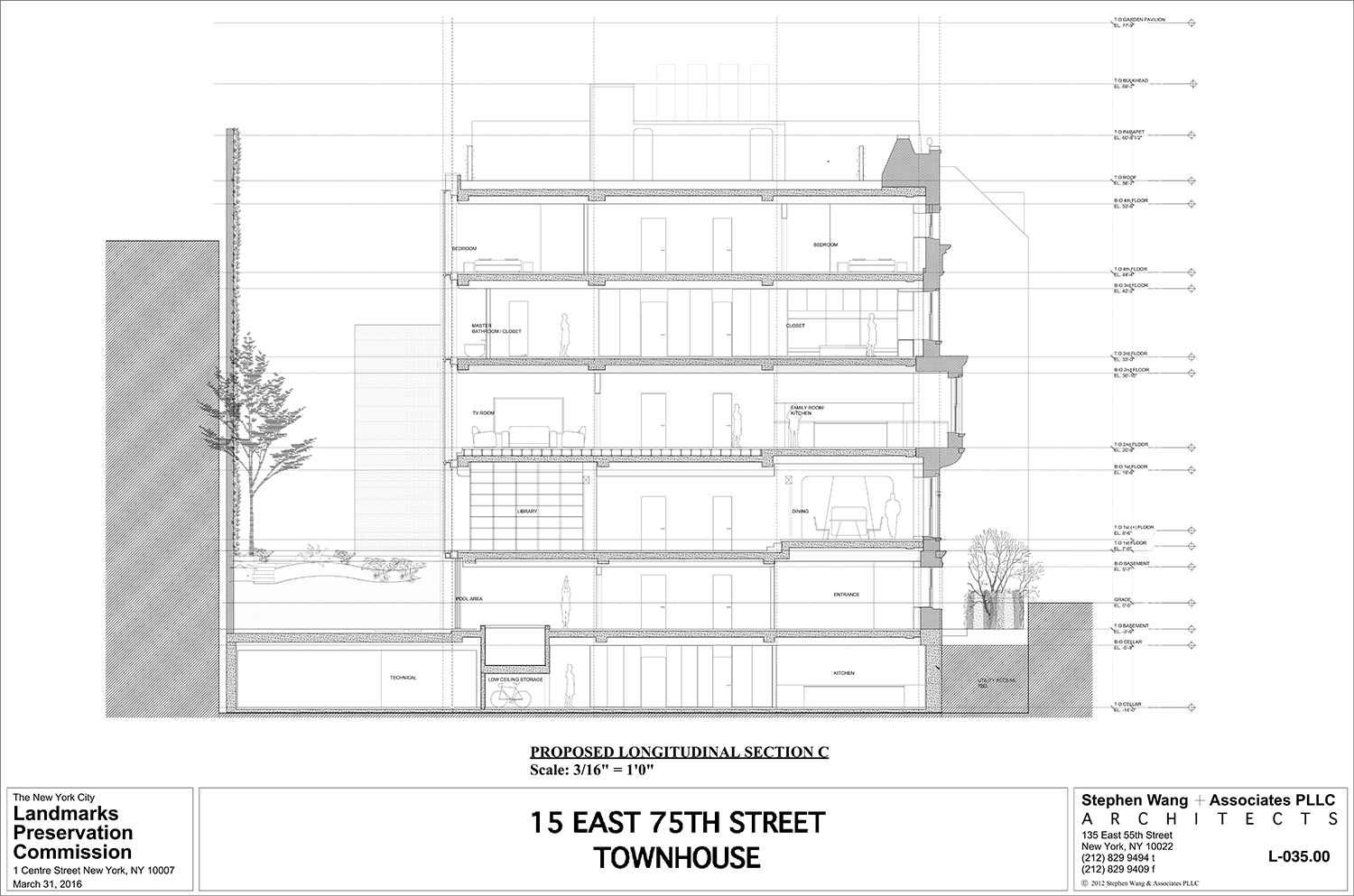
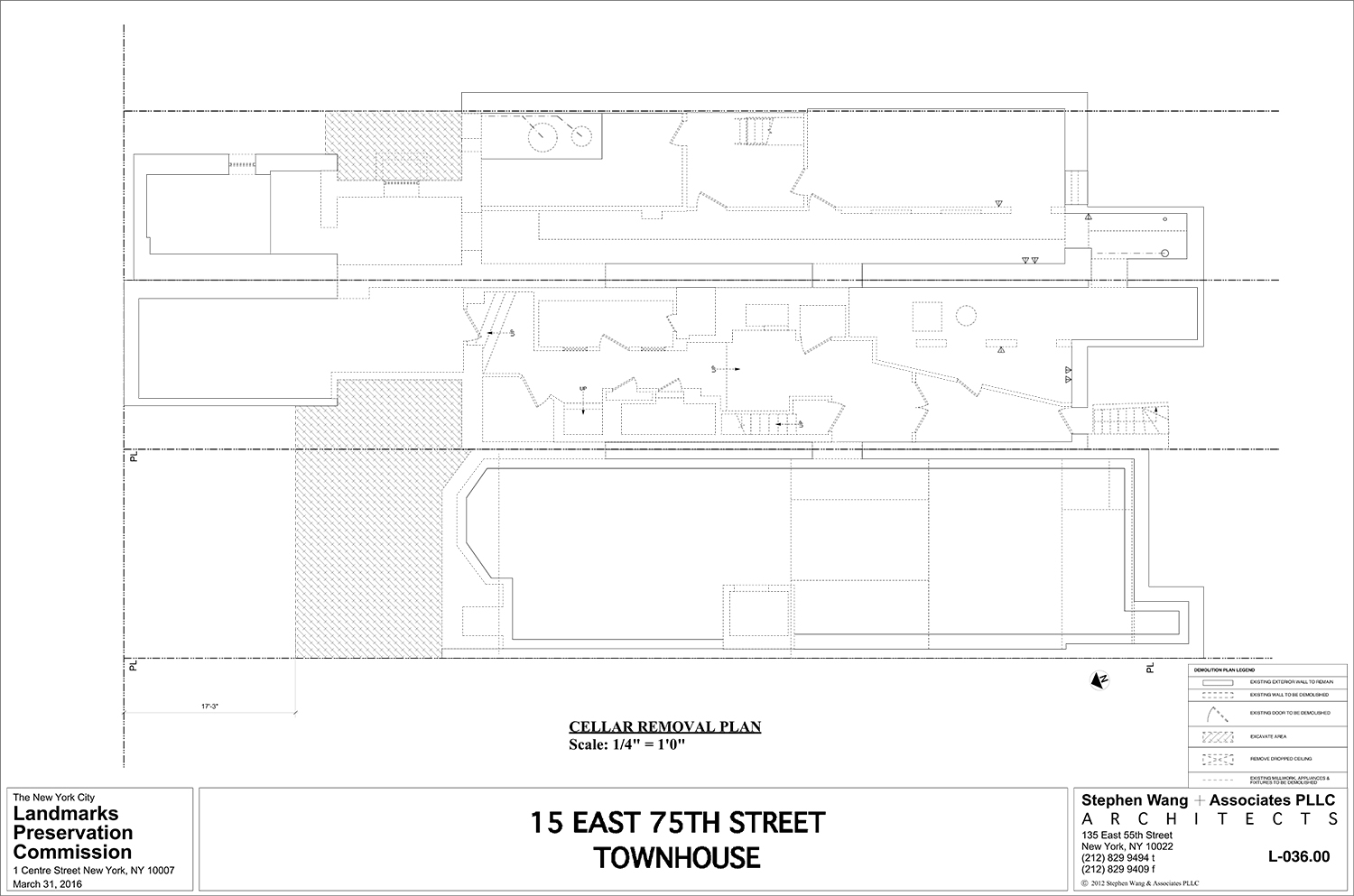


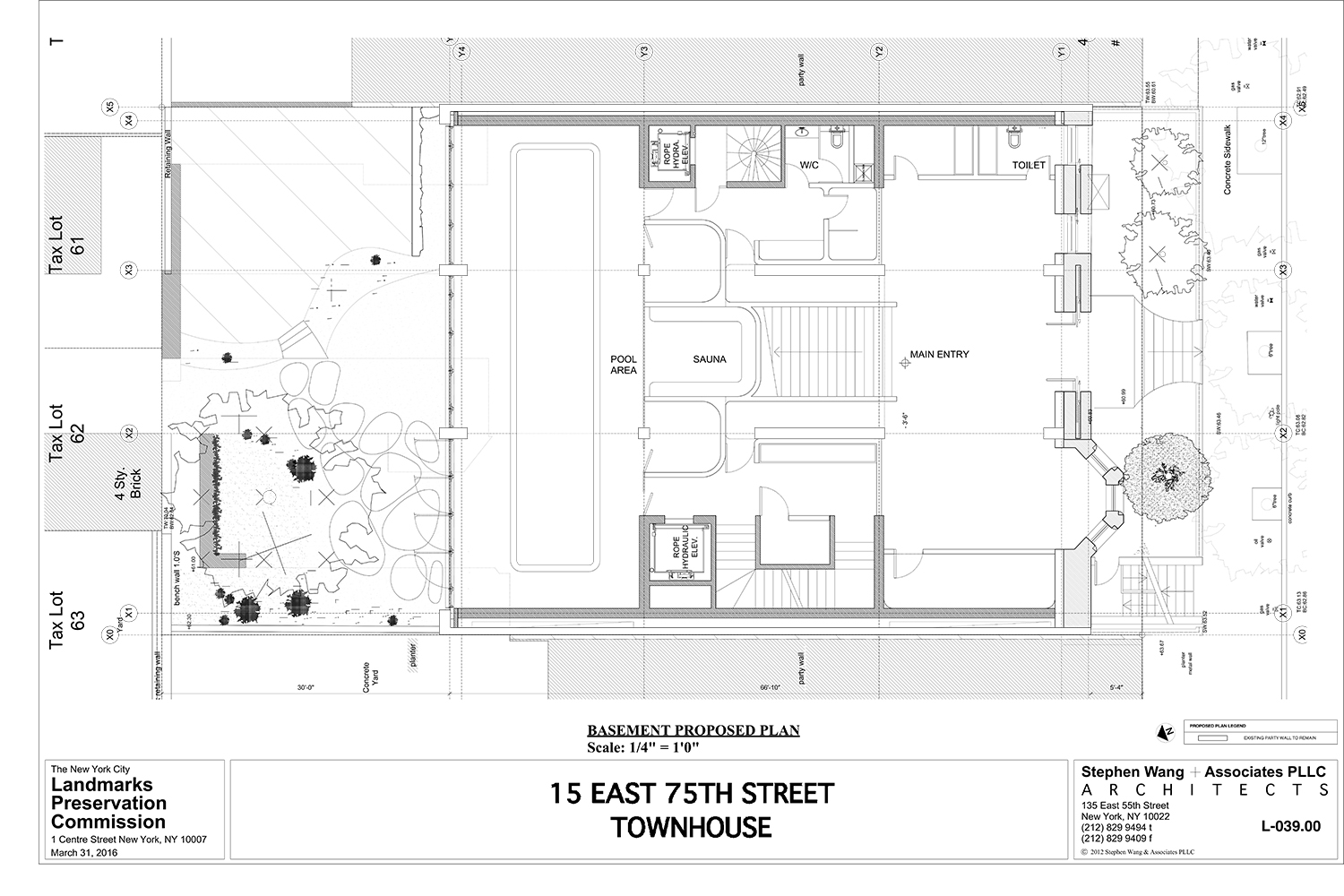

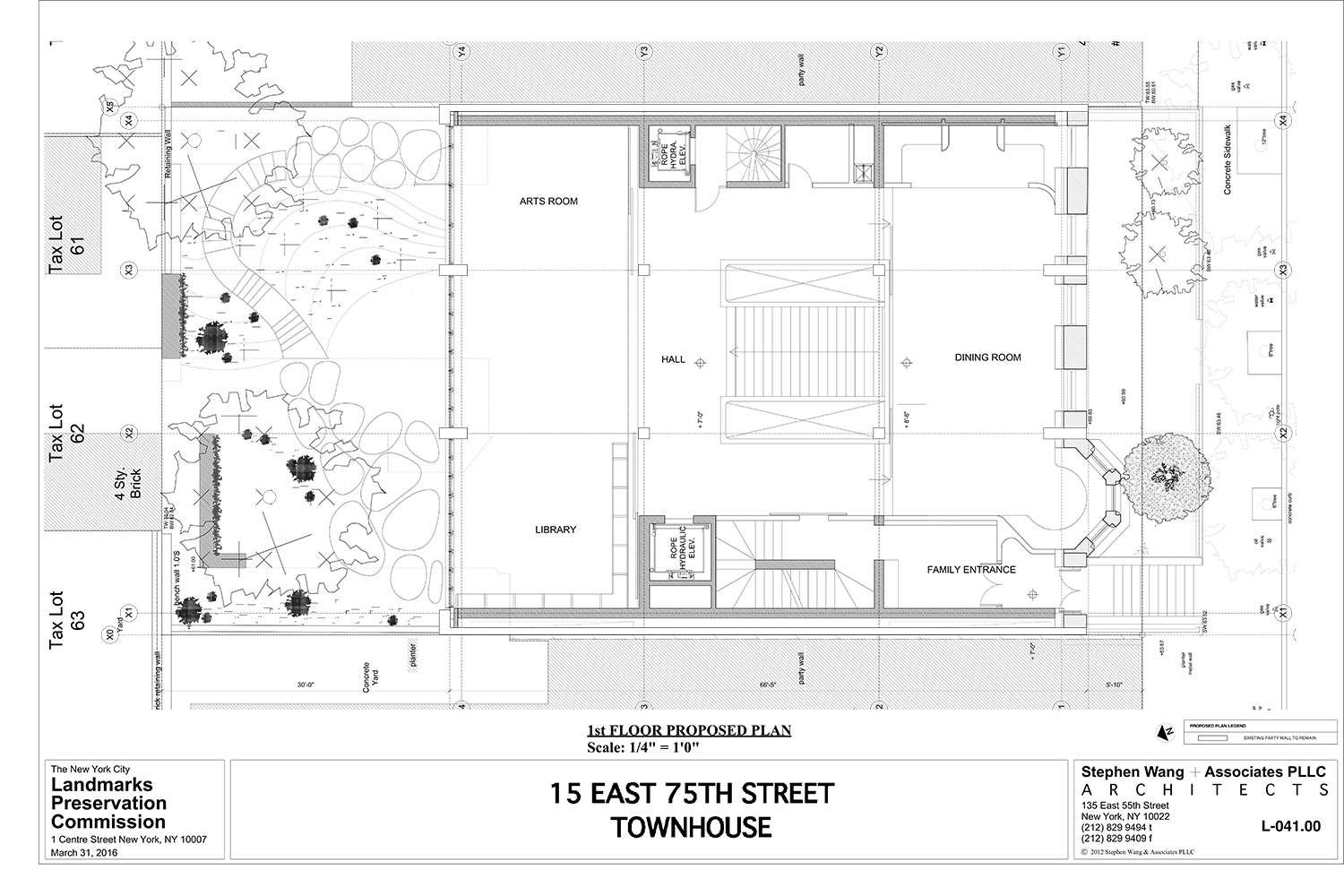
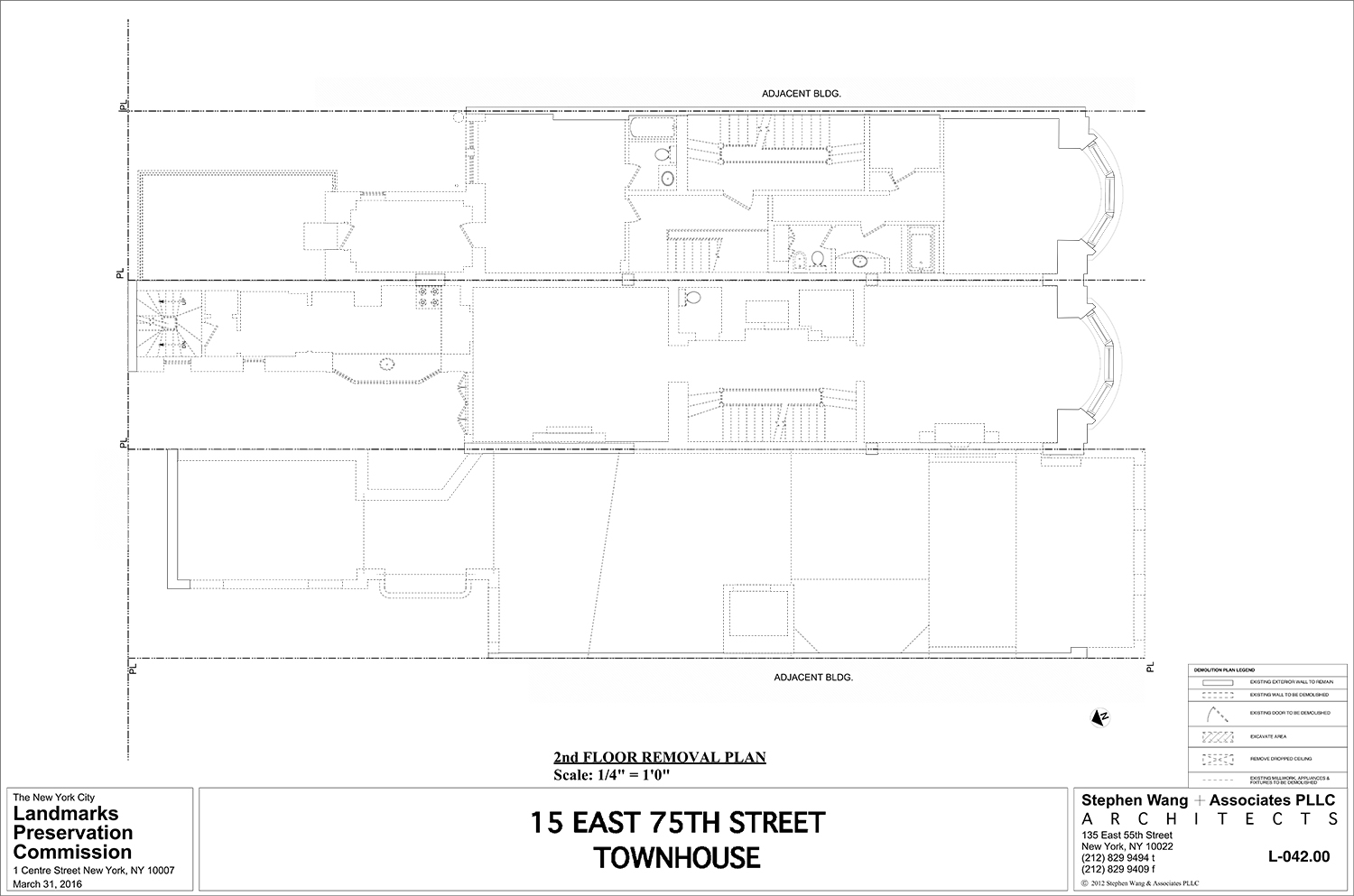
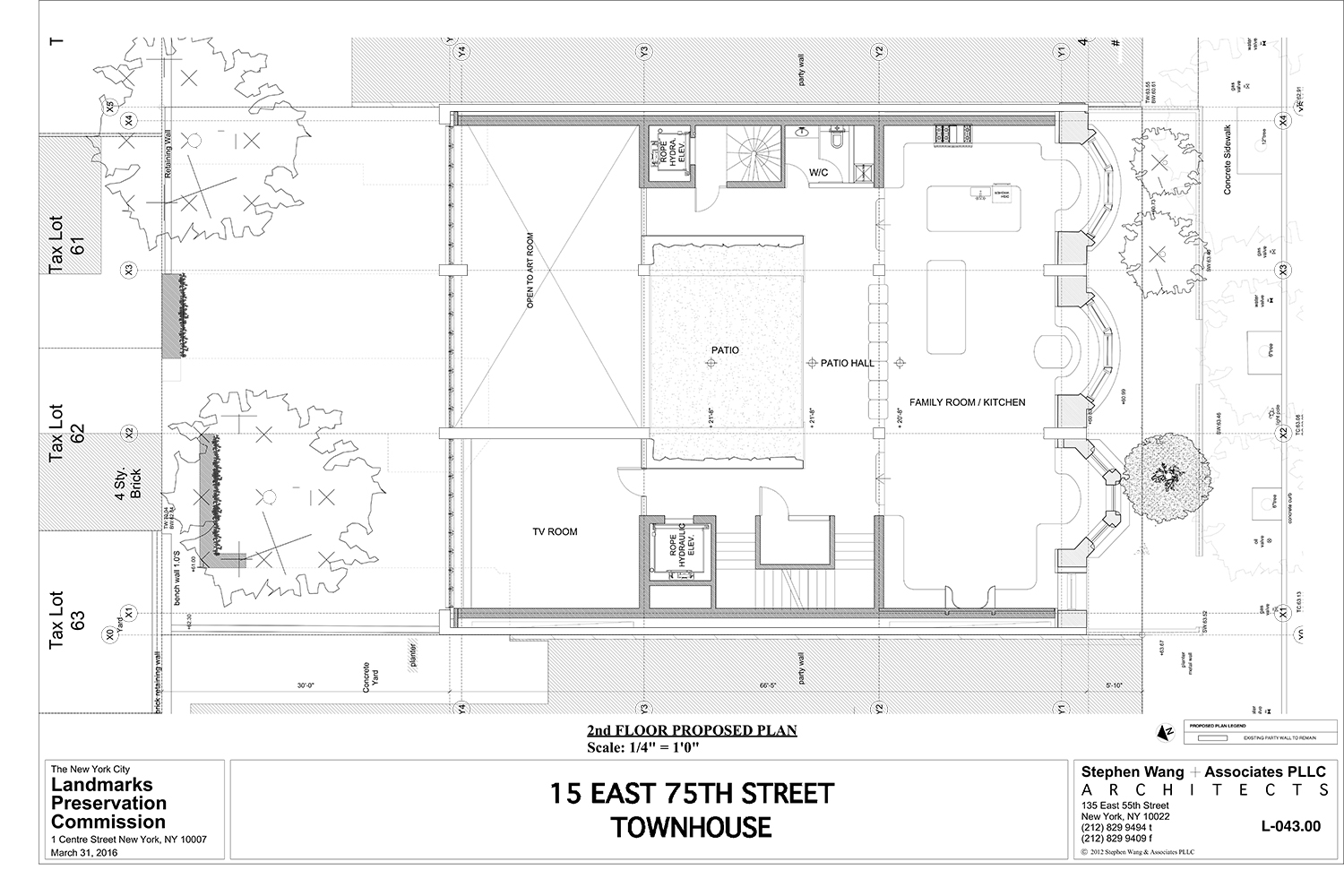
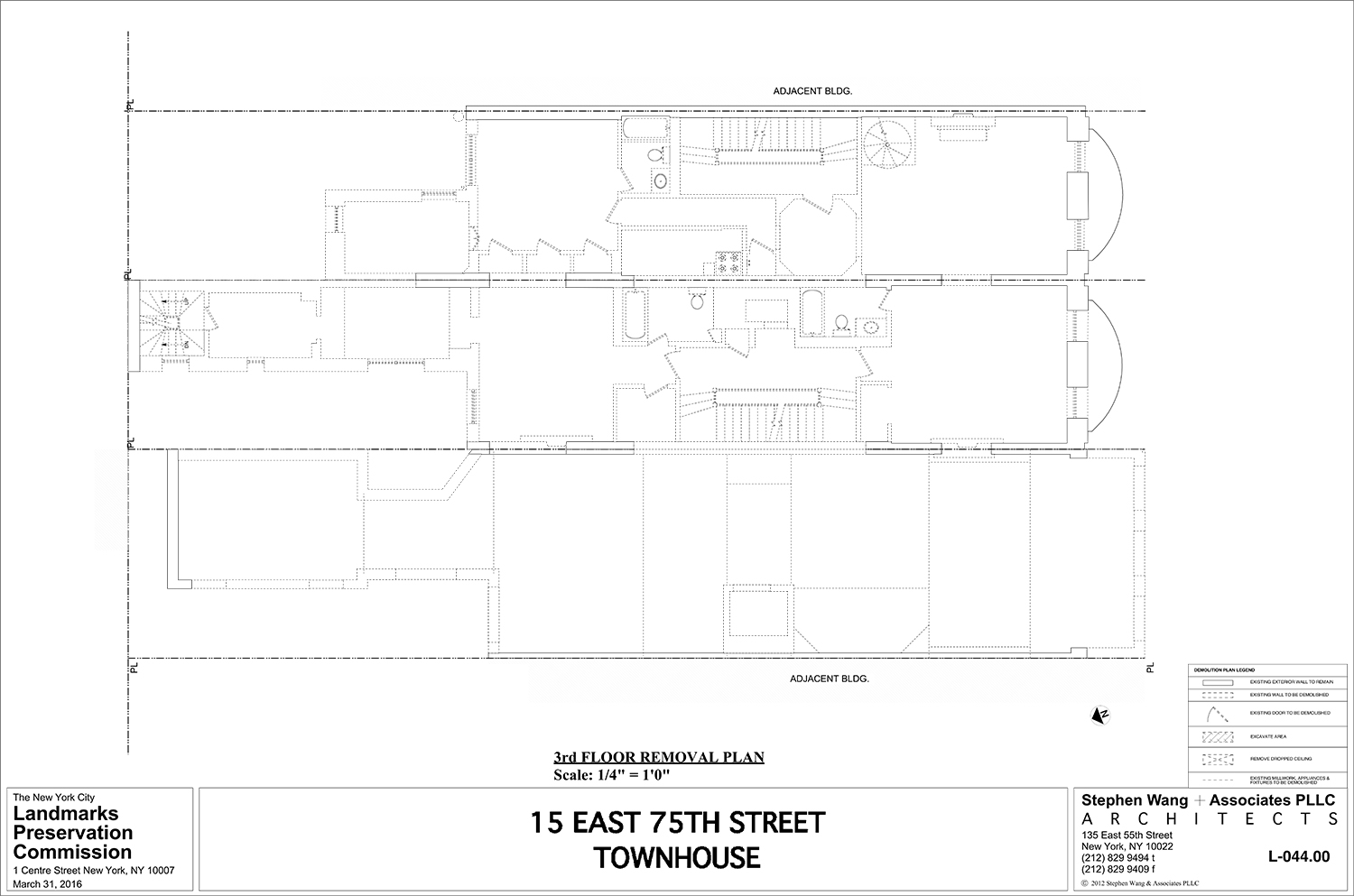
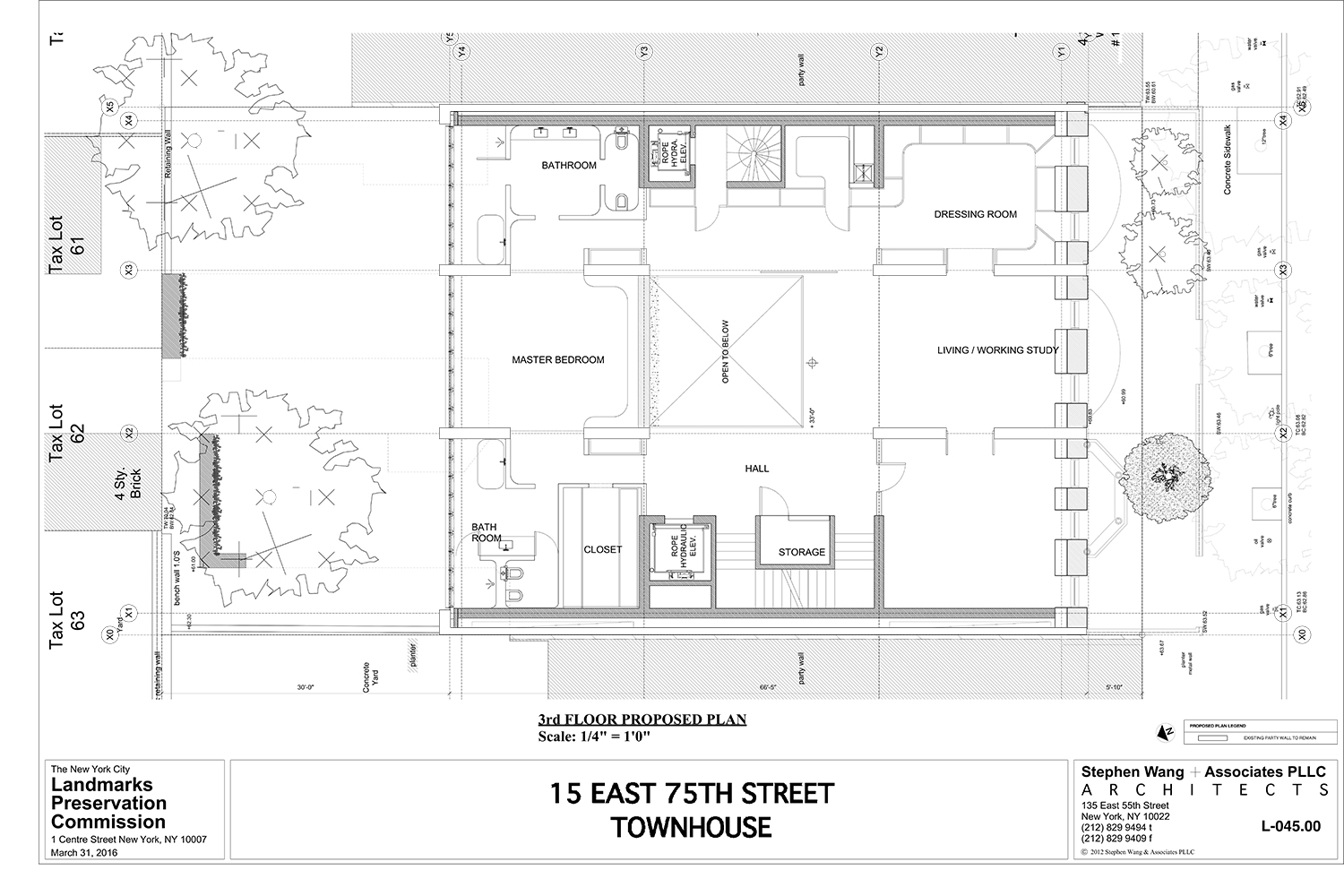
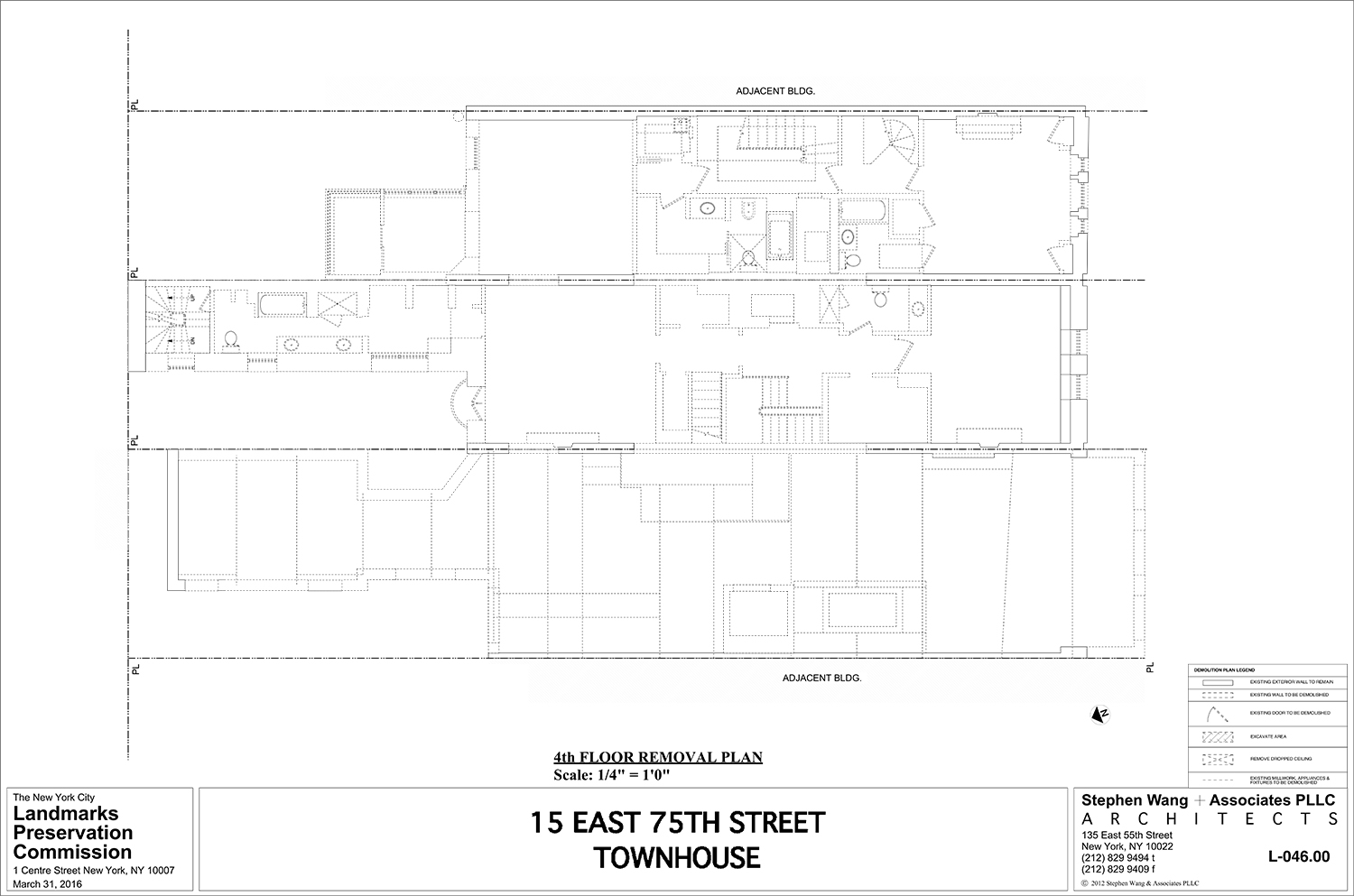
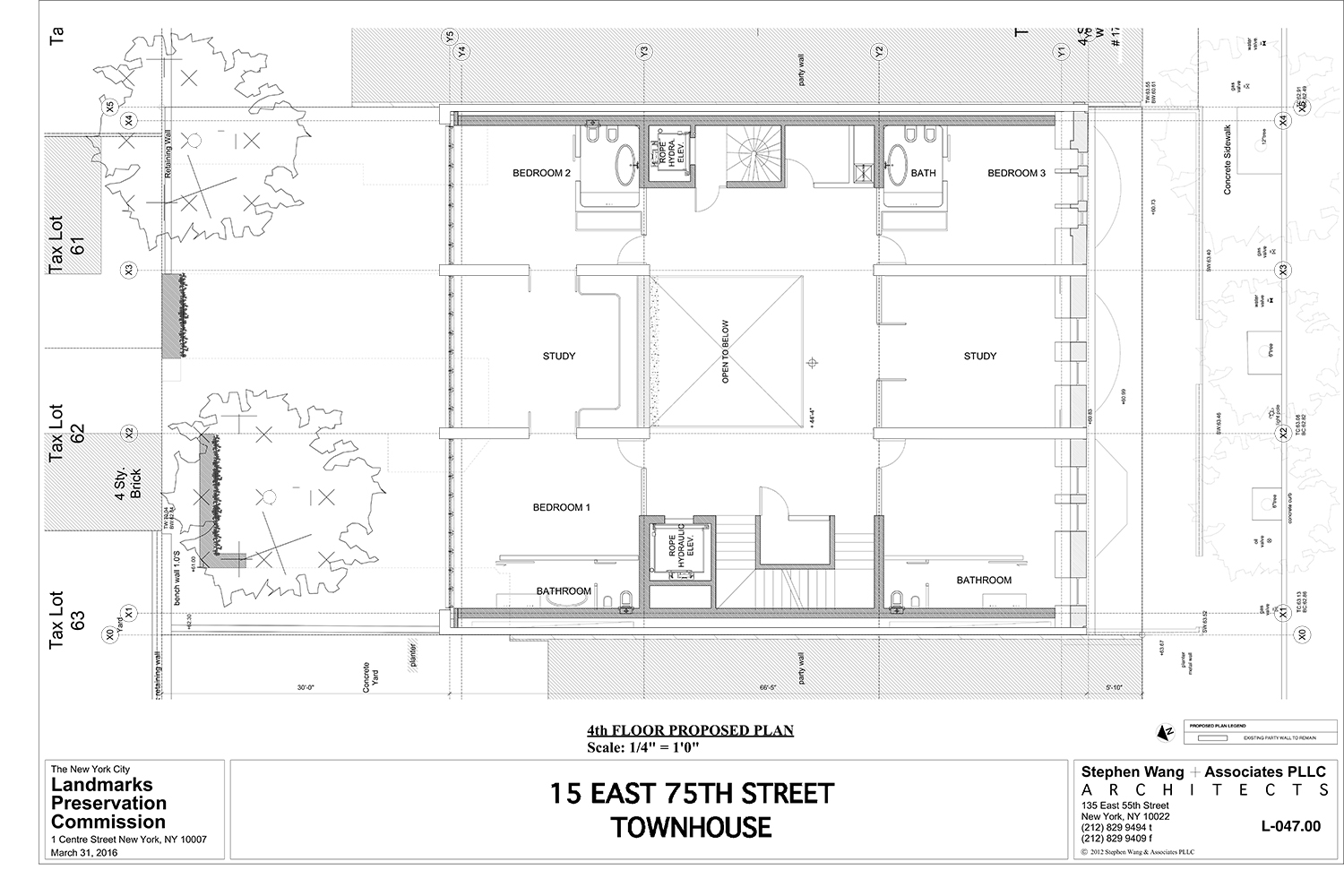

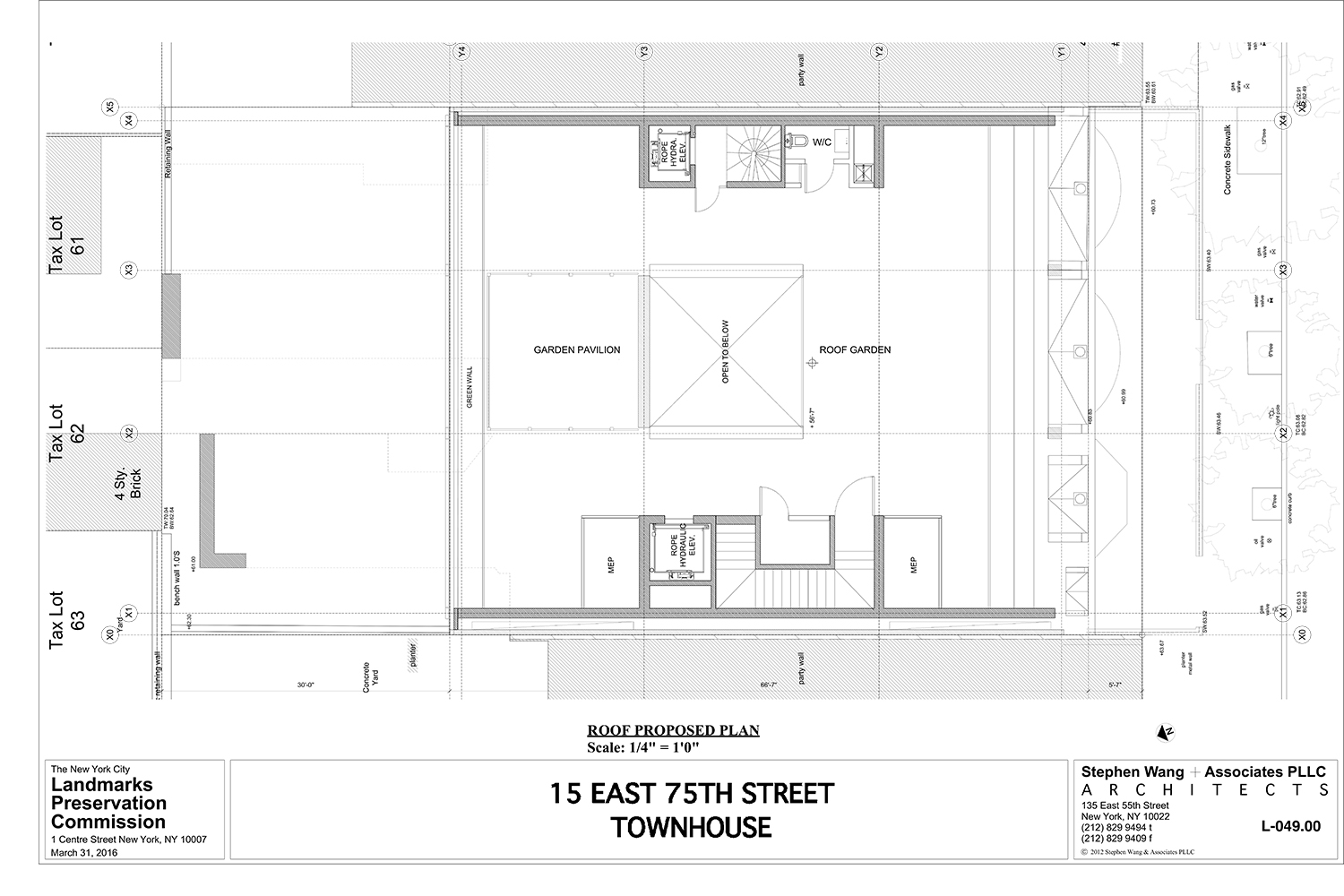
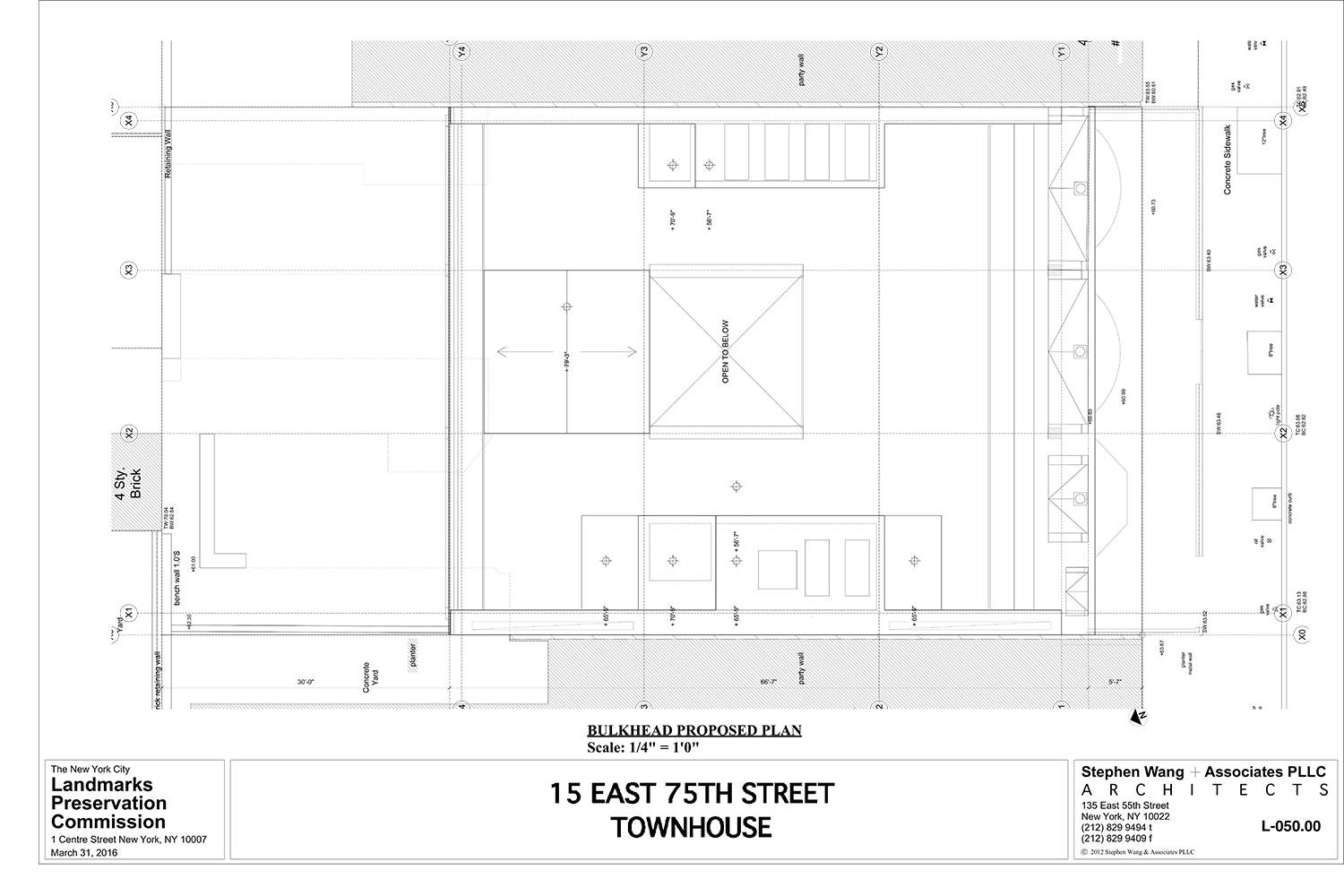


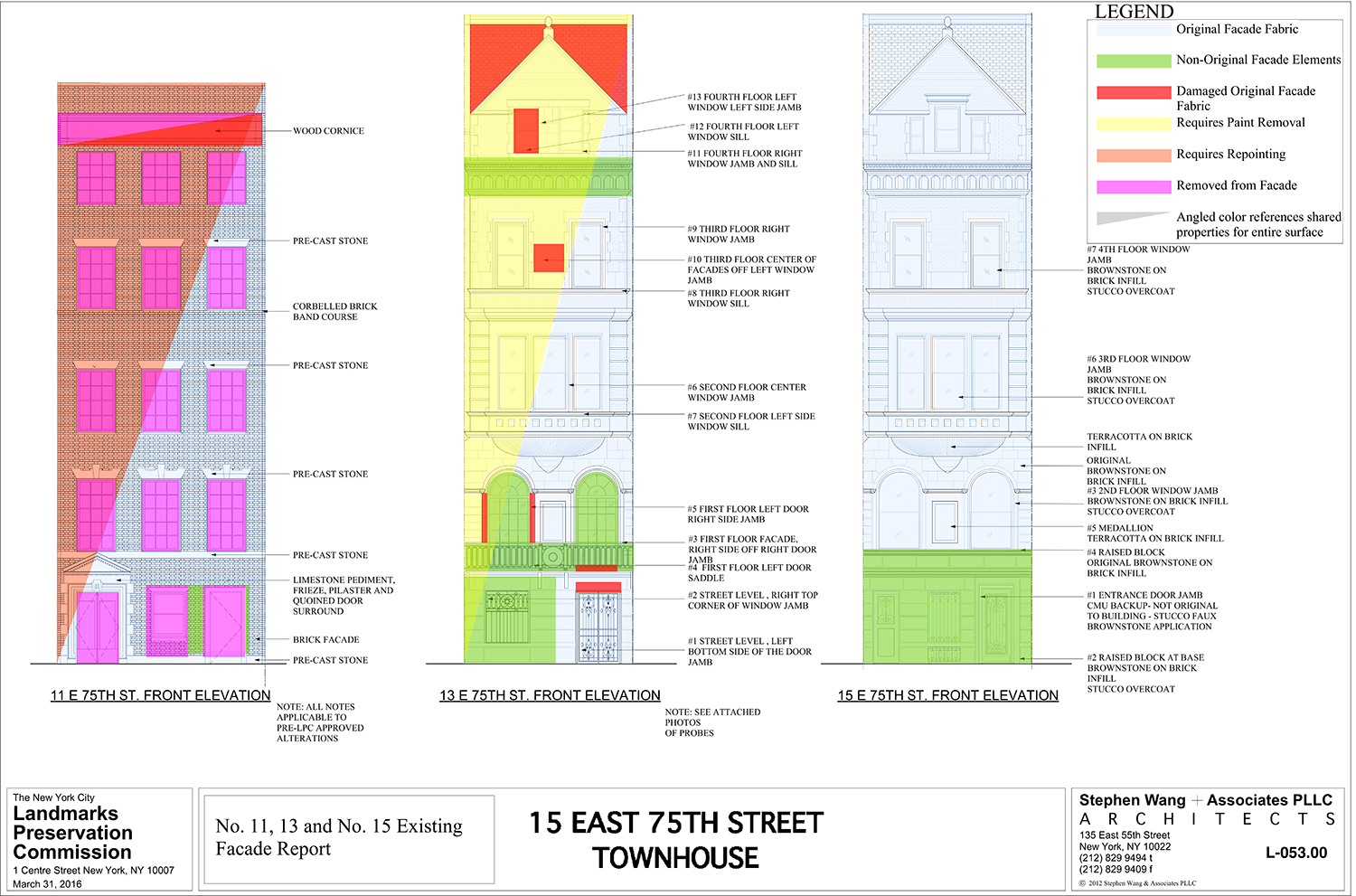
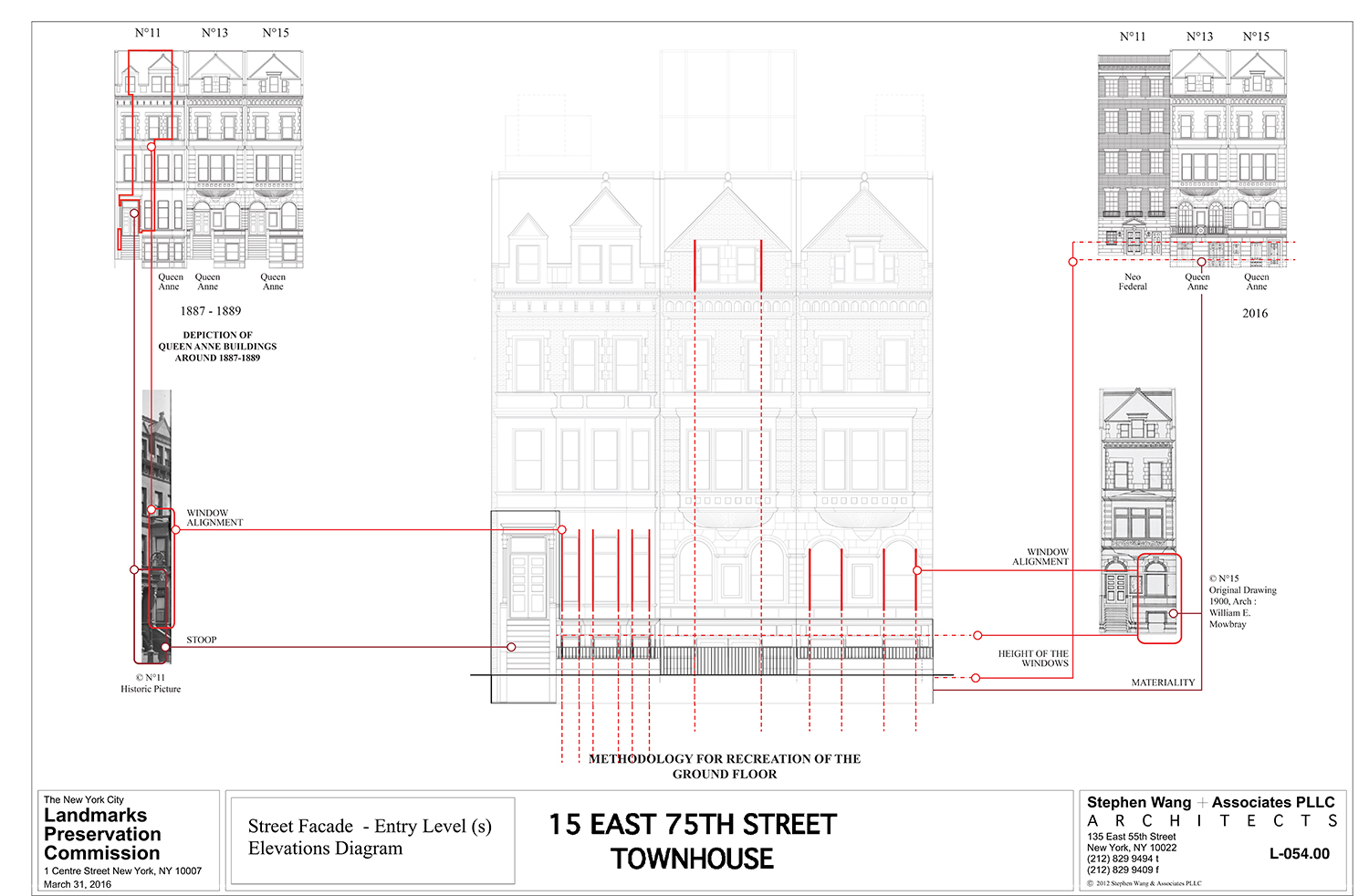
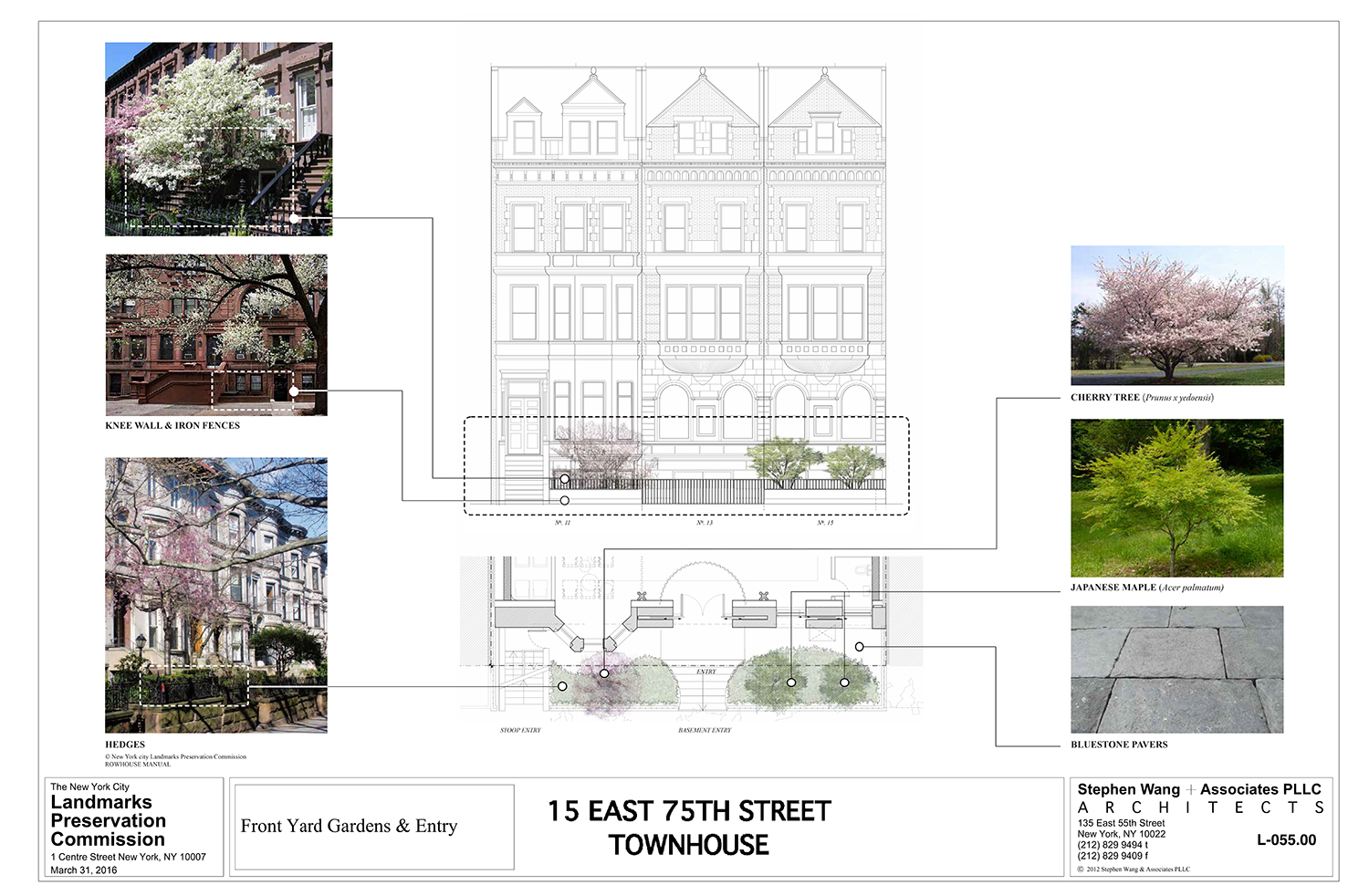
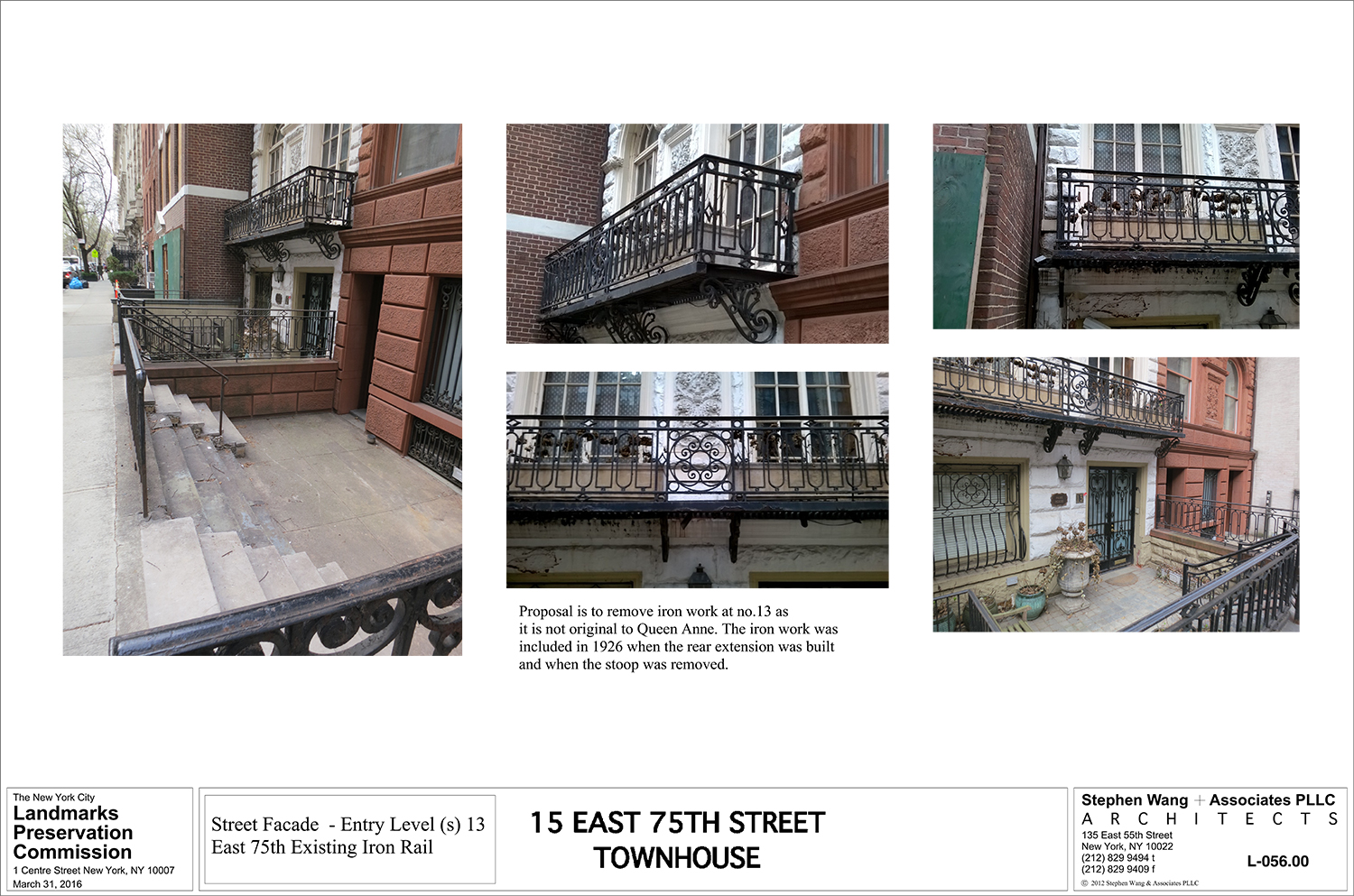
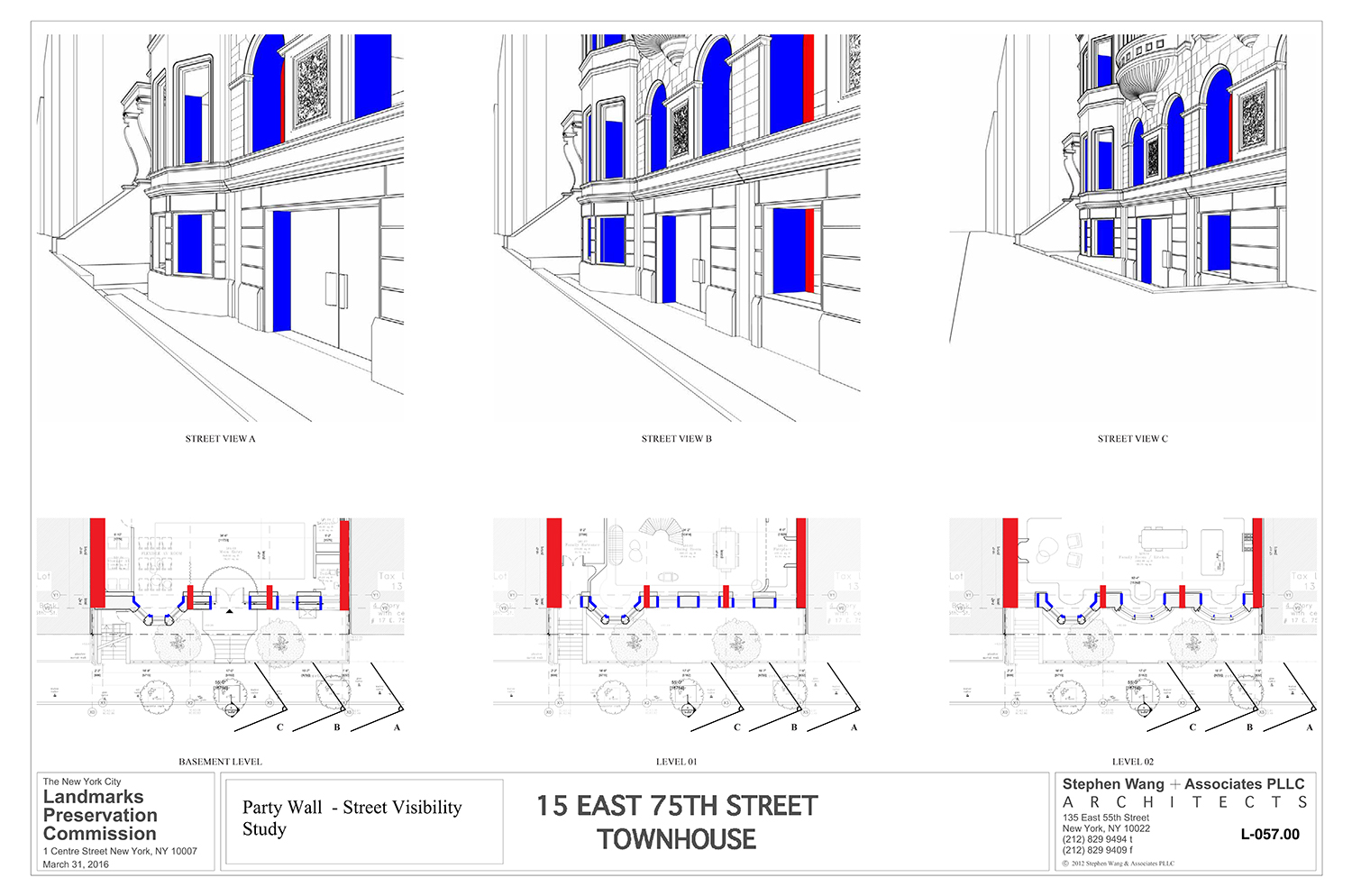
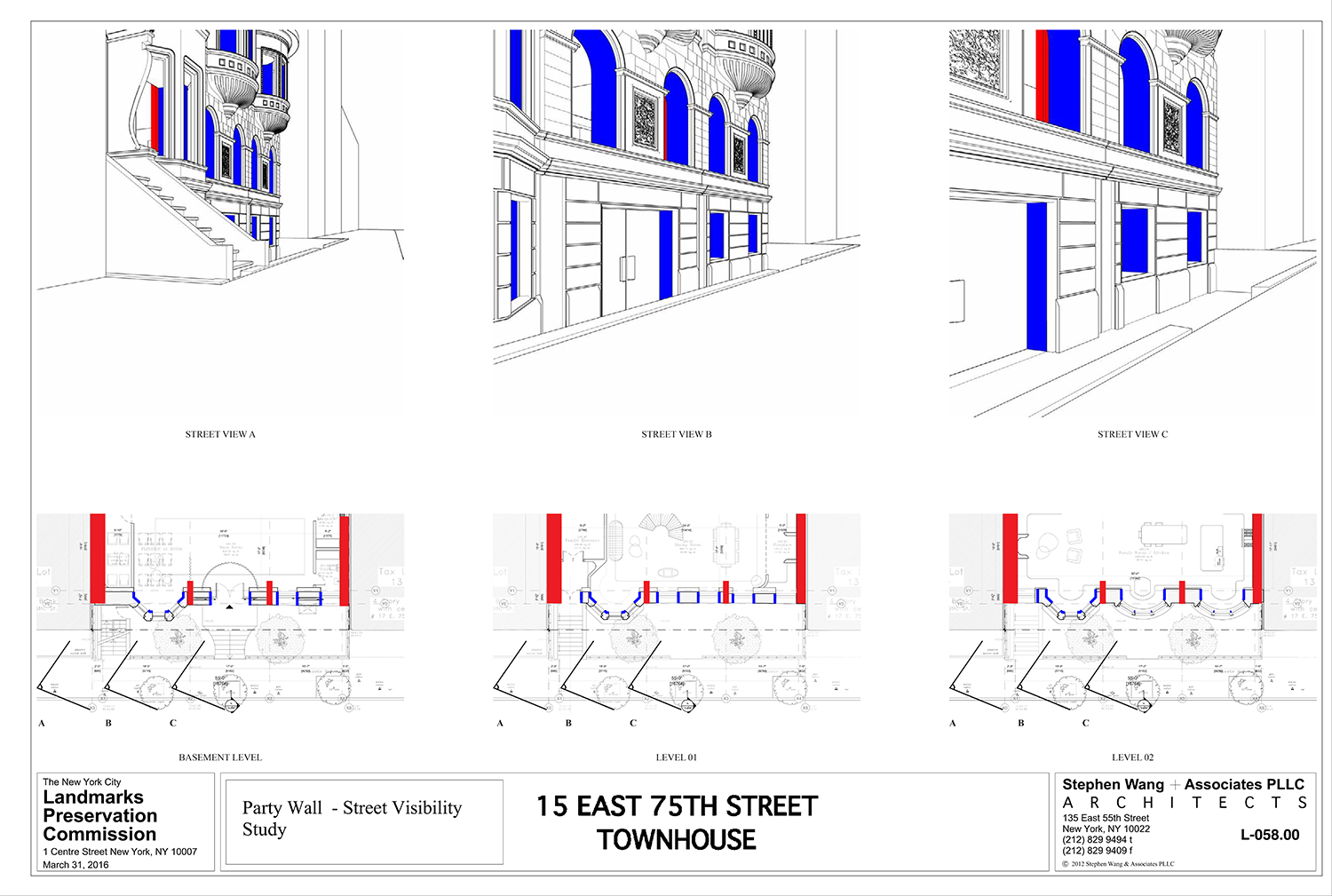
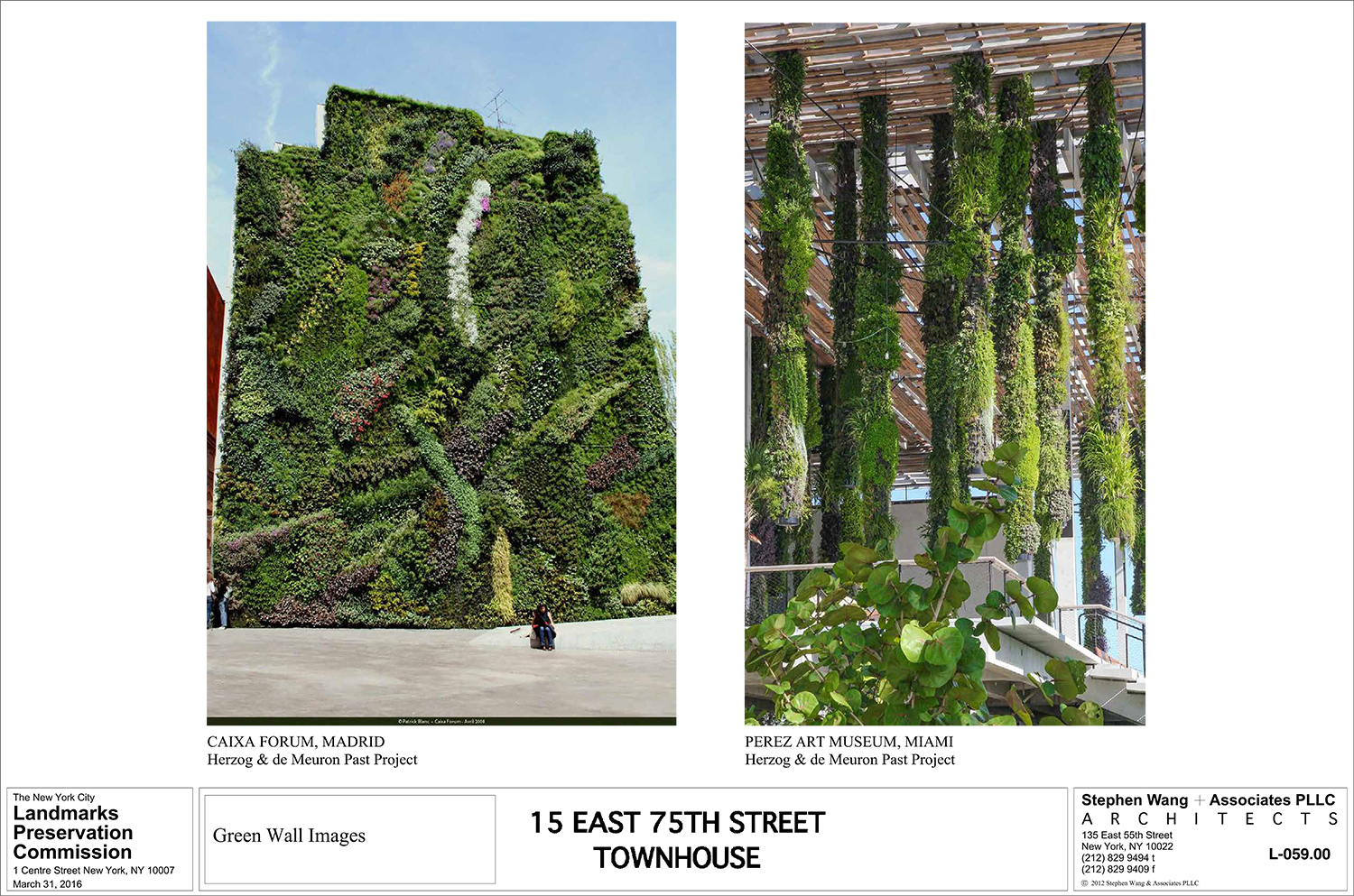
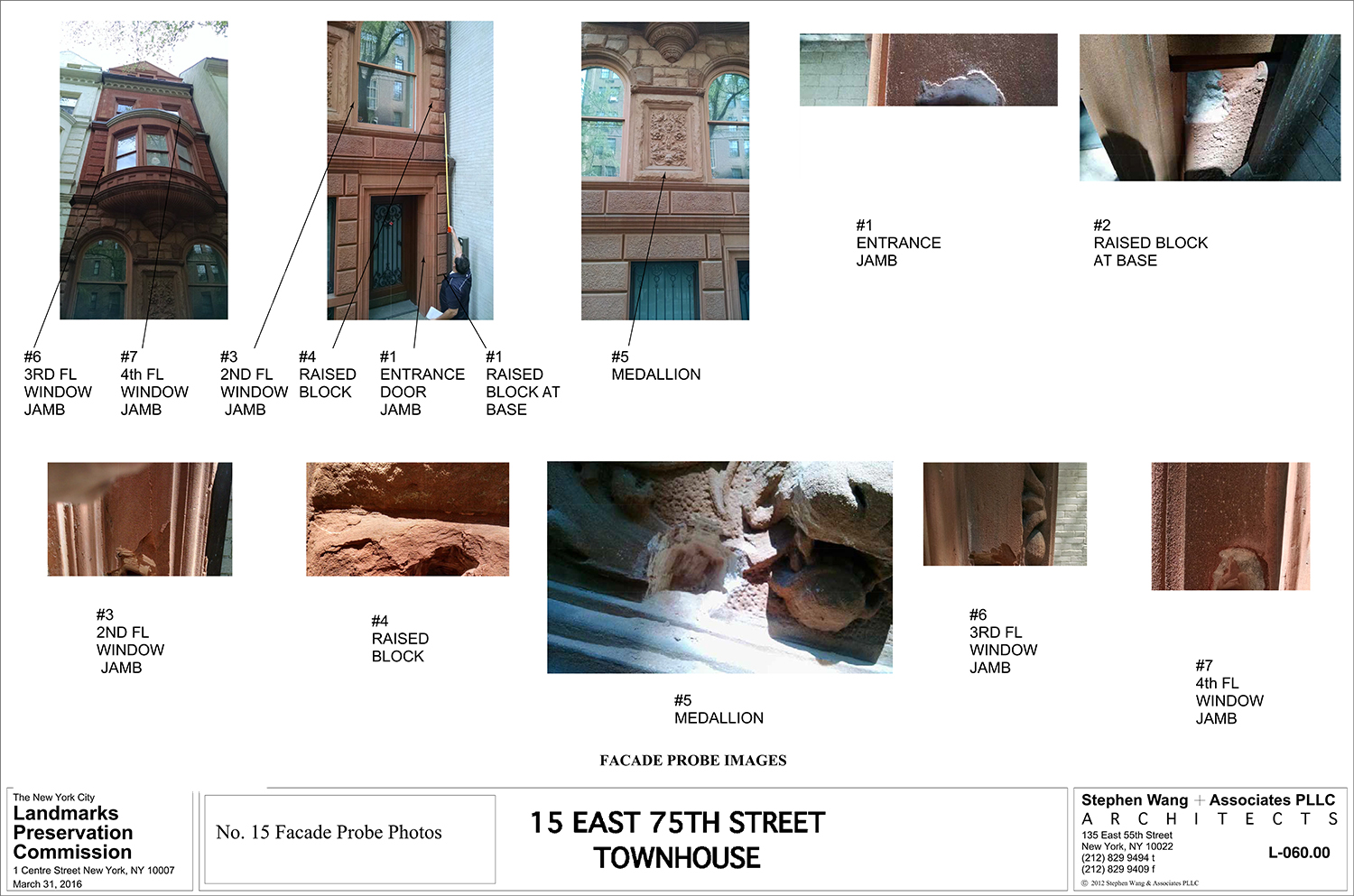
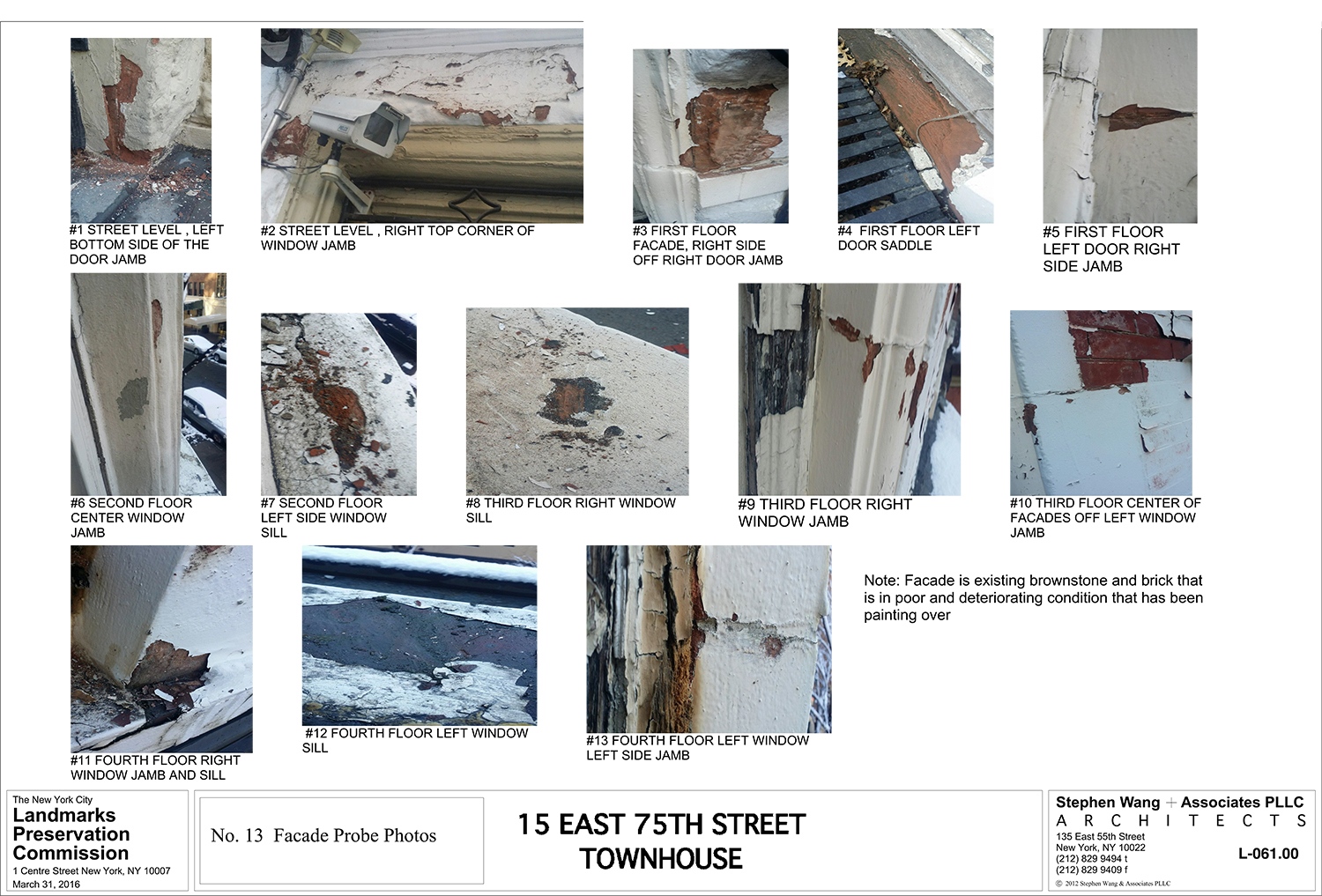
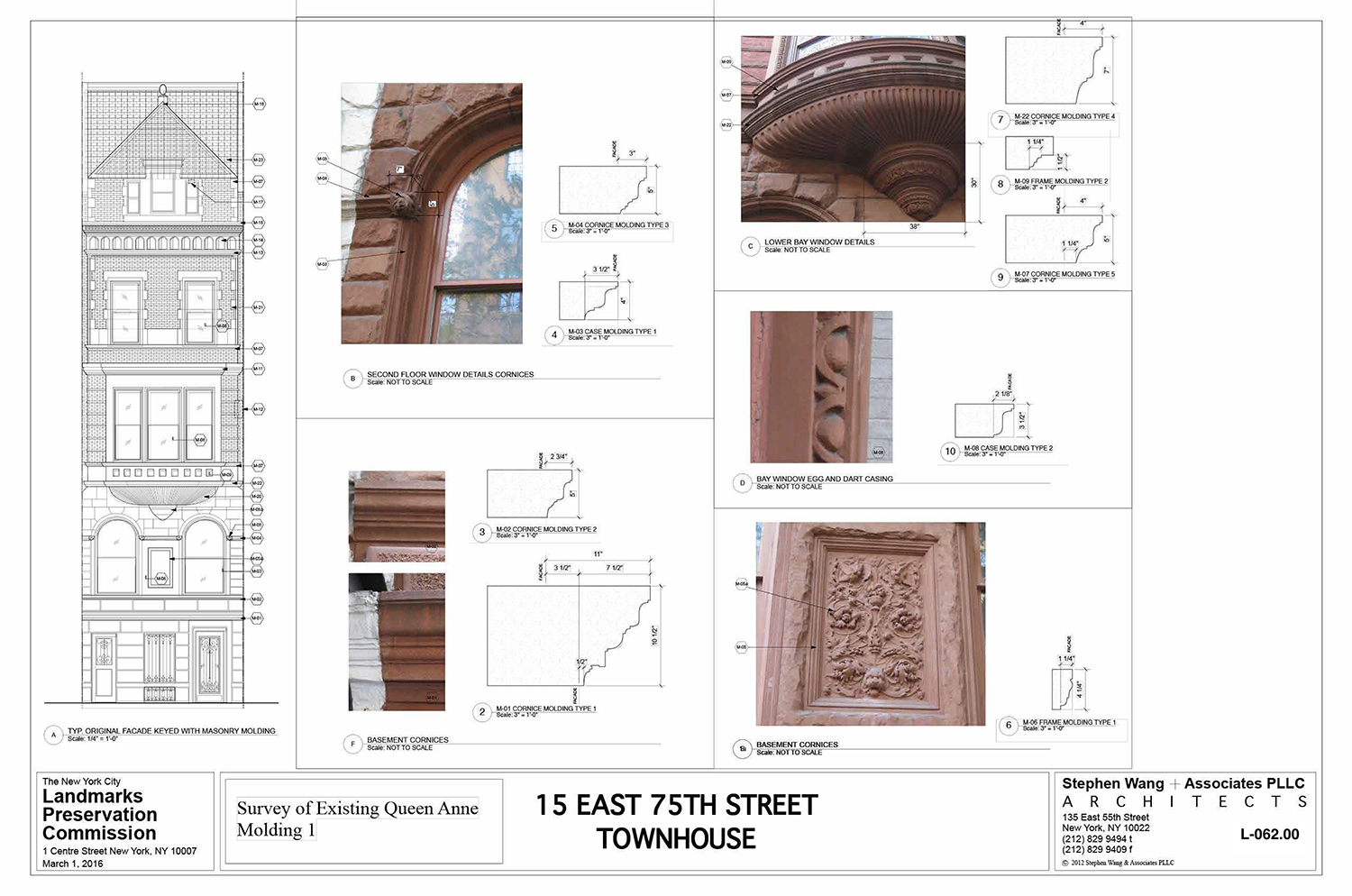
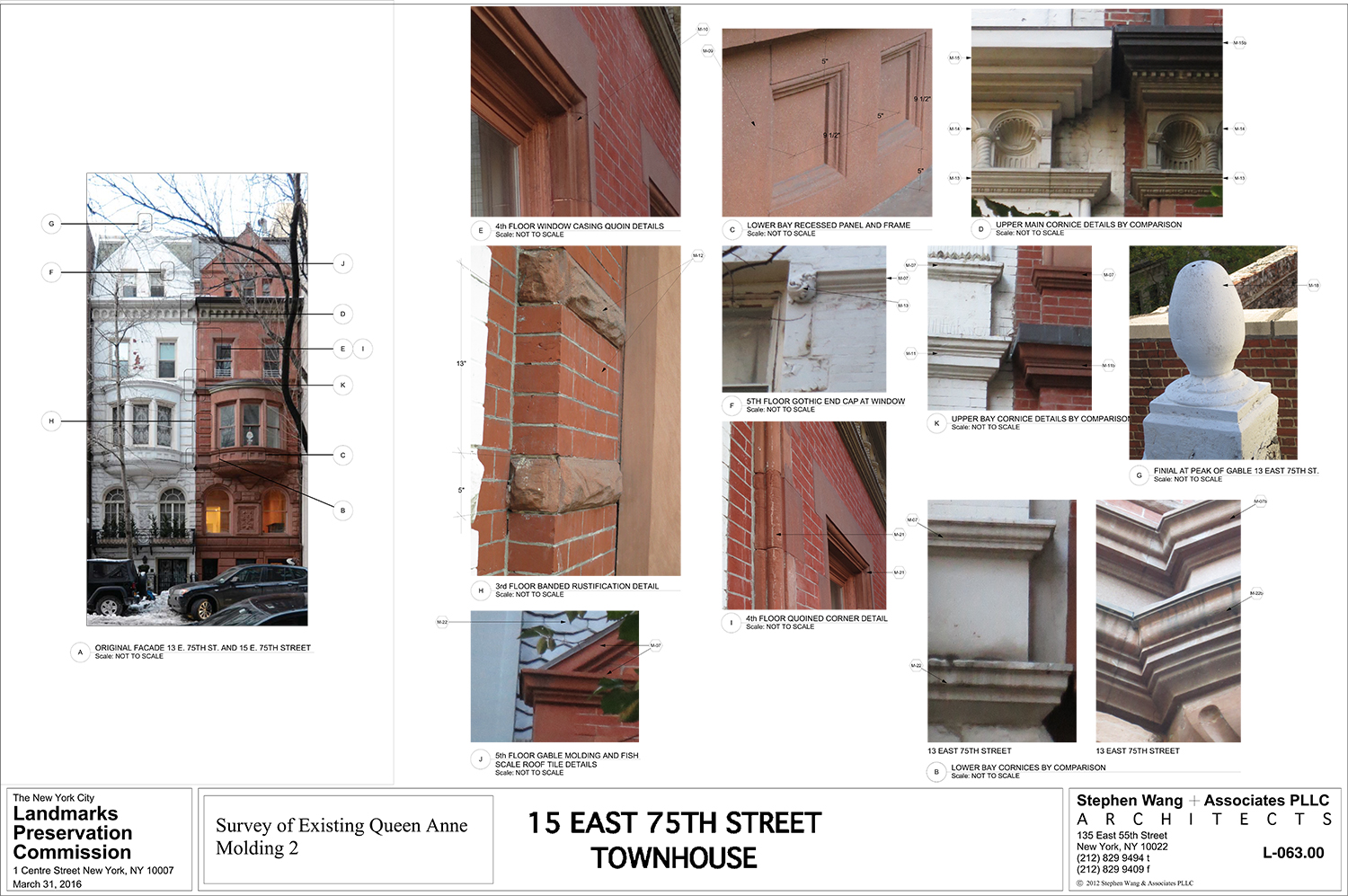
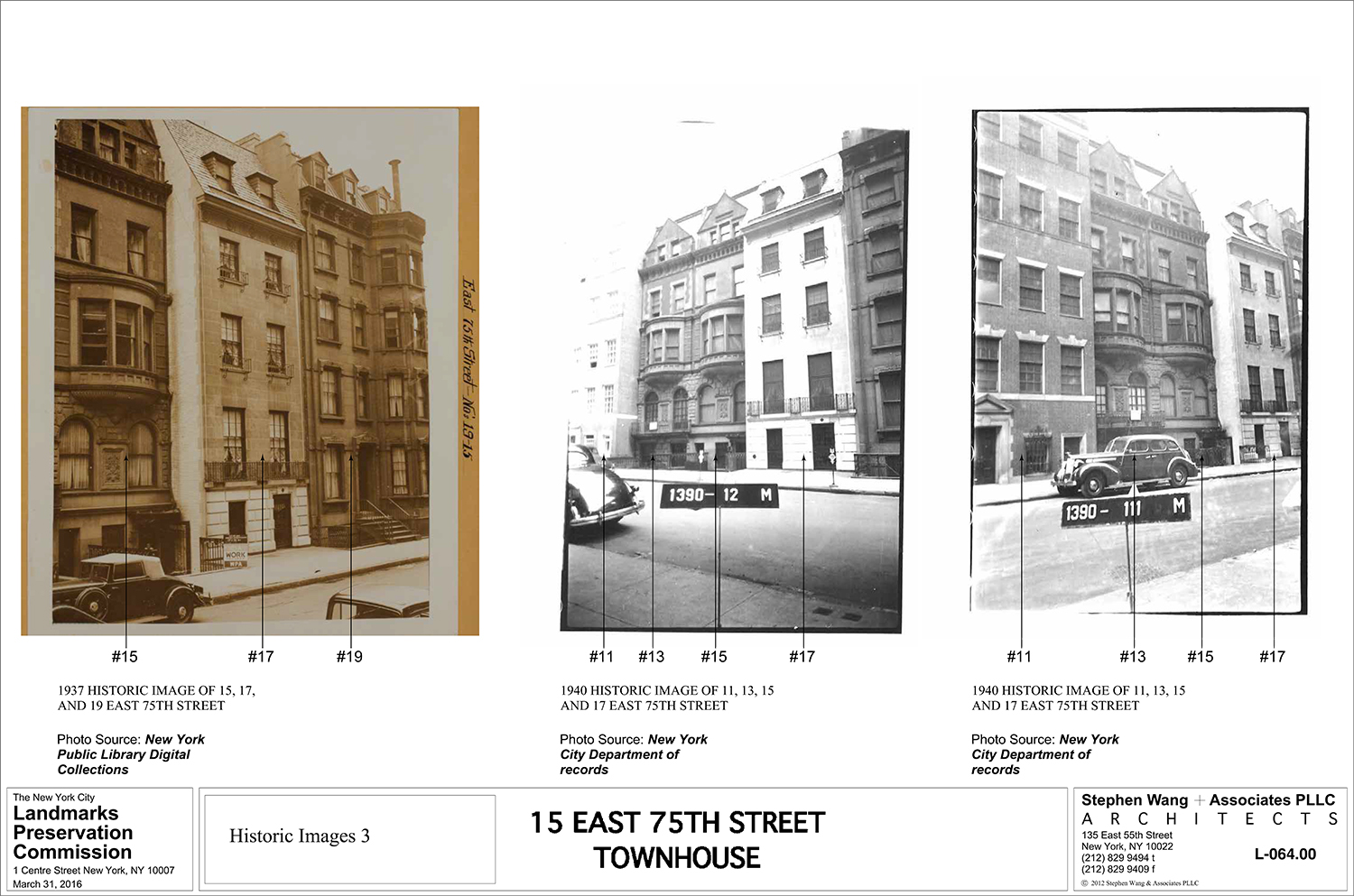
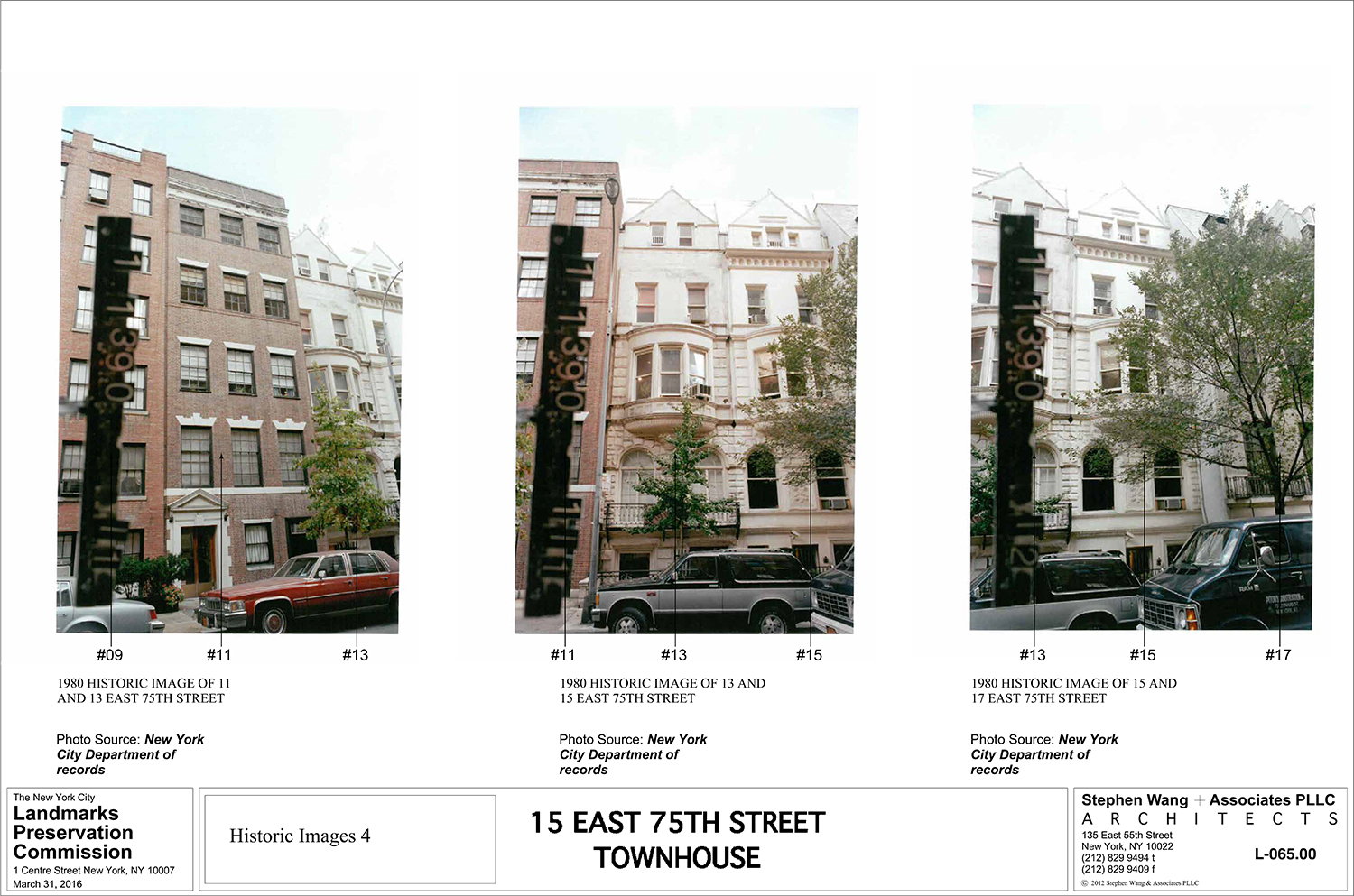
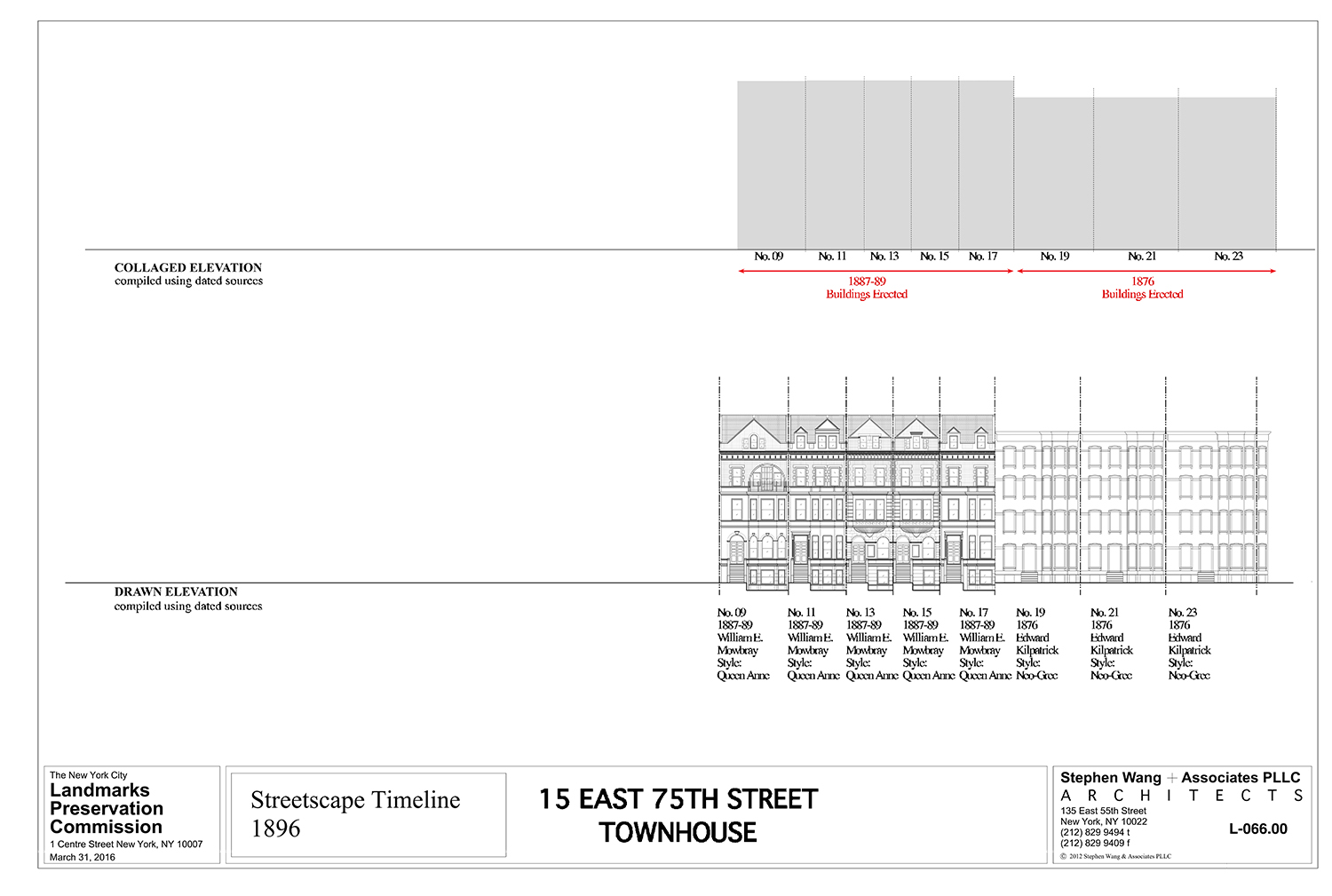
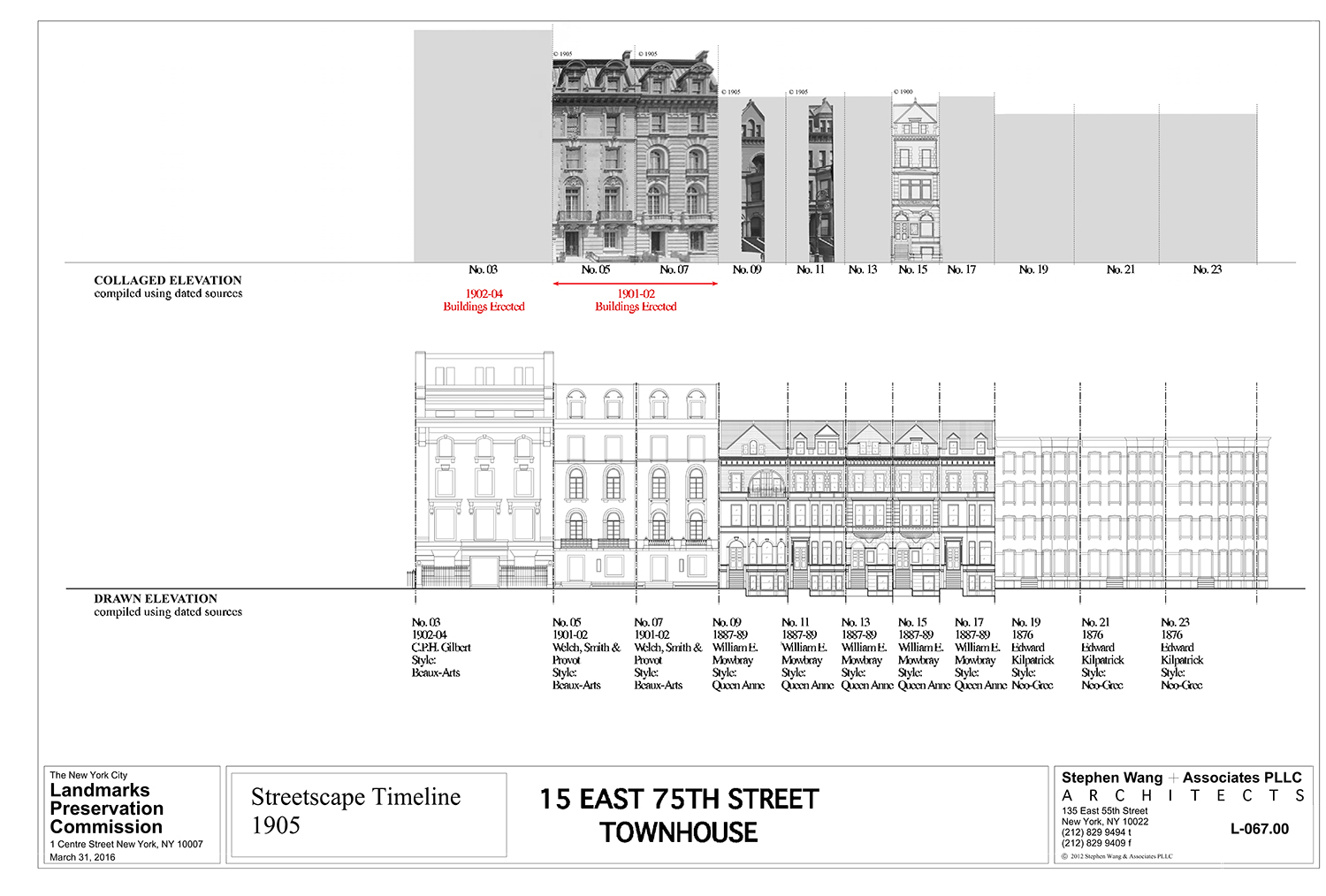
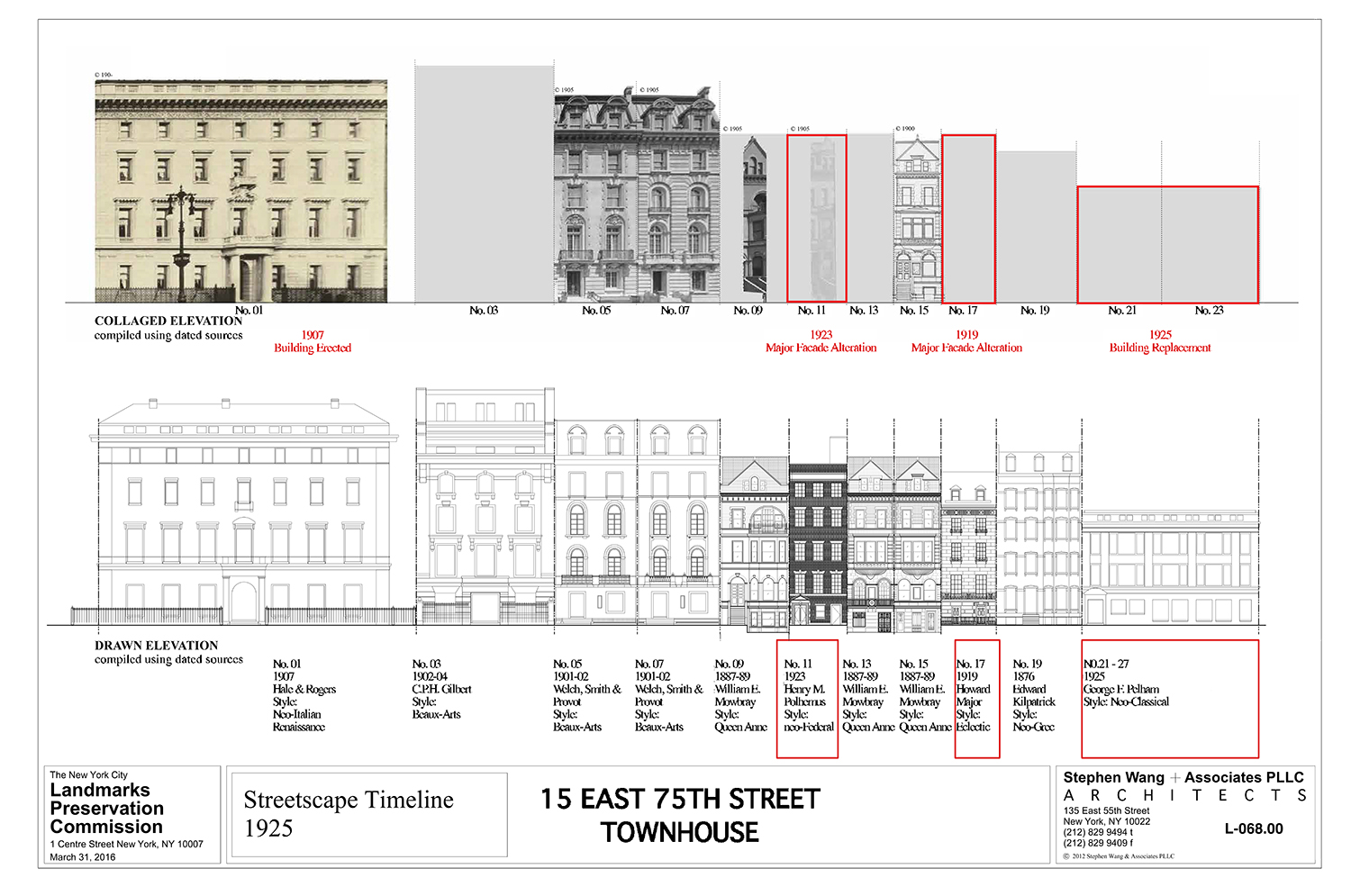
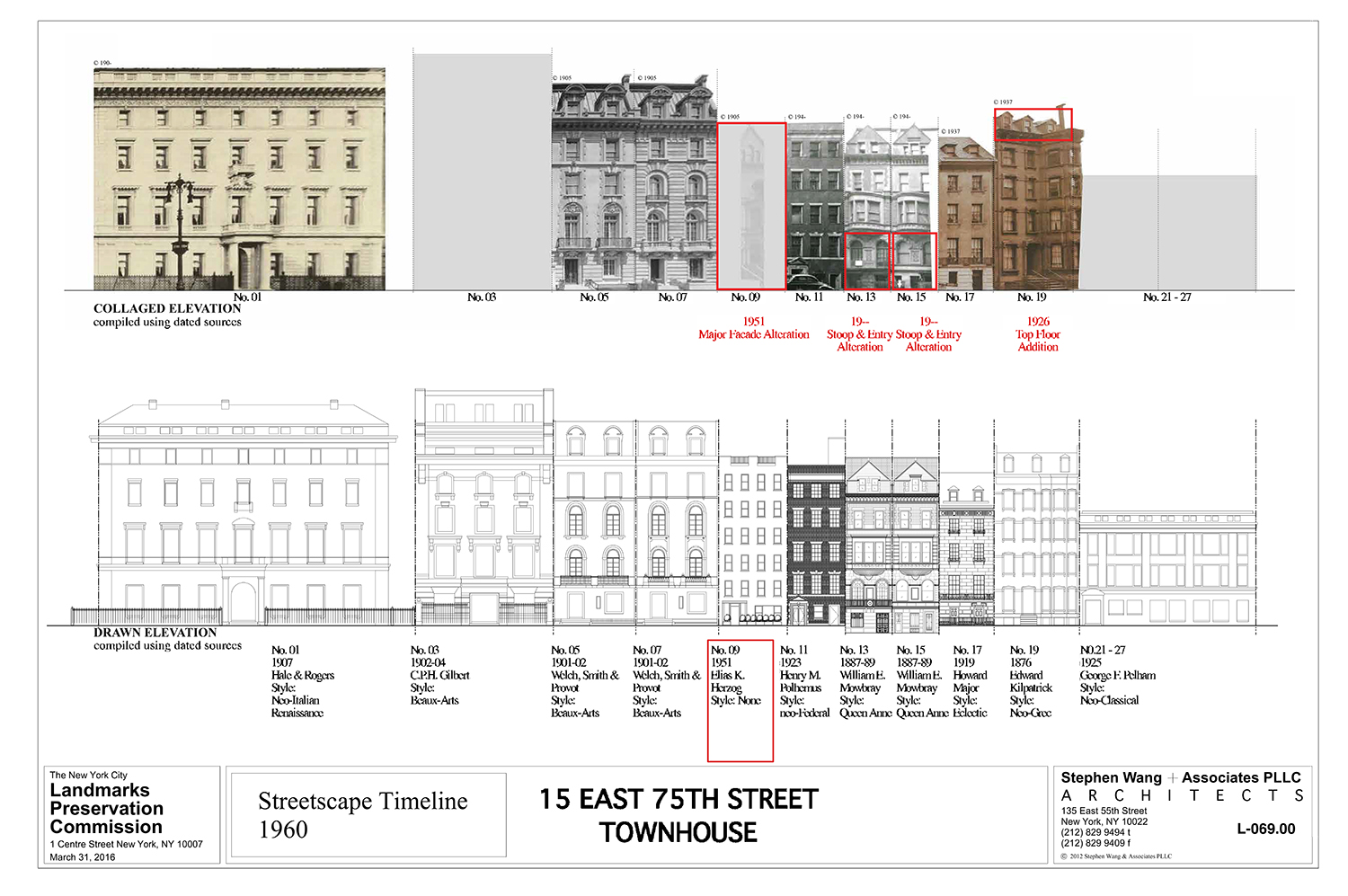
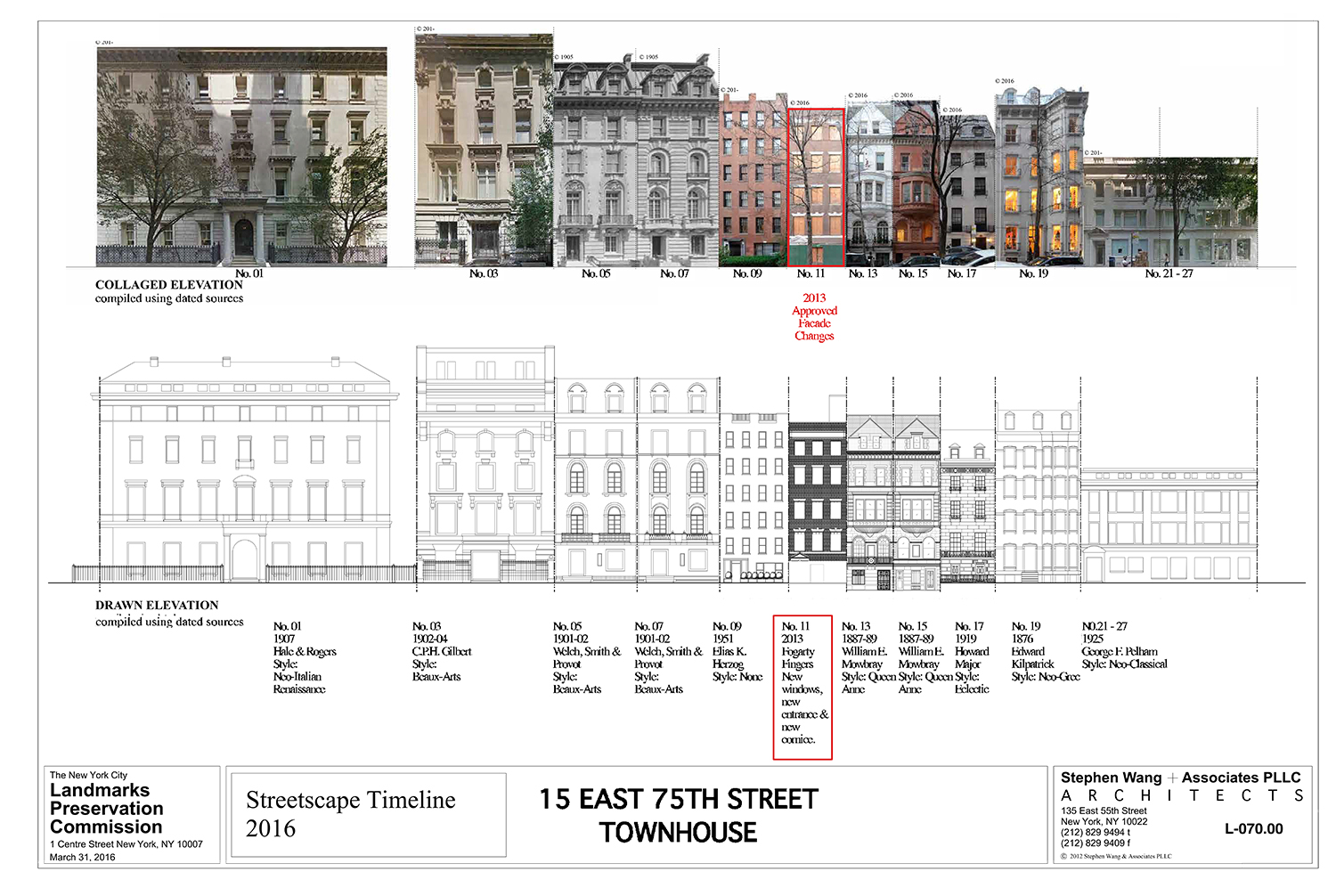
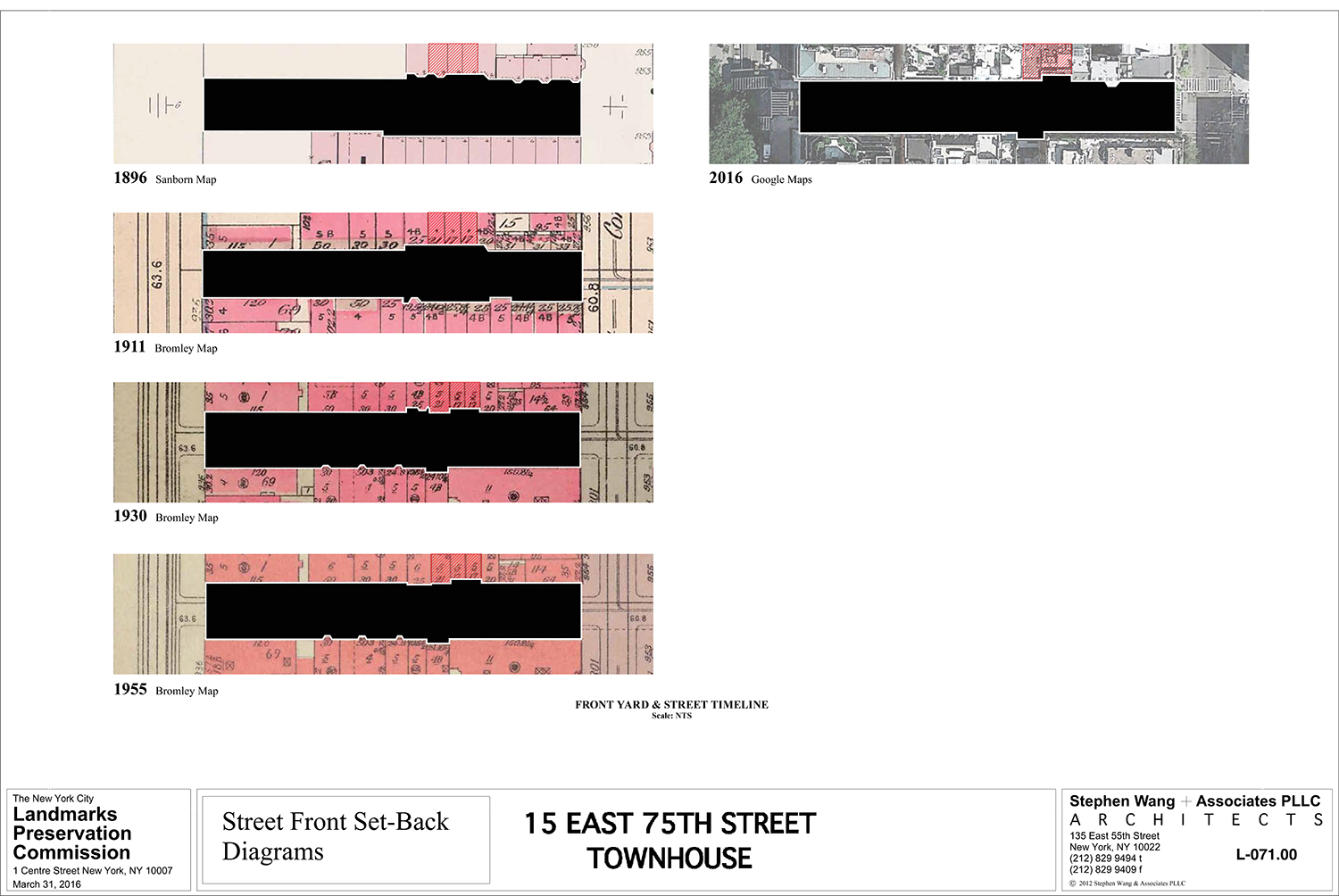
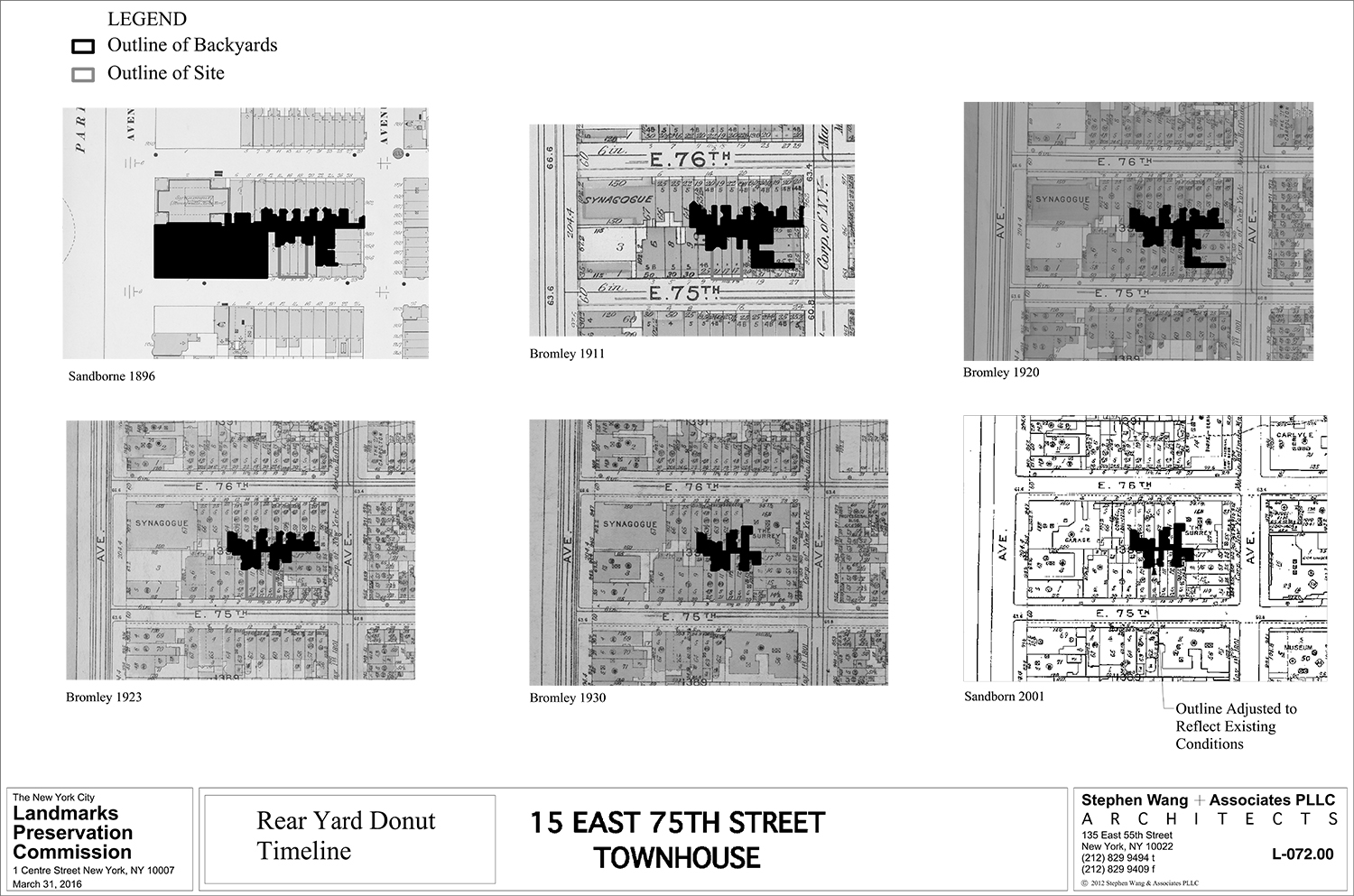
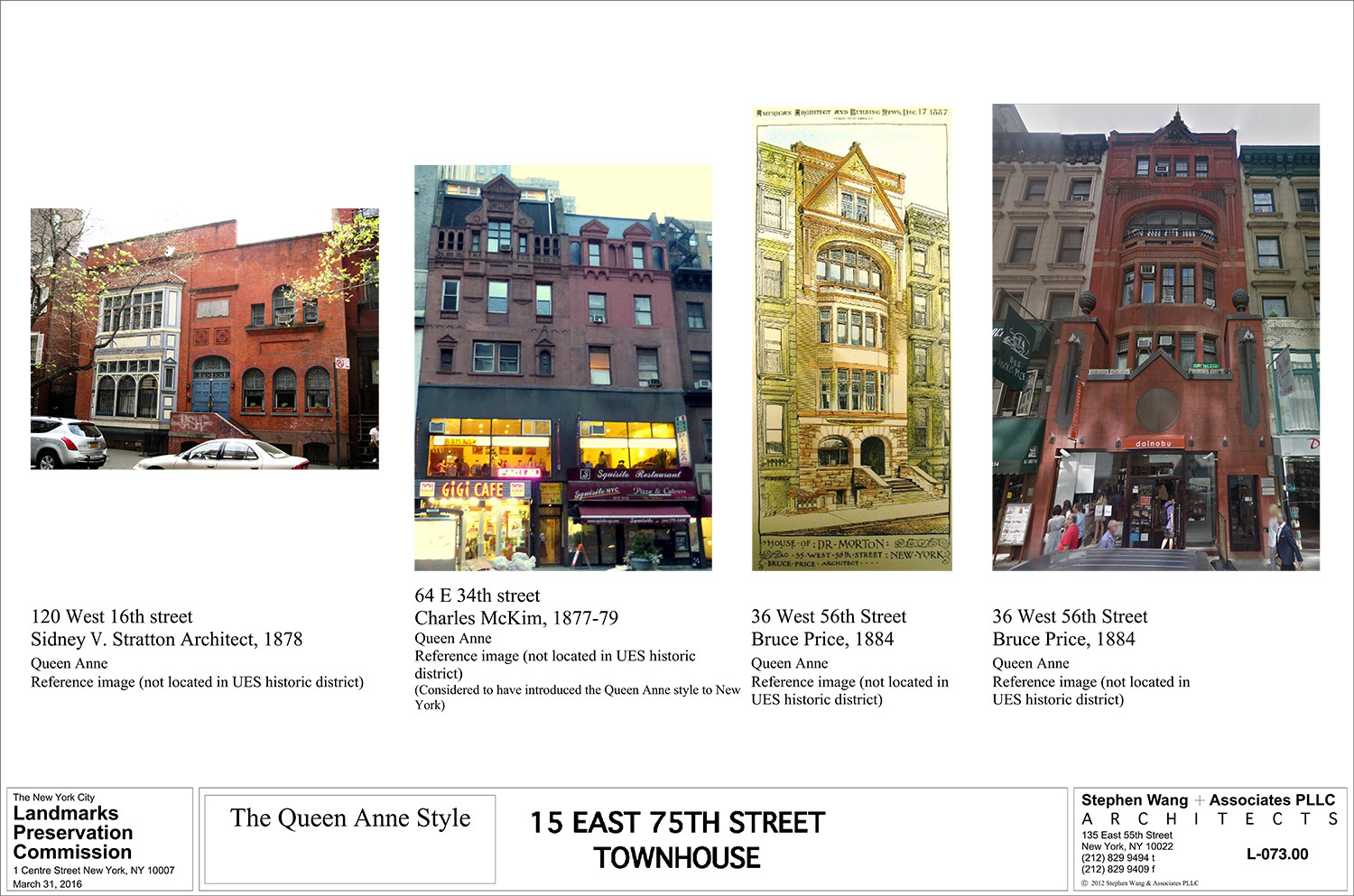
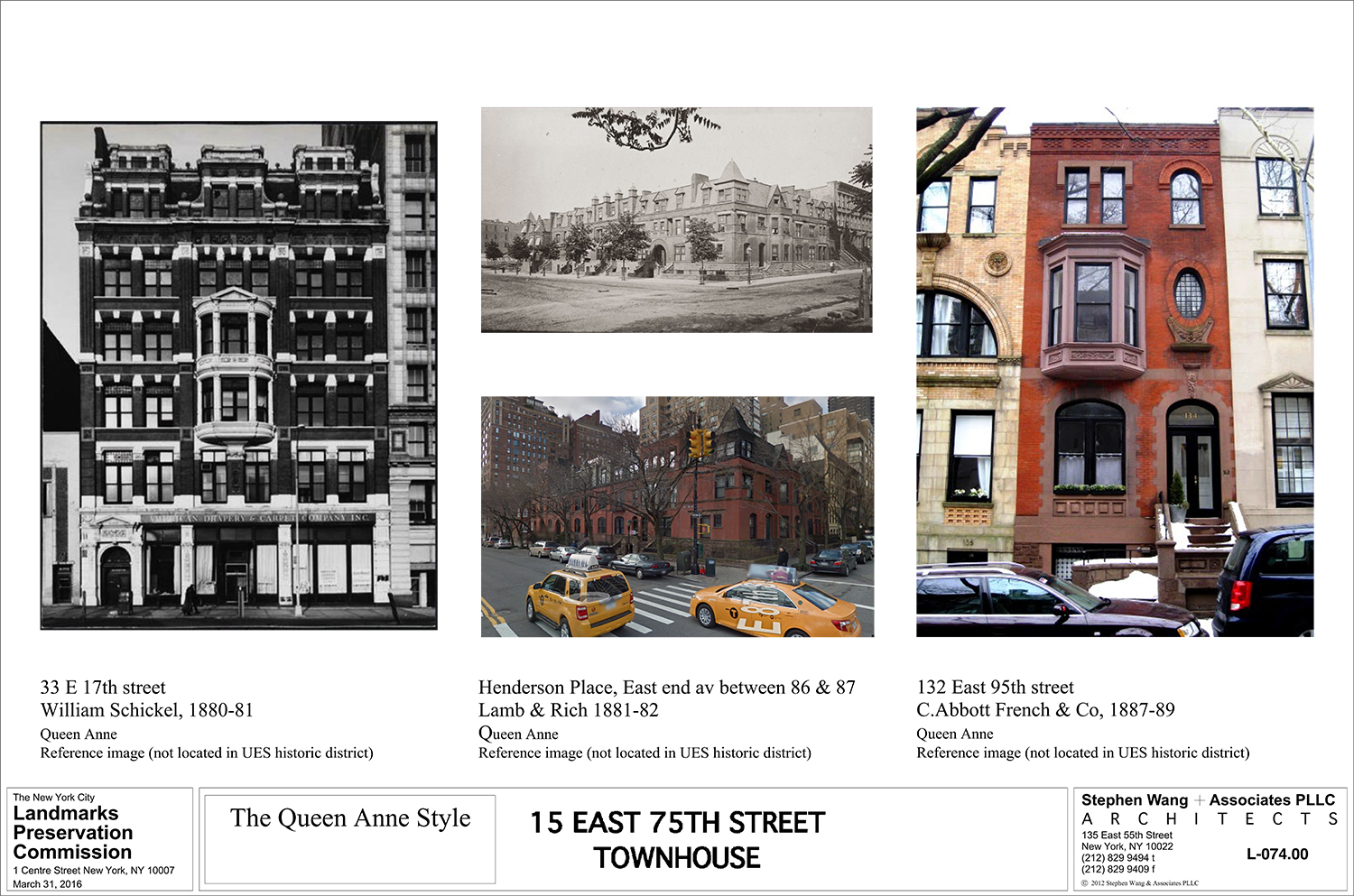
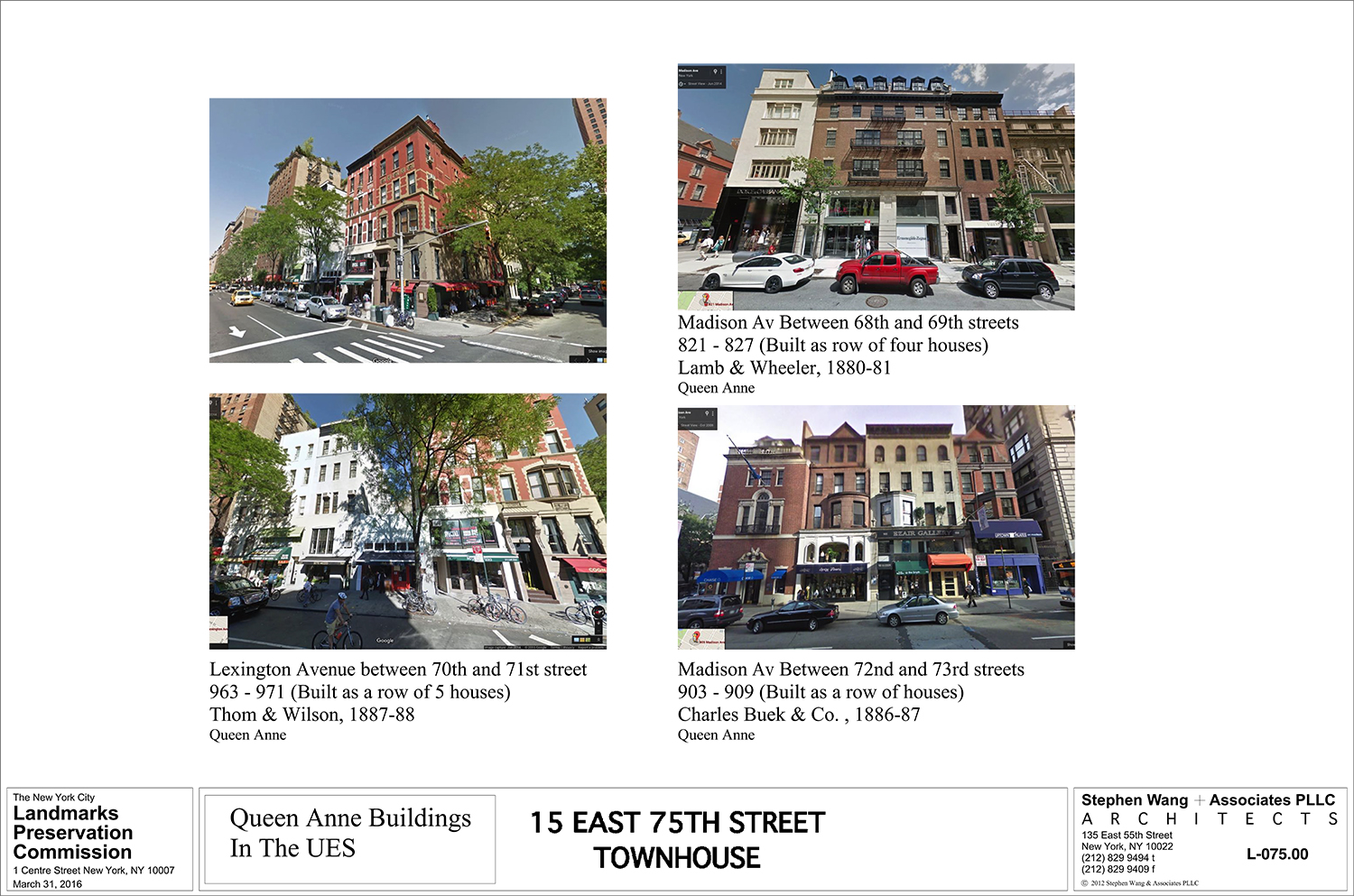
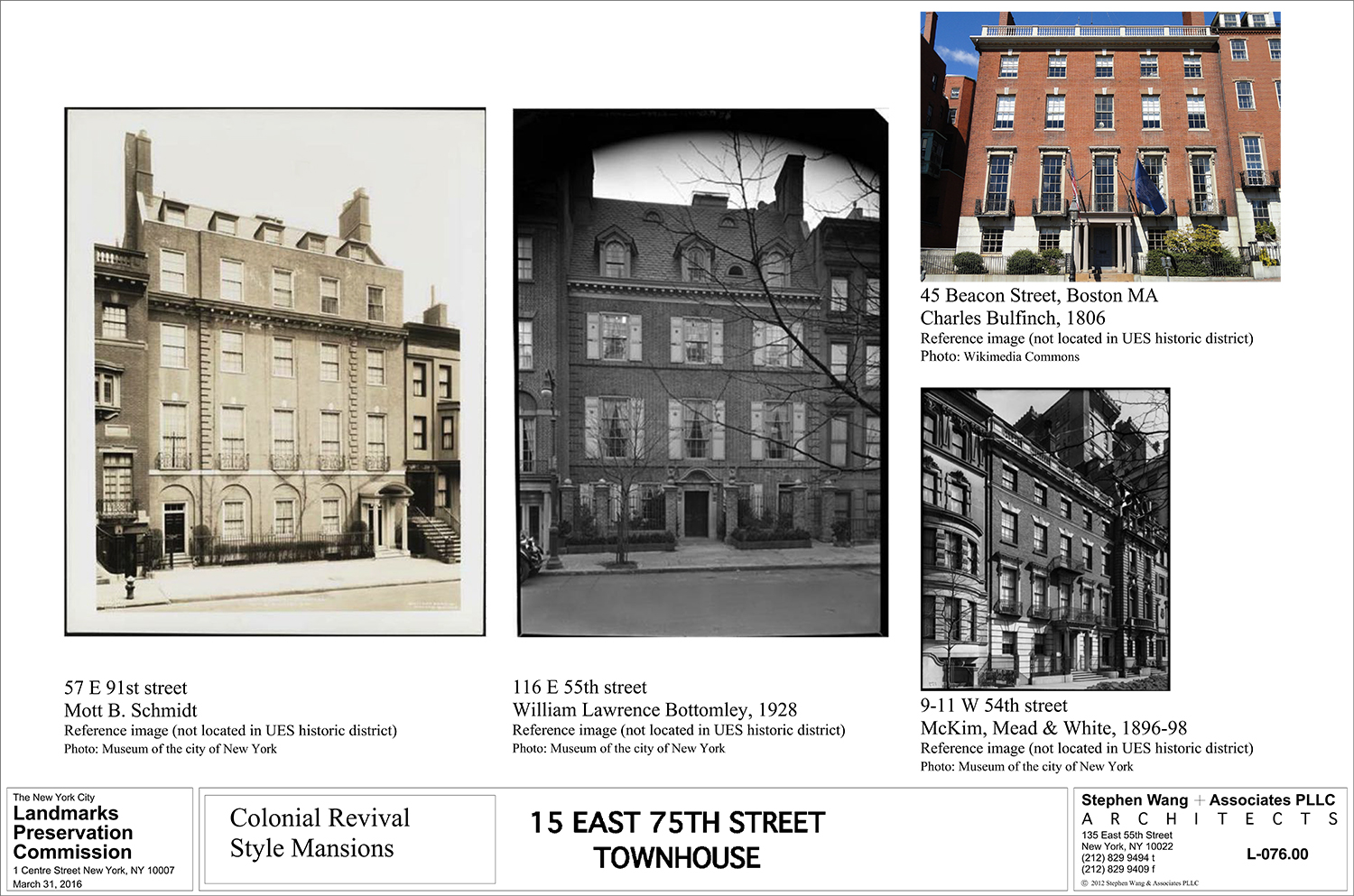
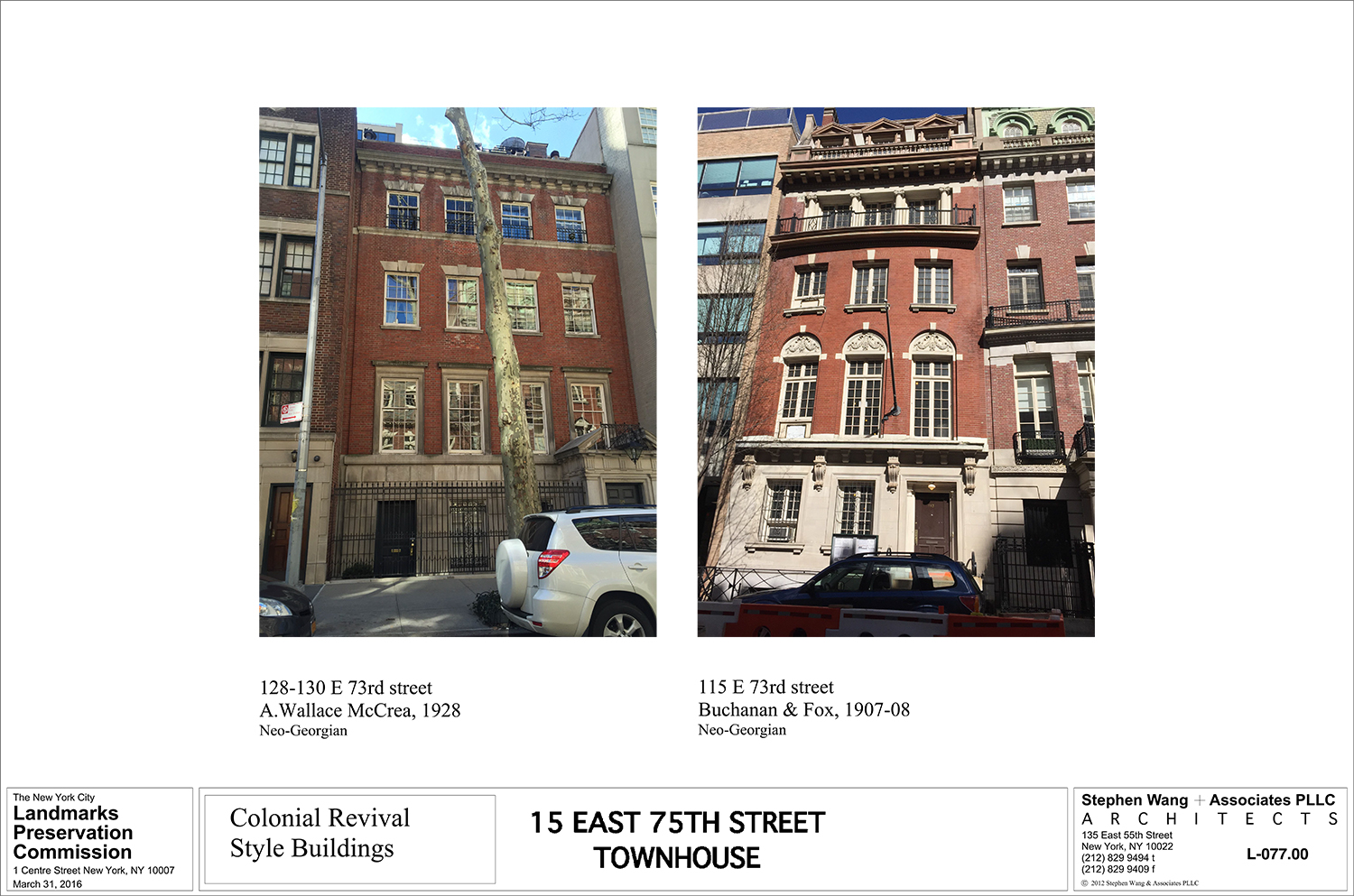

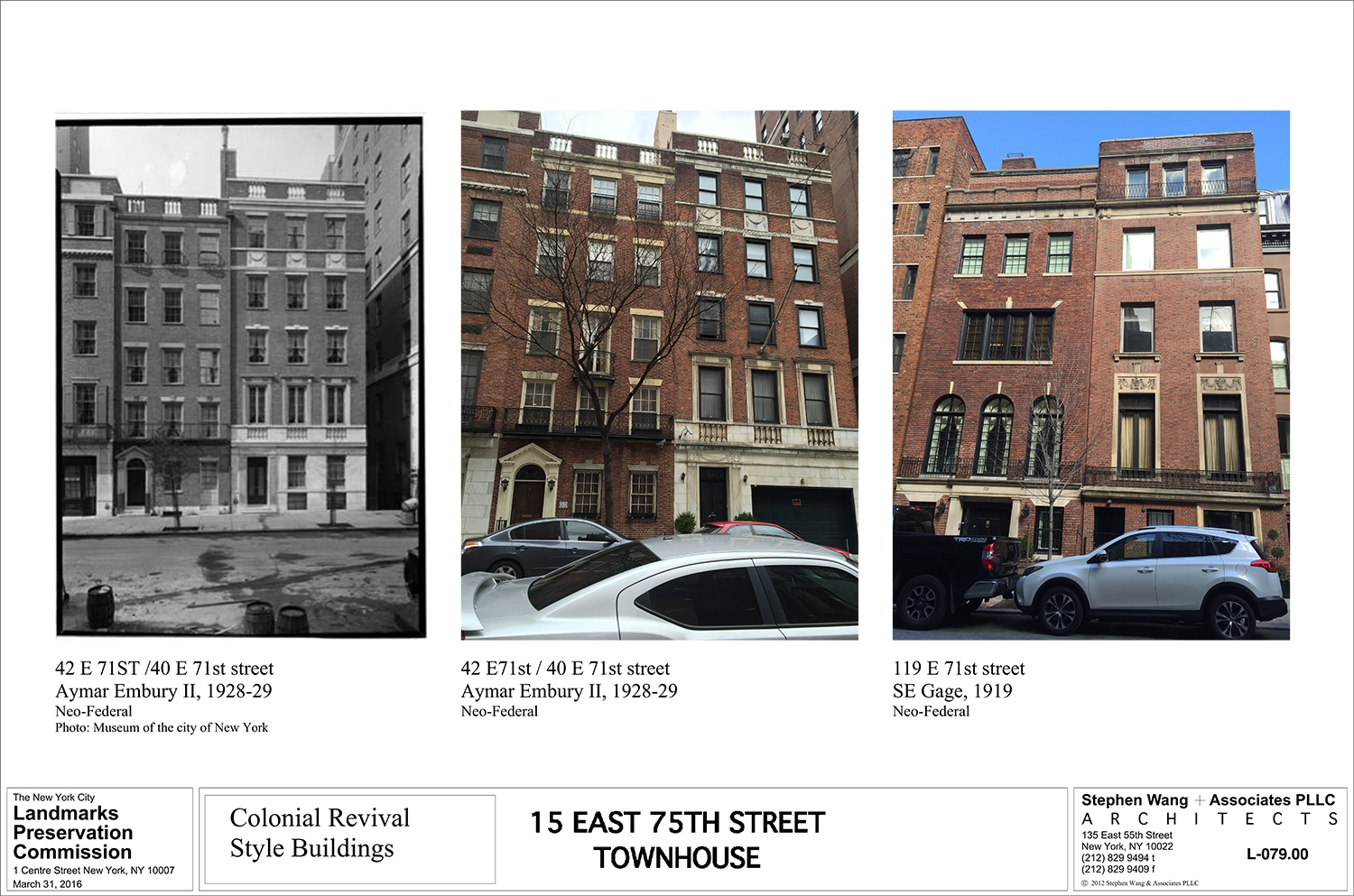

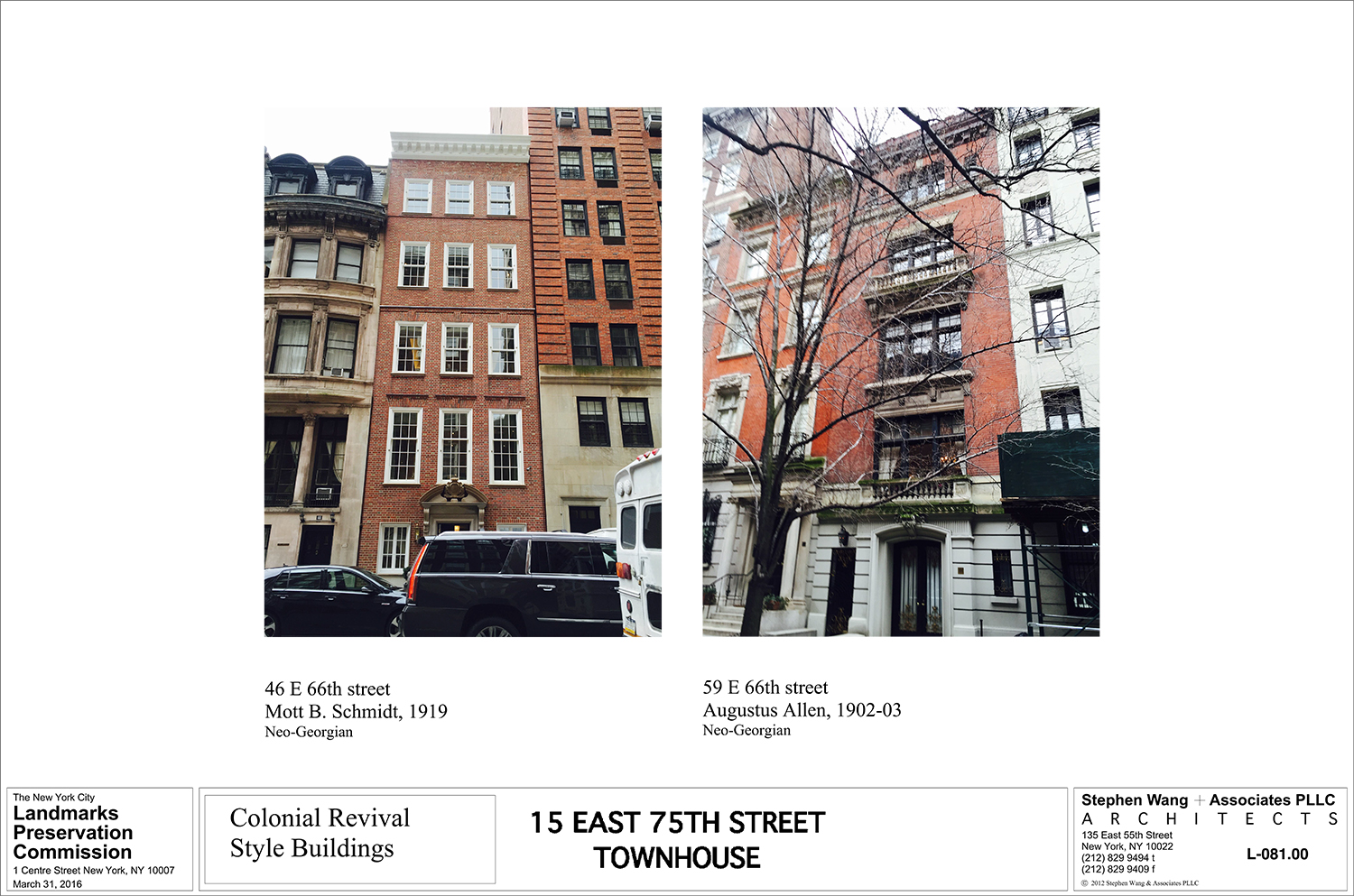
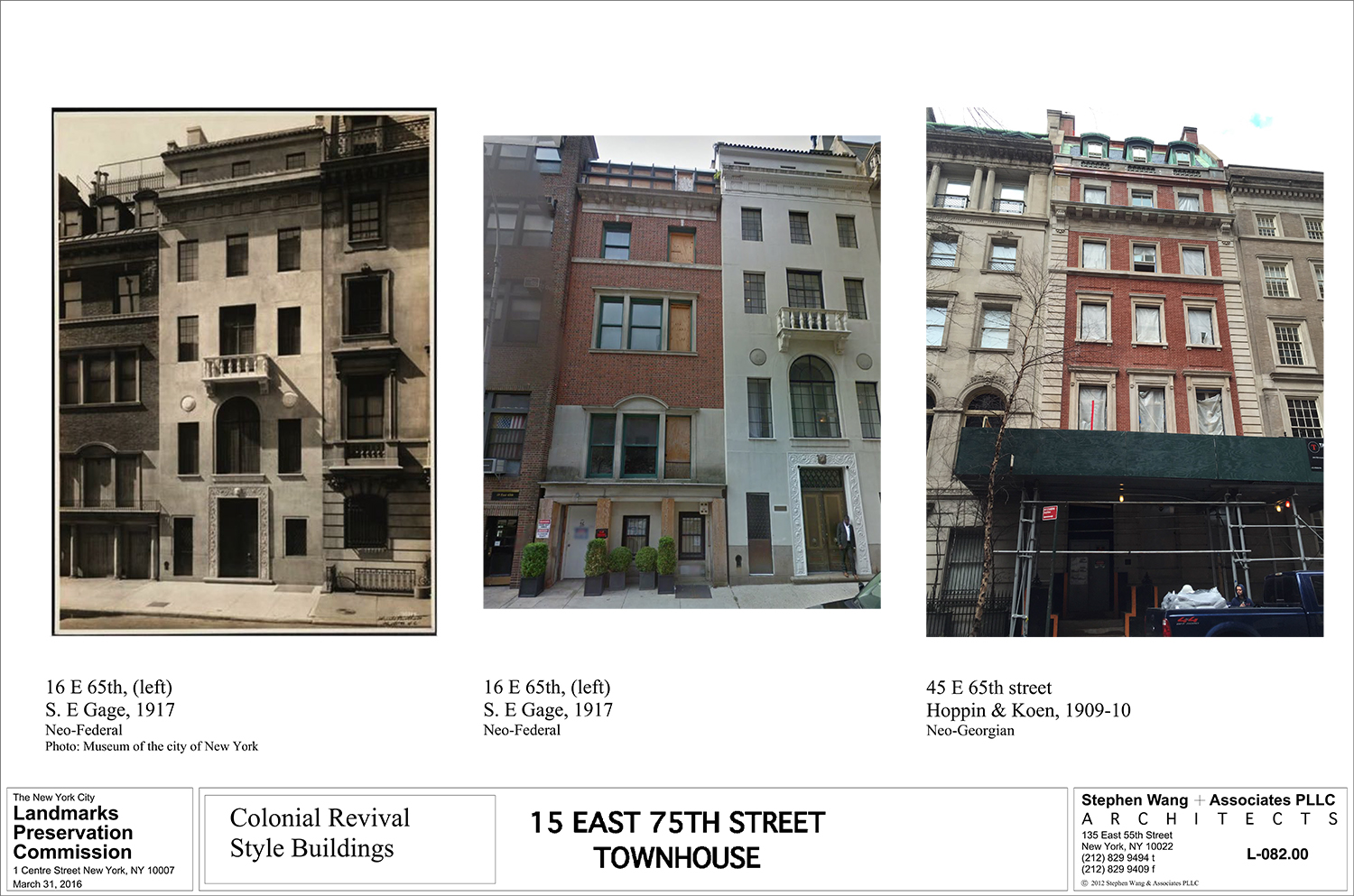
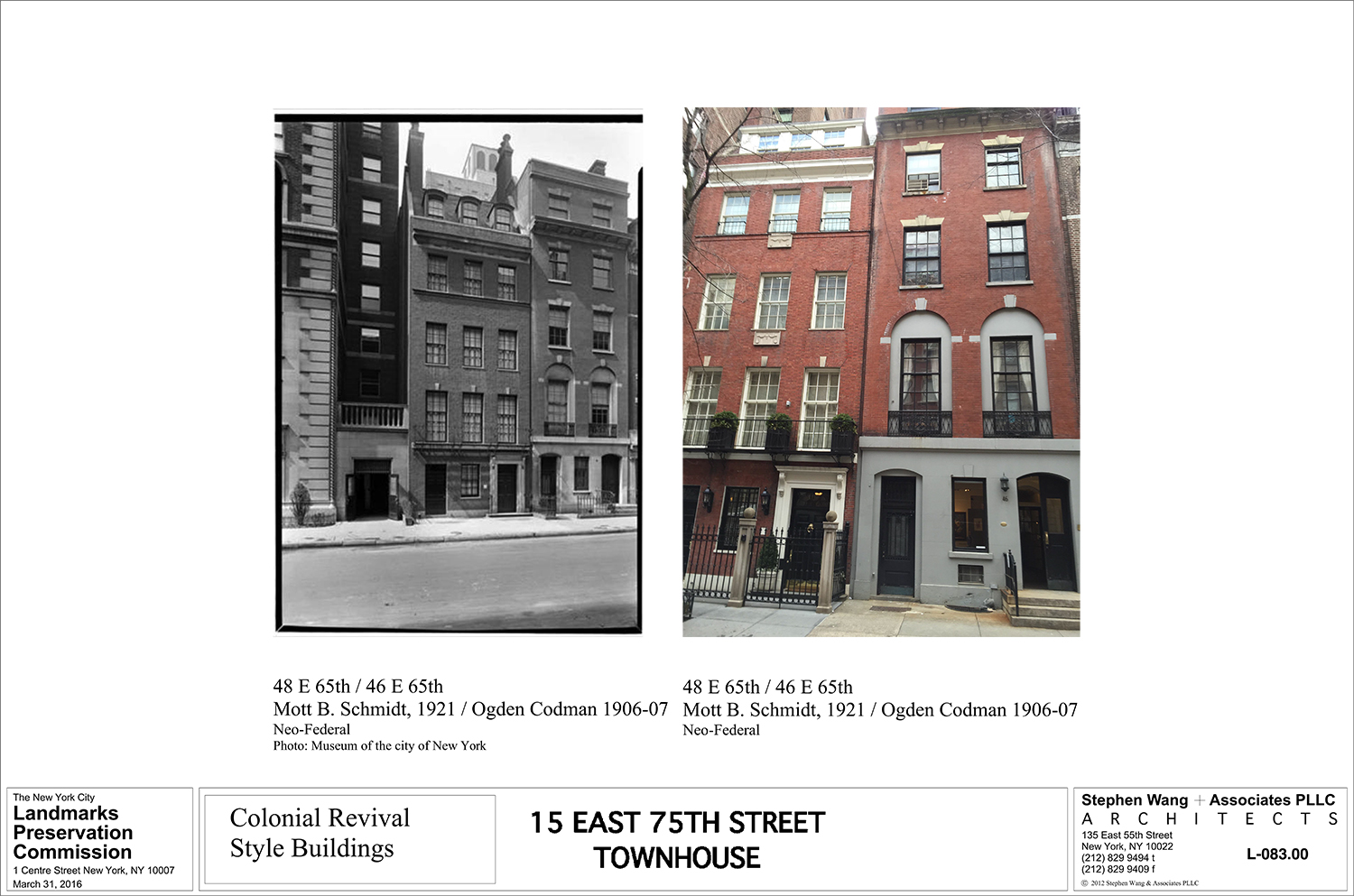
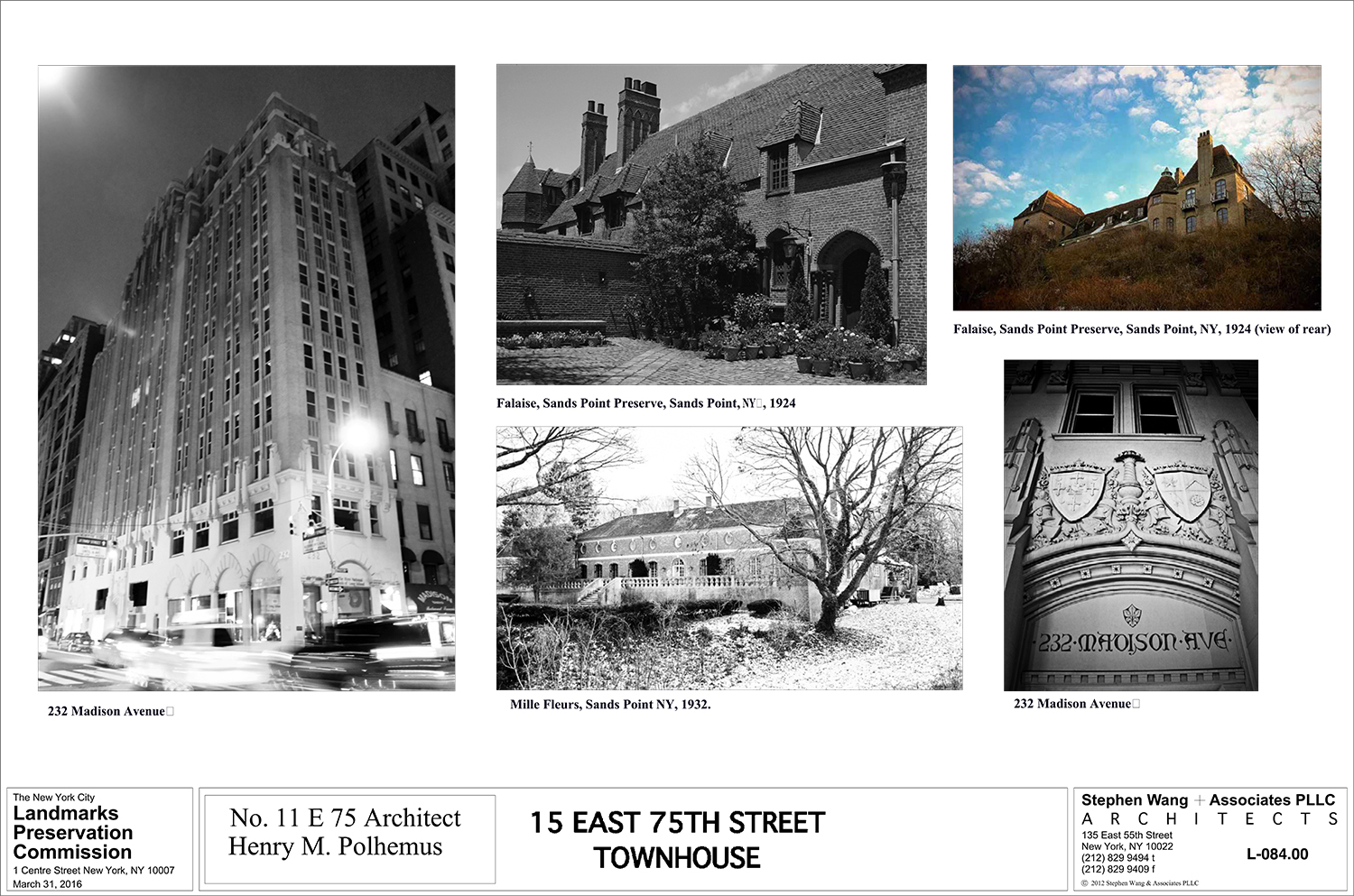
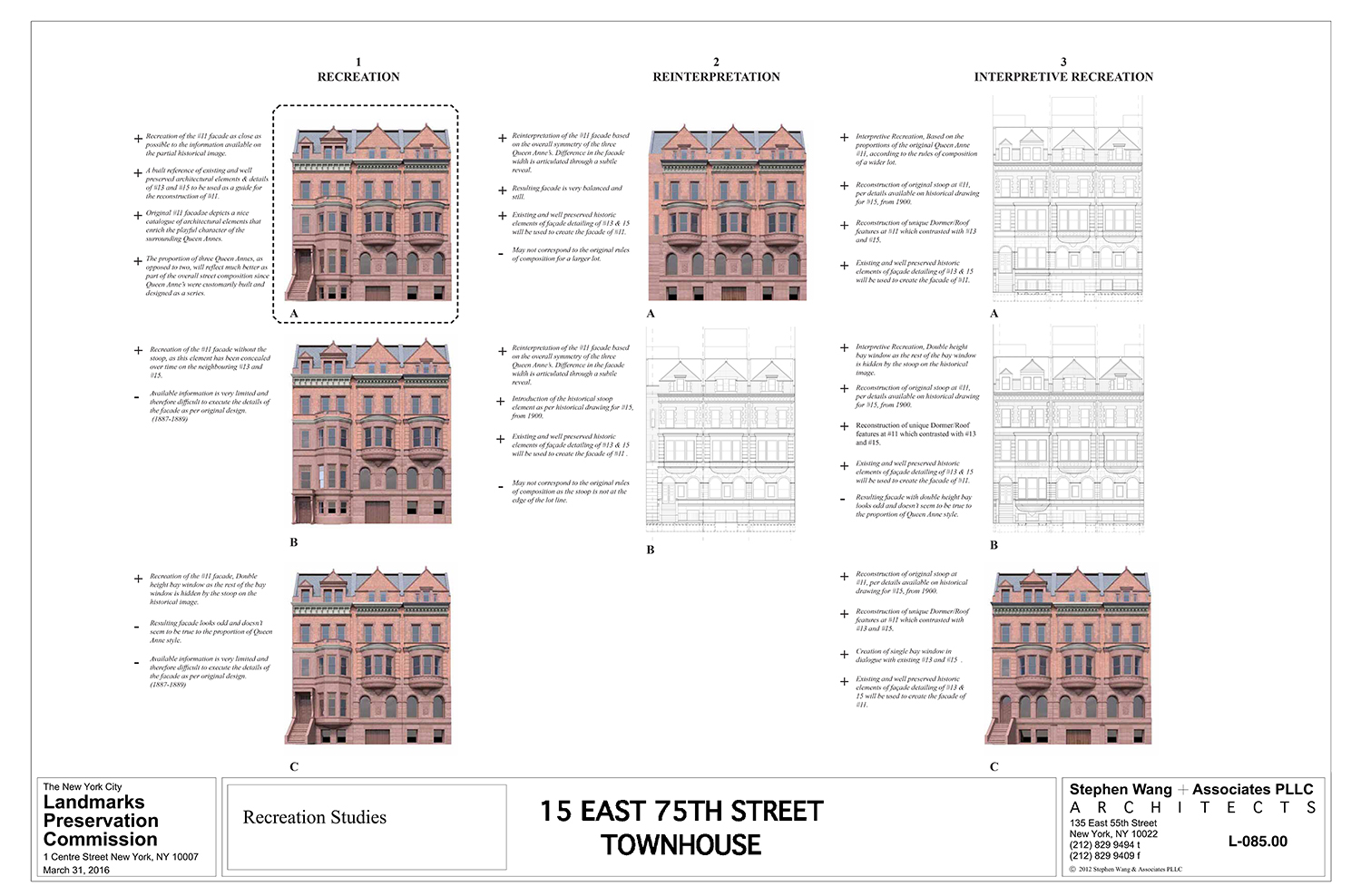
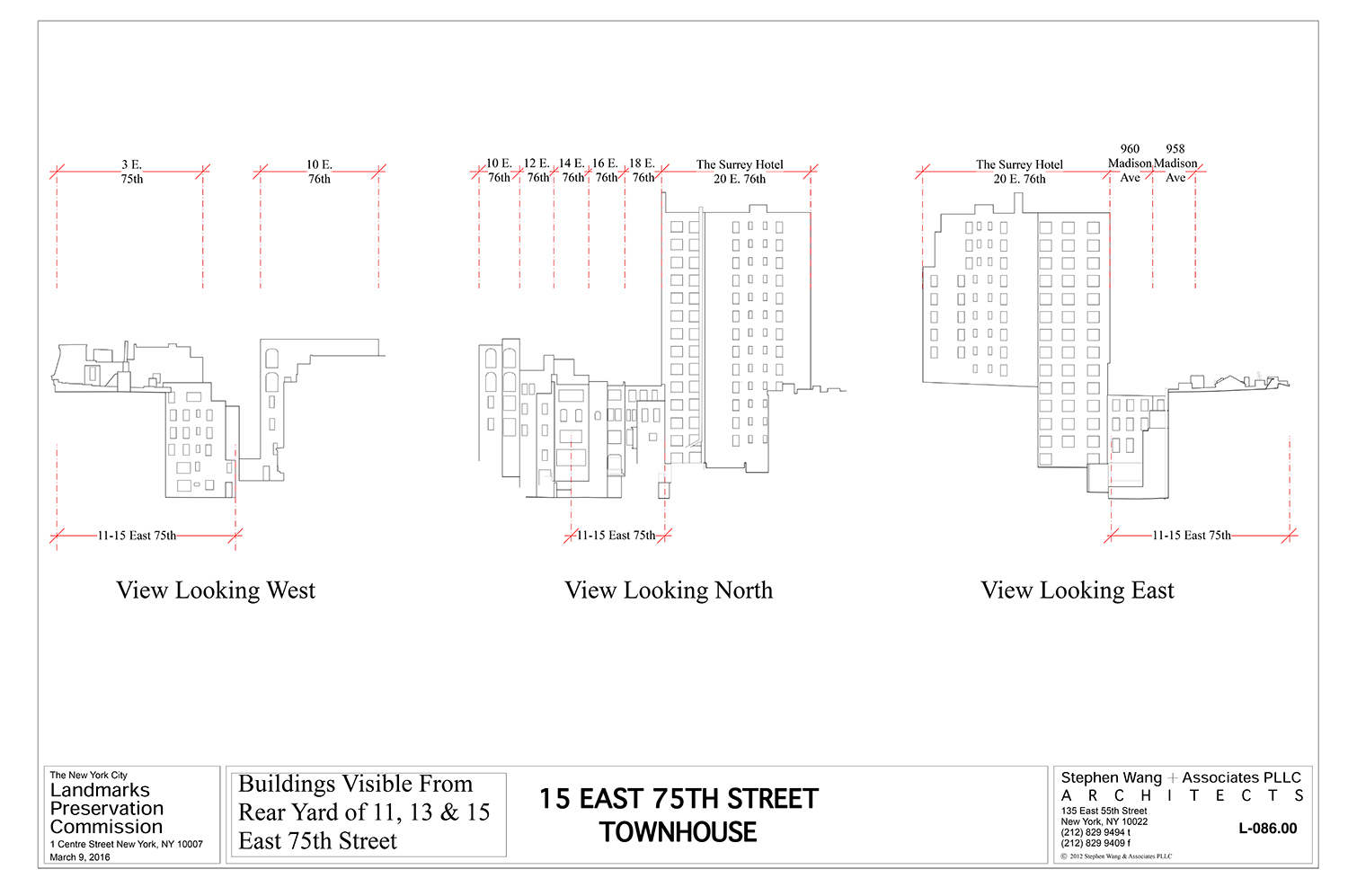
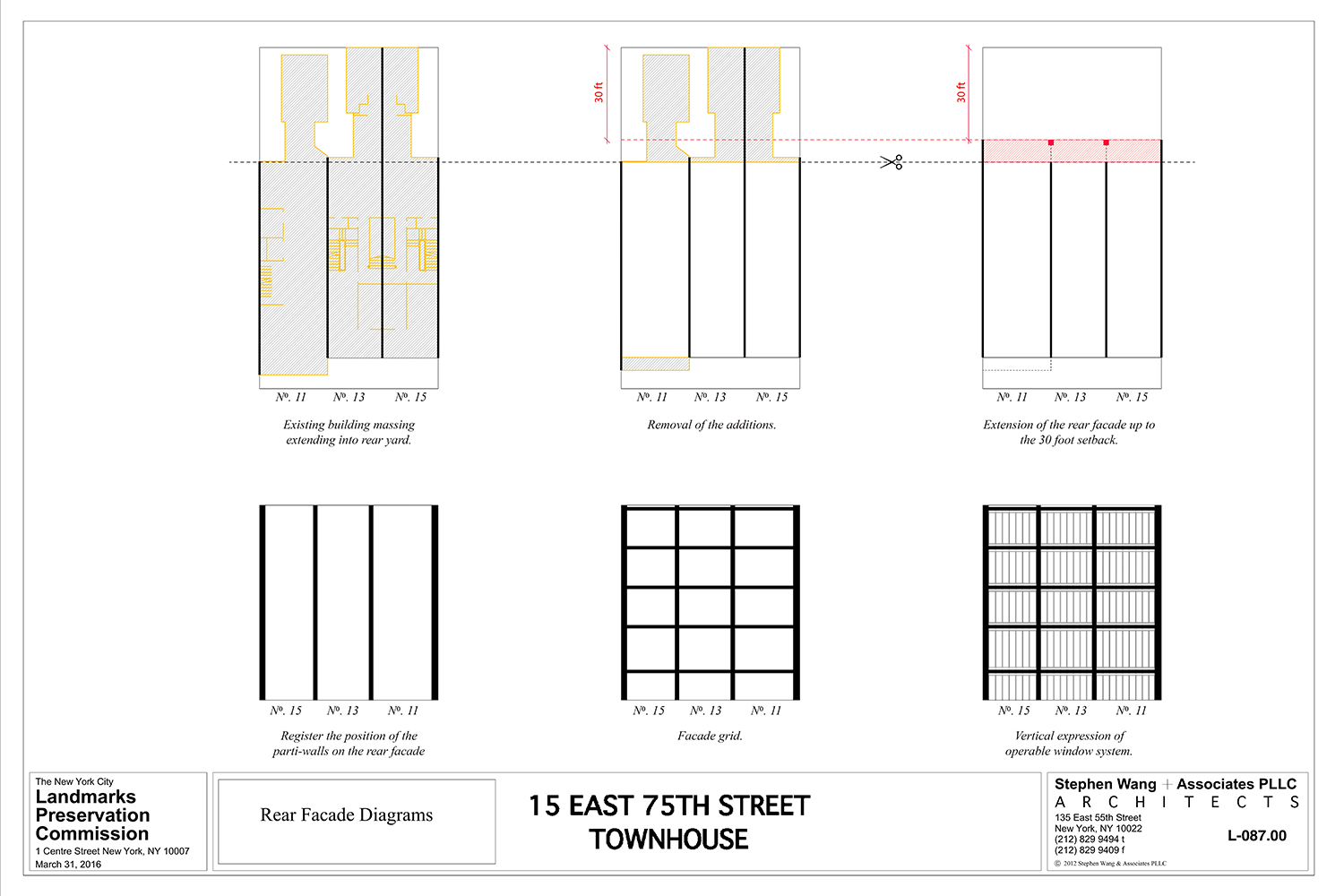
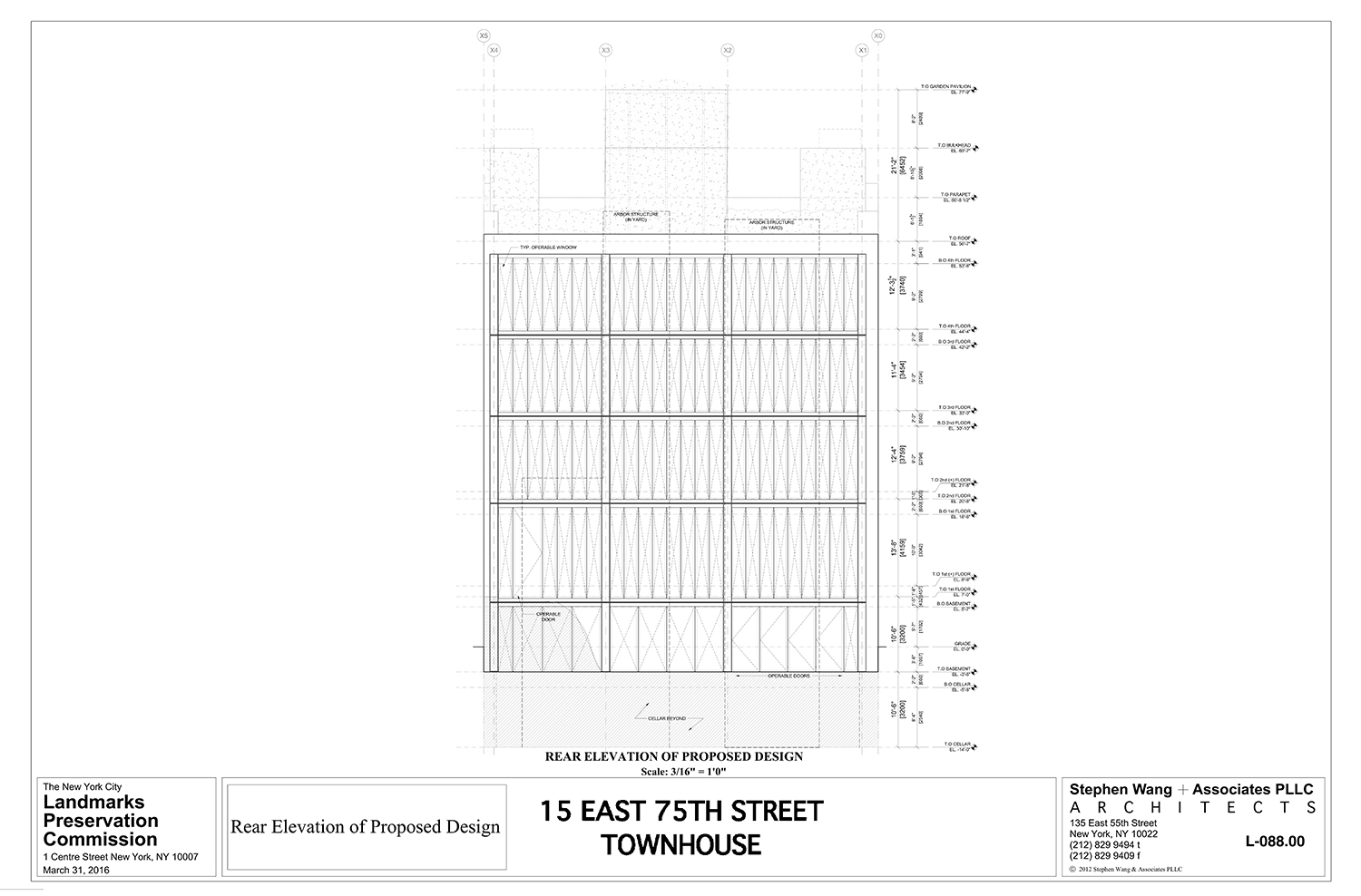
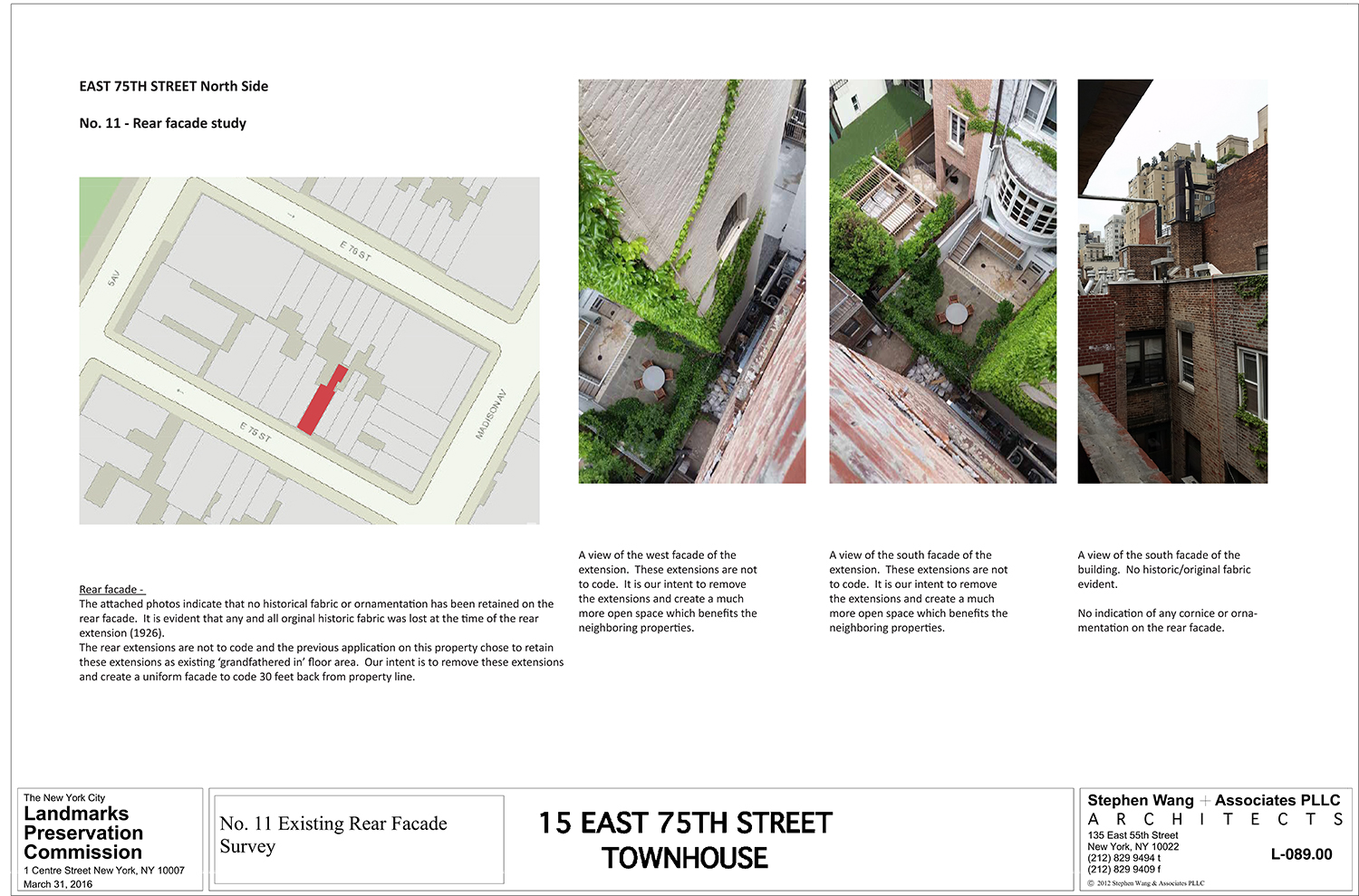
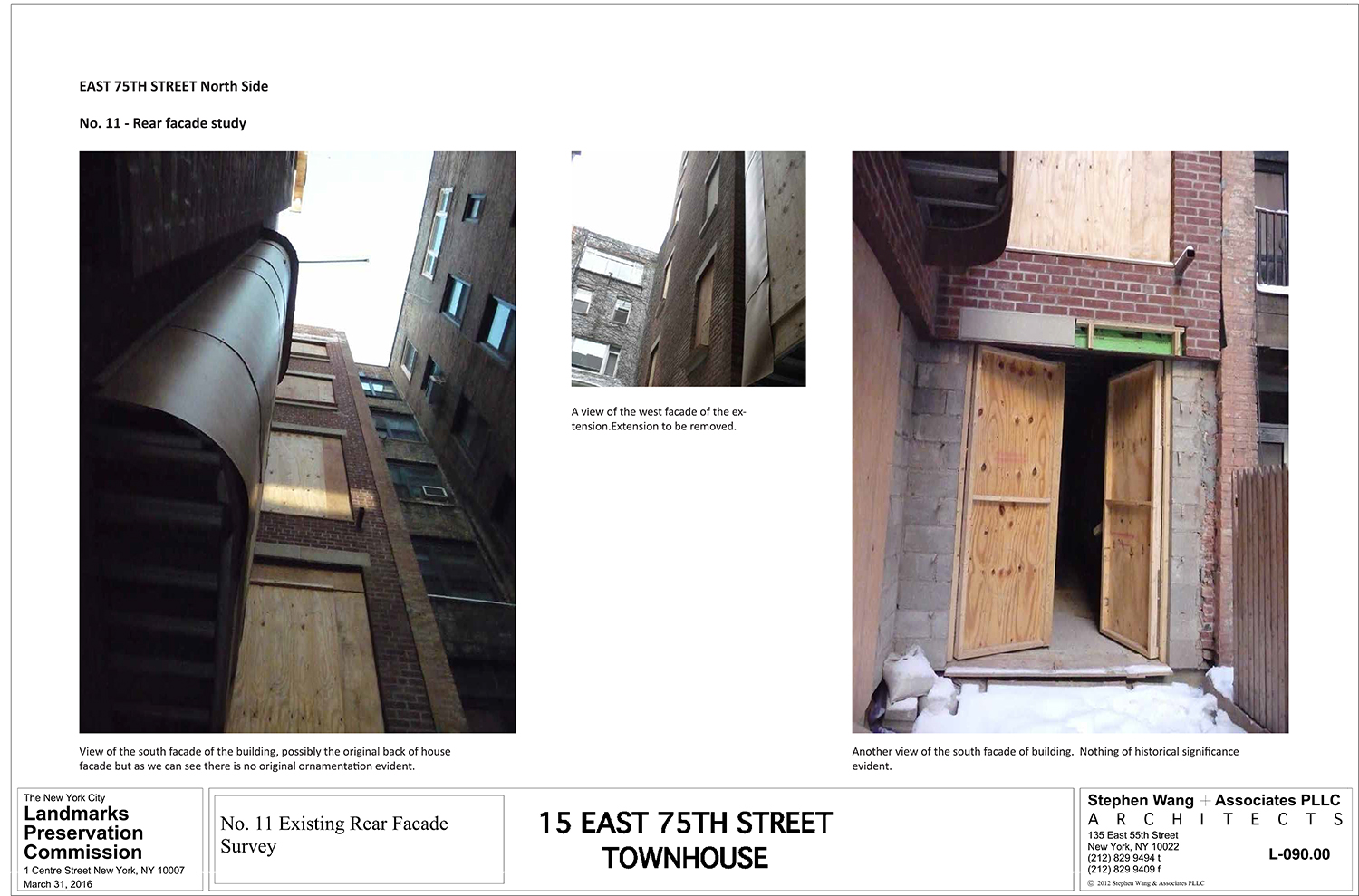
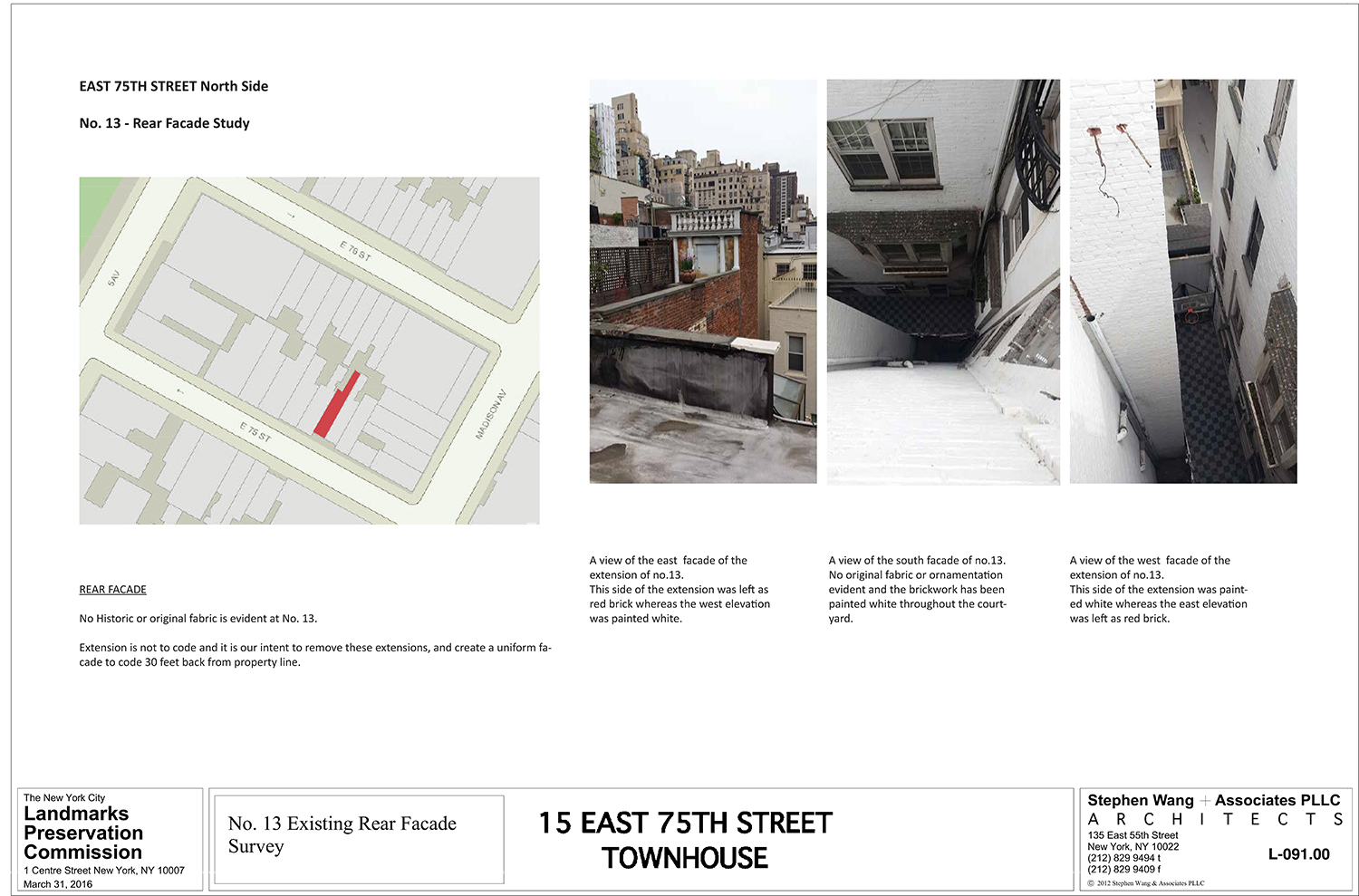
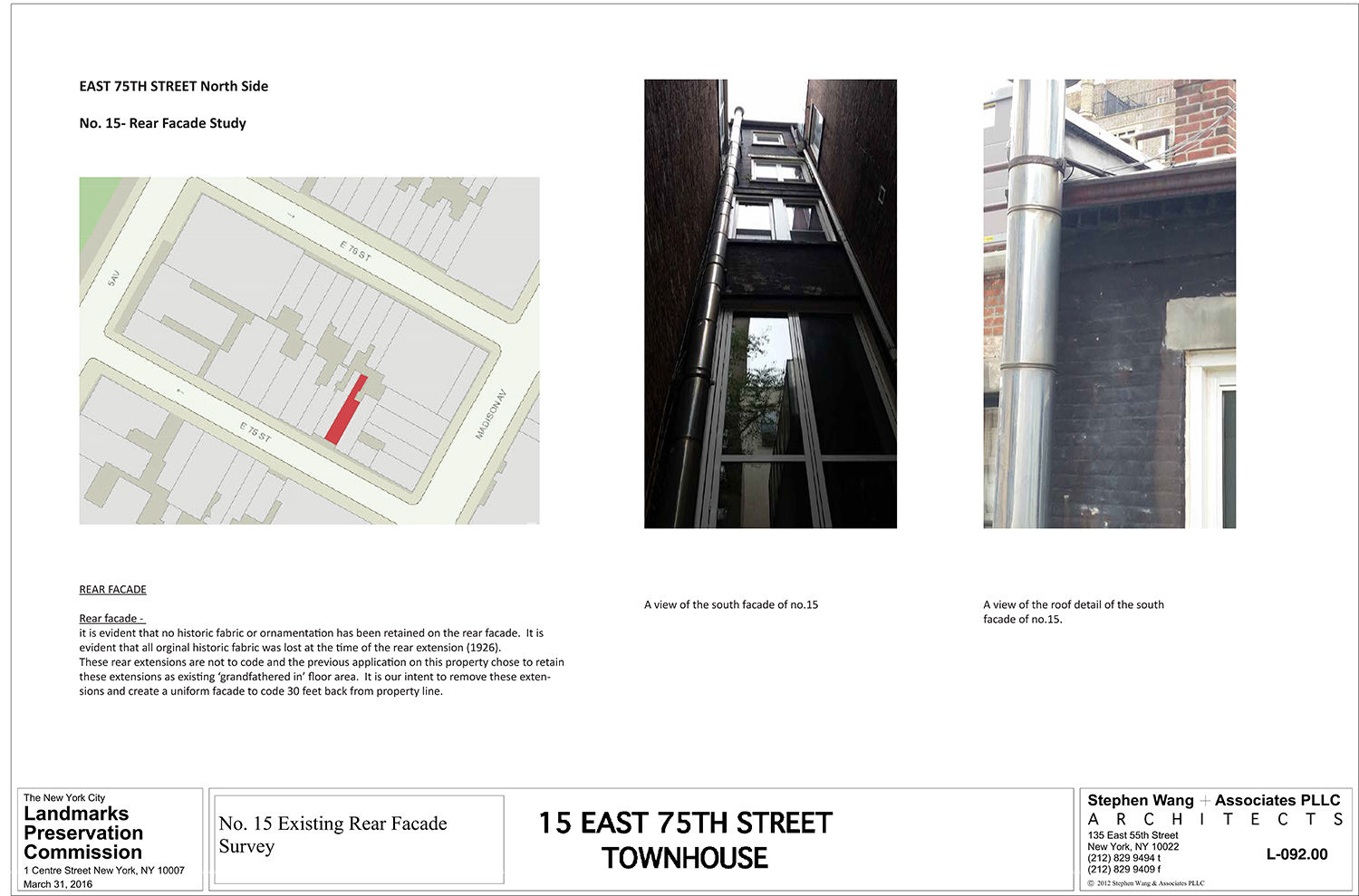
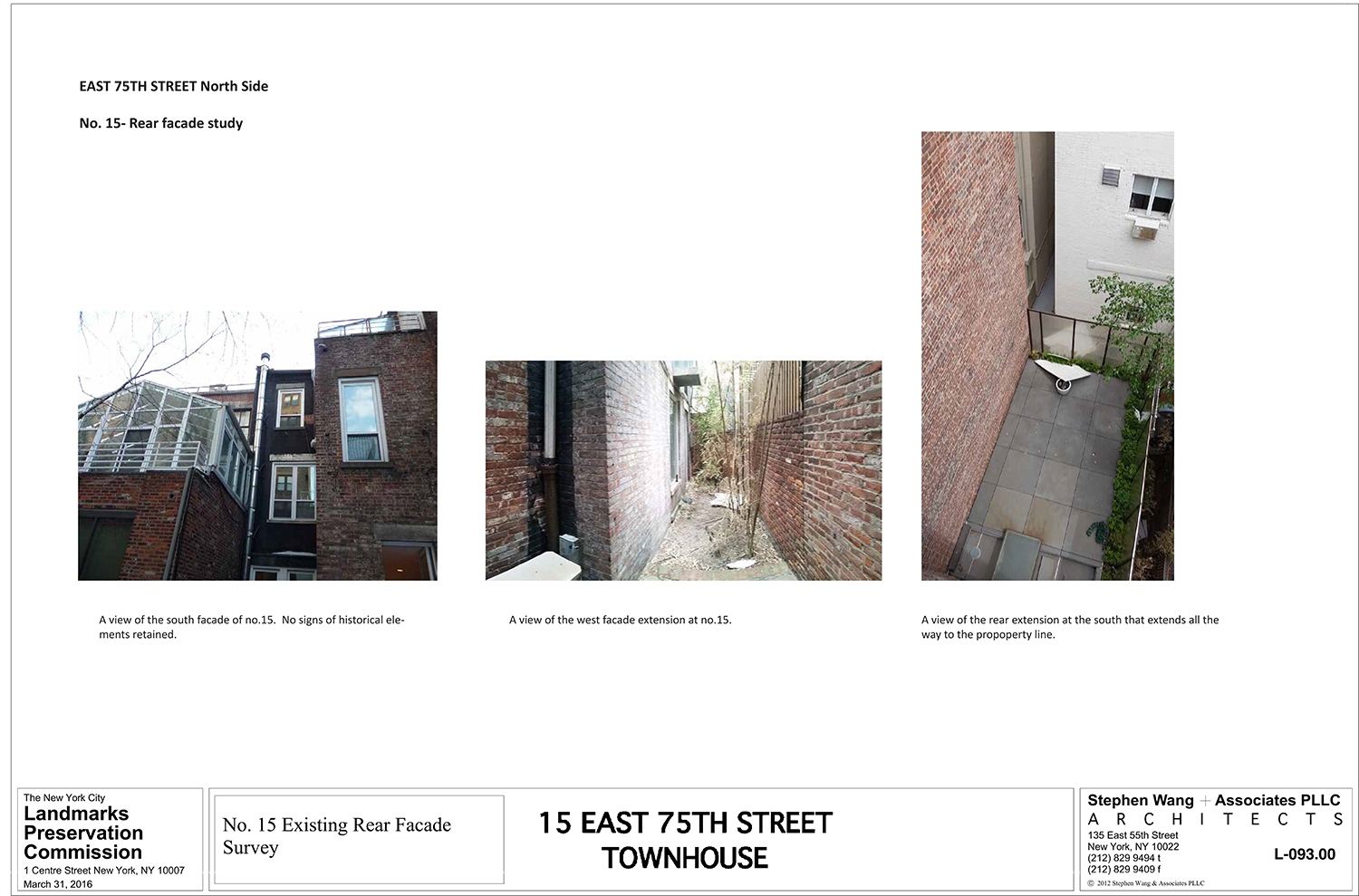

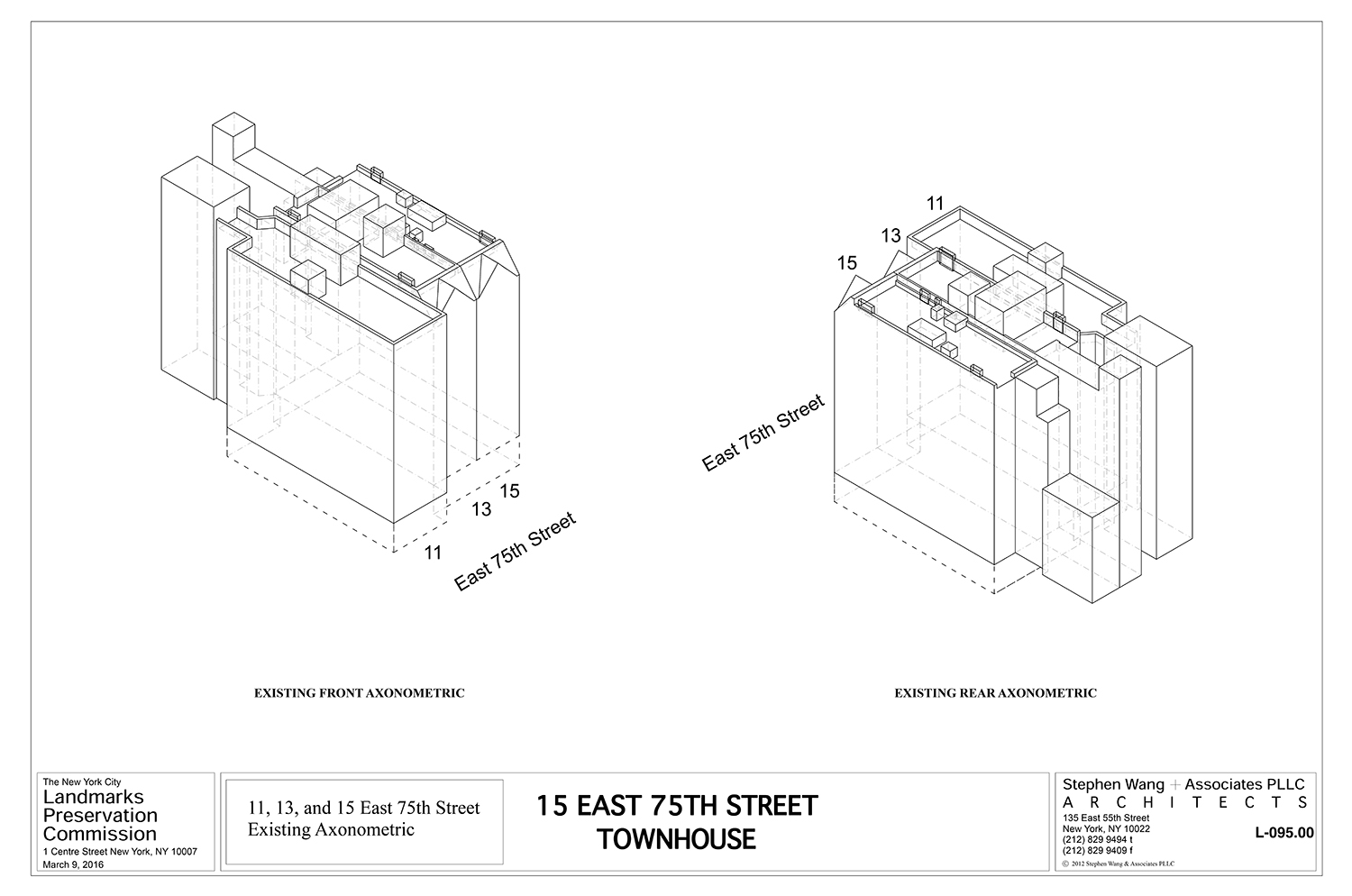
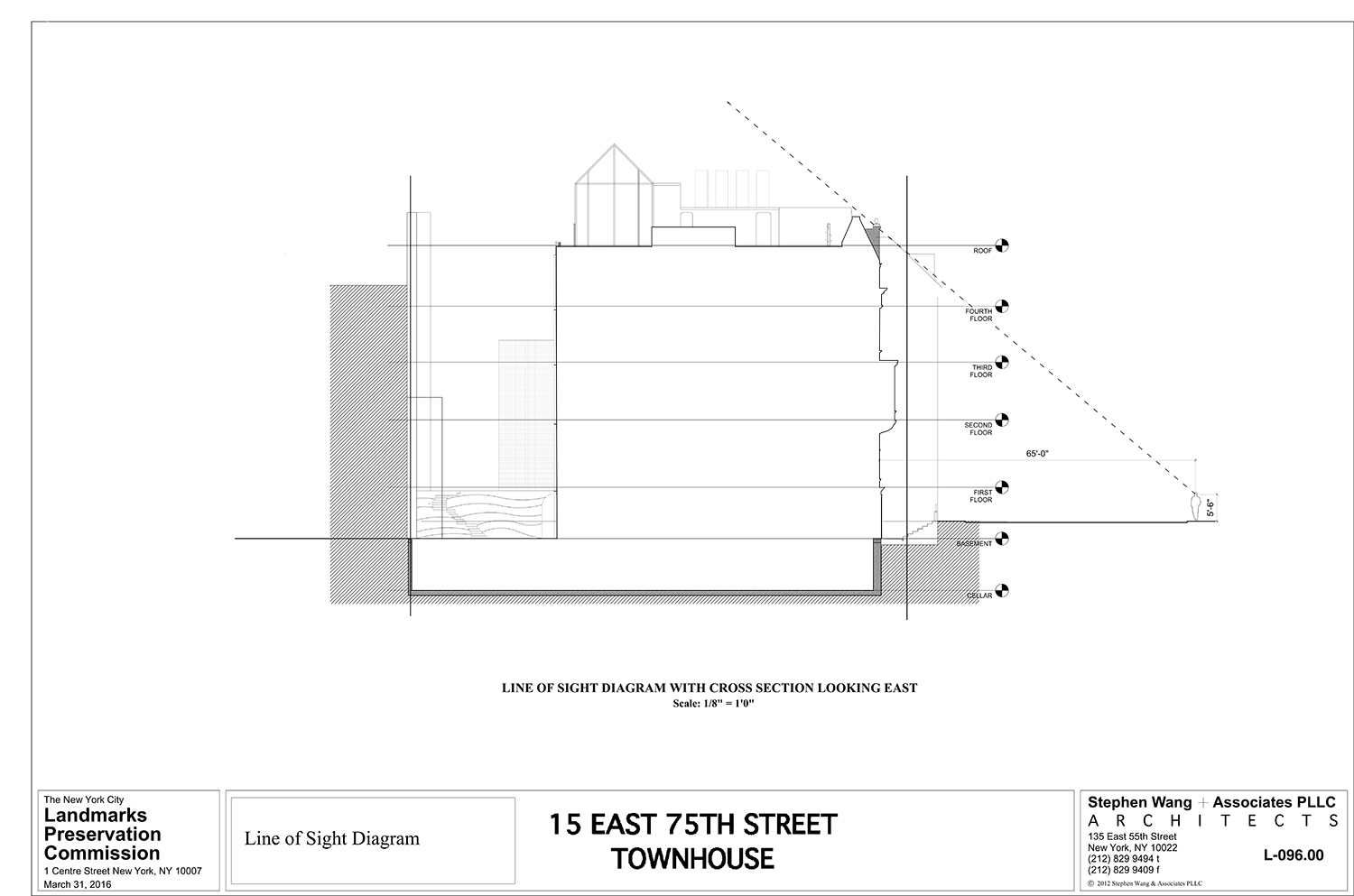

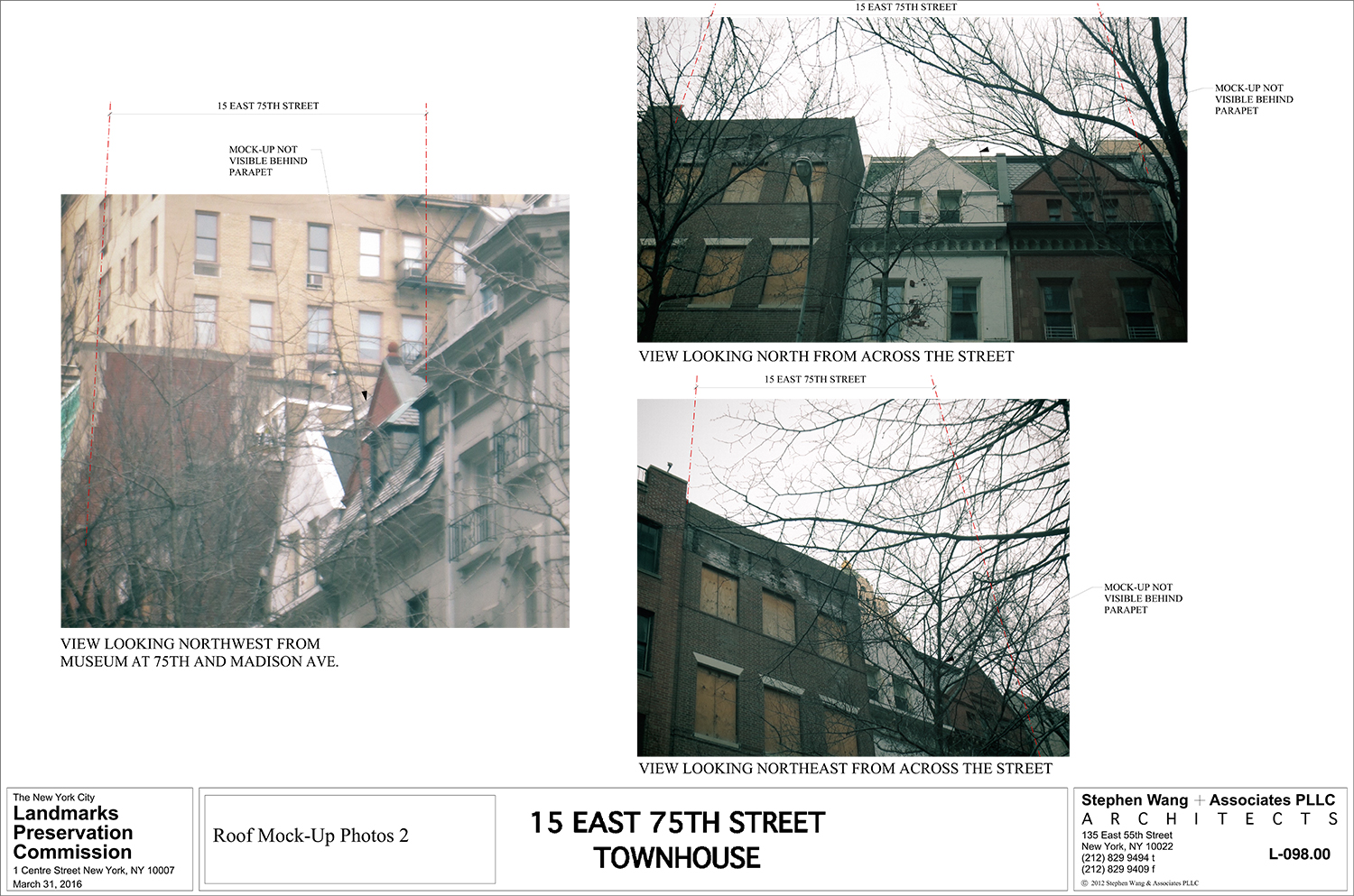

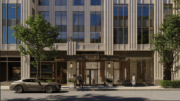
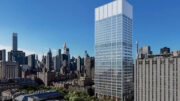
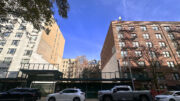
parti walls, not party.
Wonderful many colors and architectures in one, with wood or brick also concrete.
What a colossal effort, and sensitive design, all for Landmarks to make a fairly irrelevant point about the super-rich.